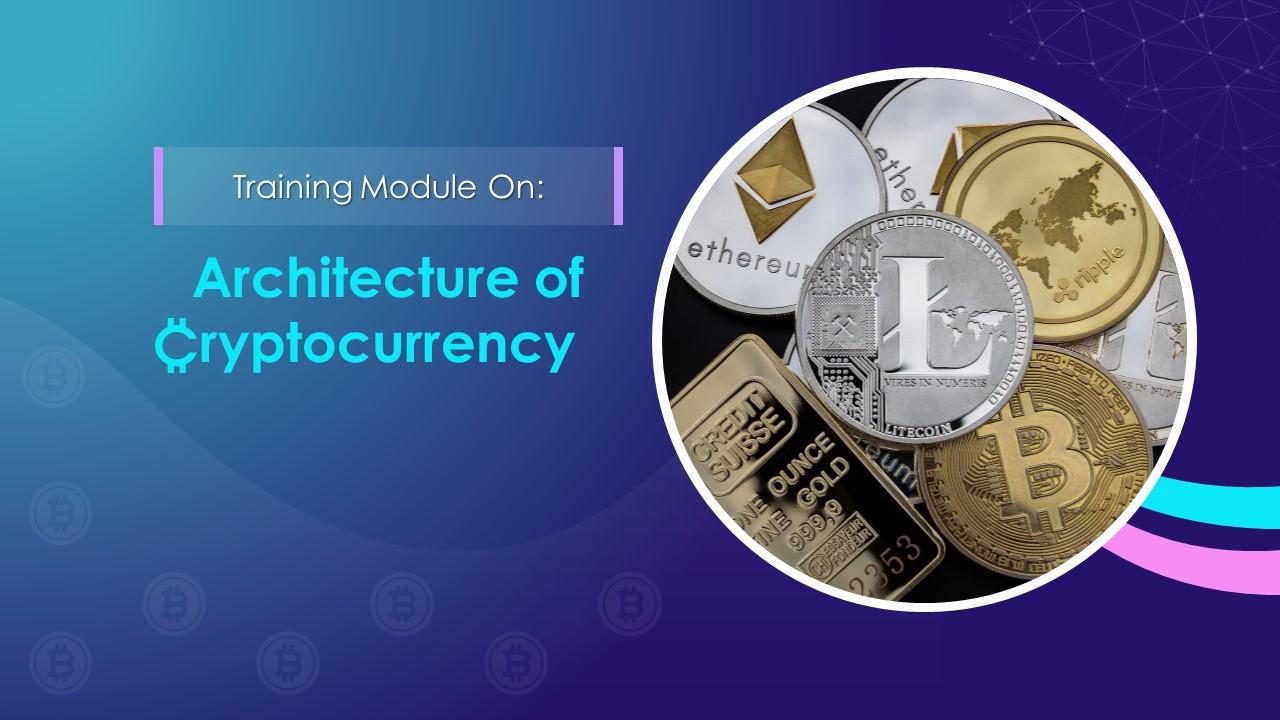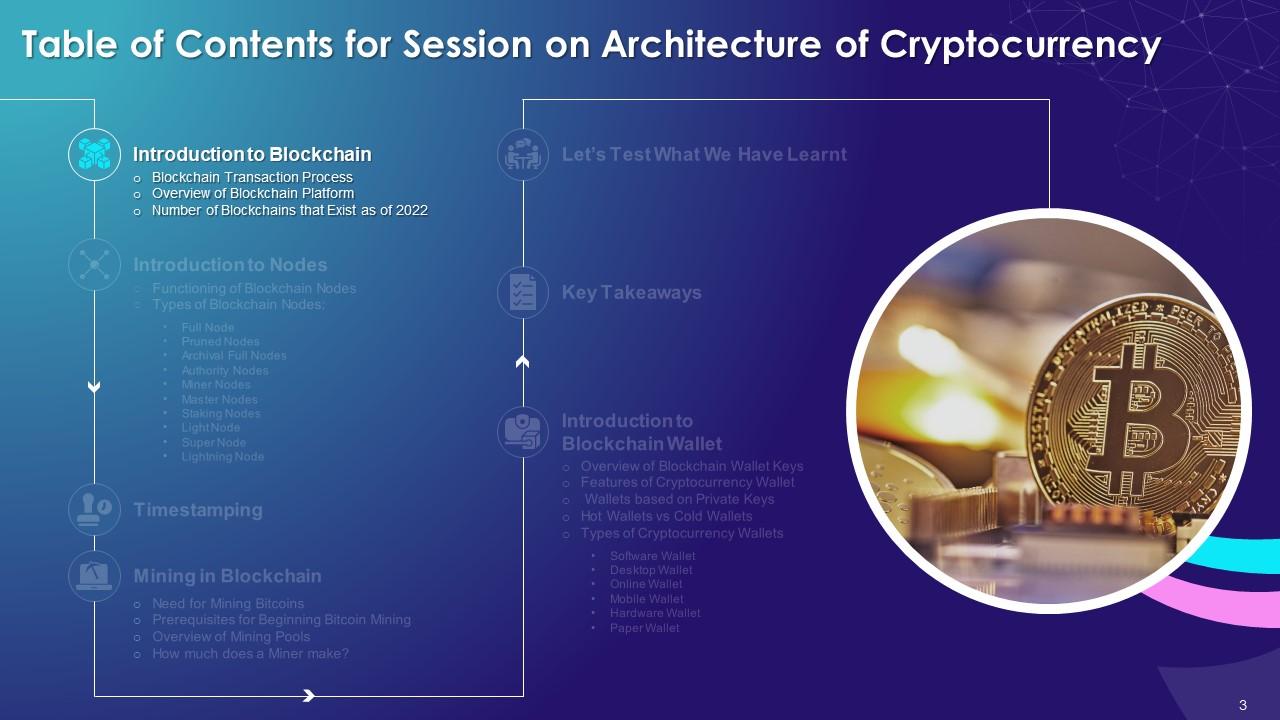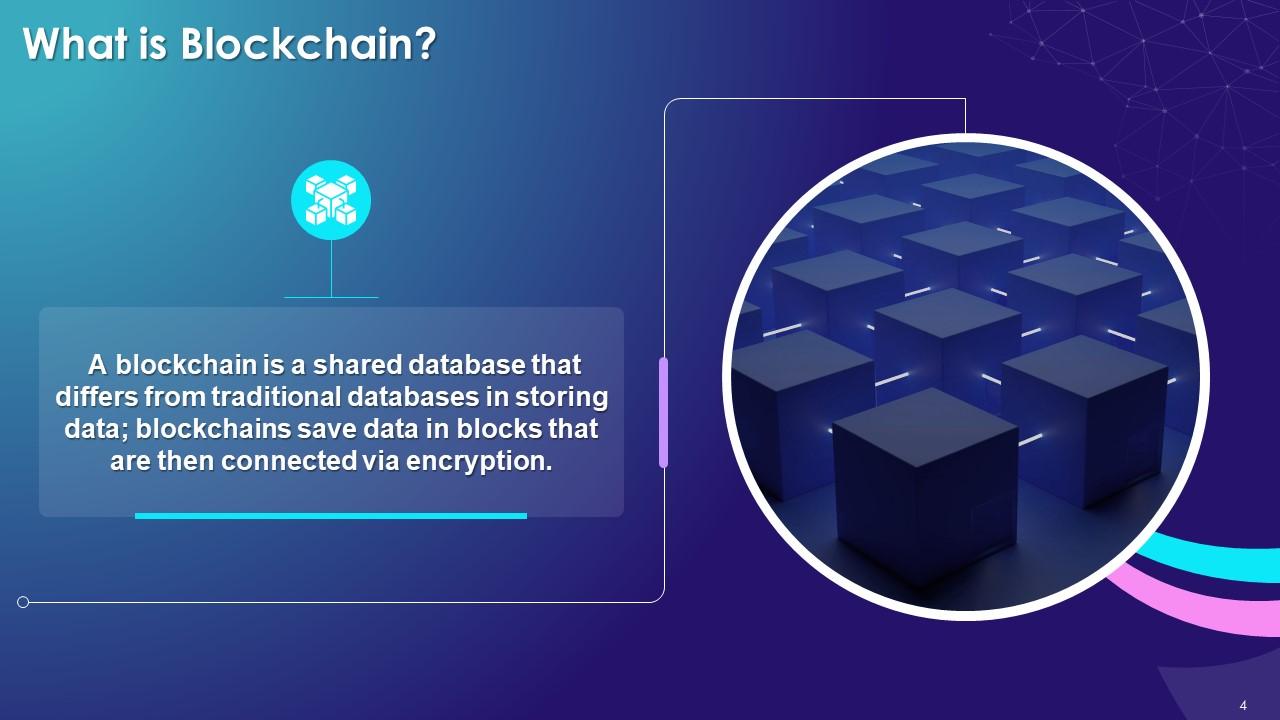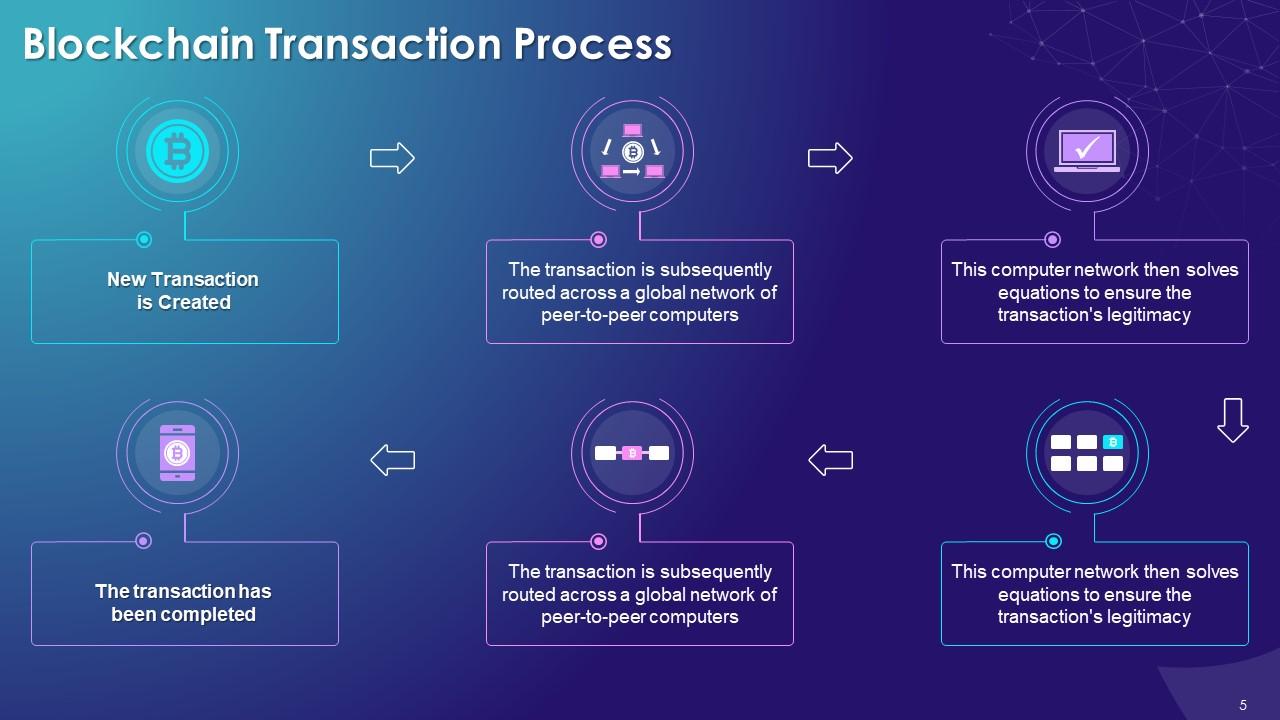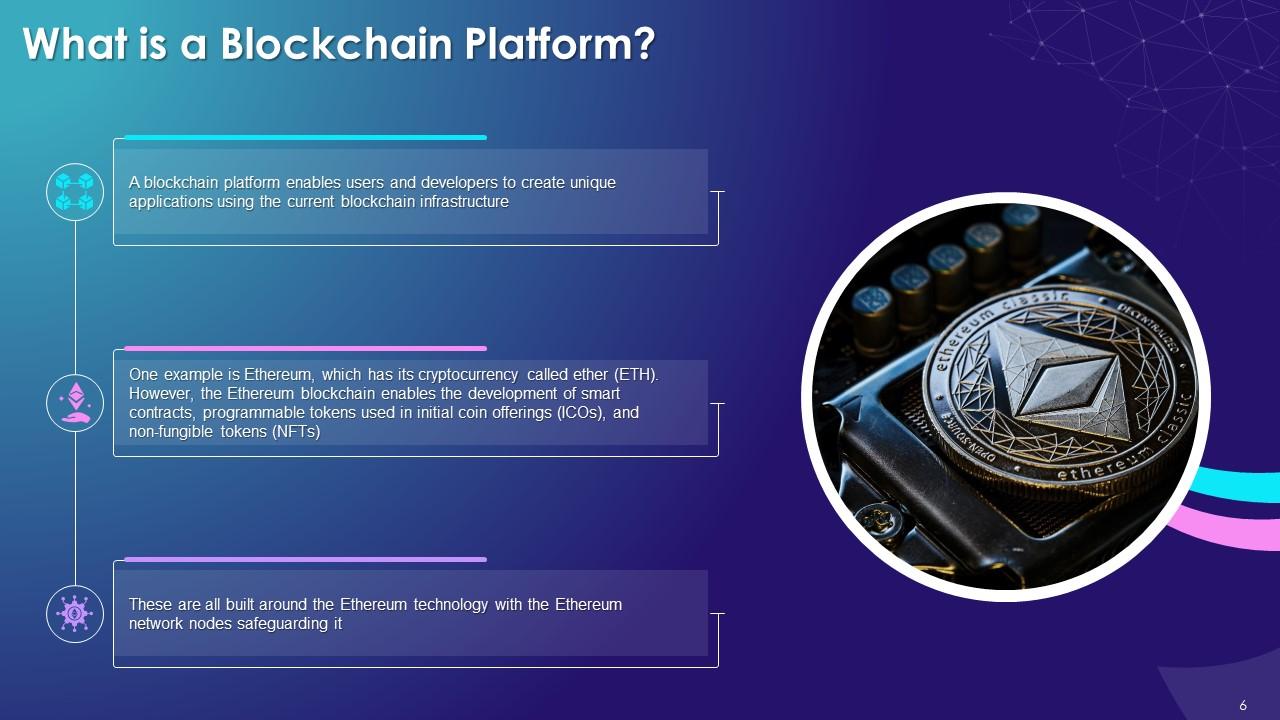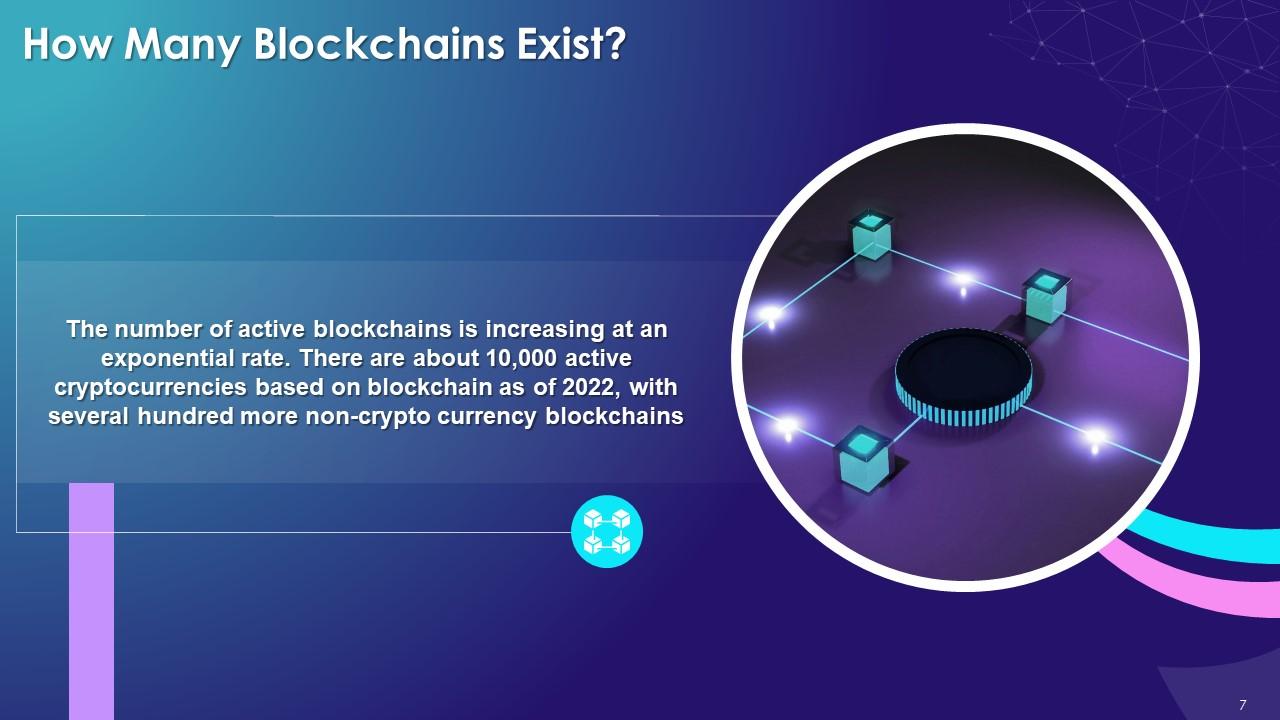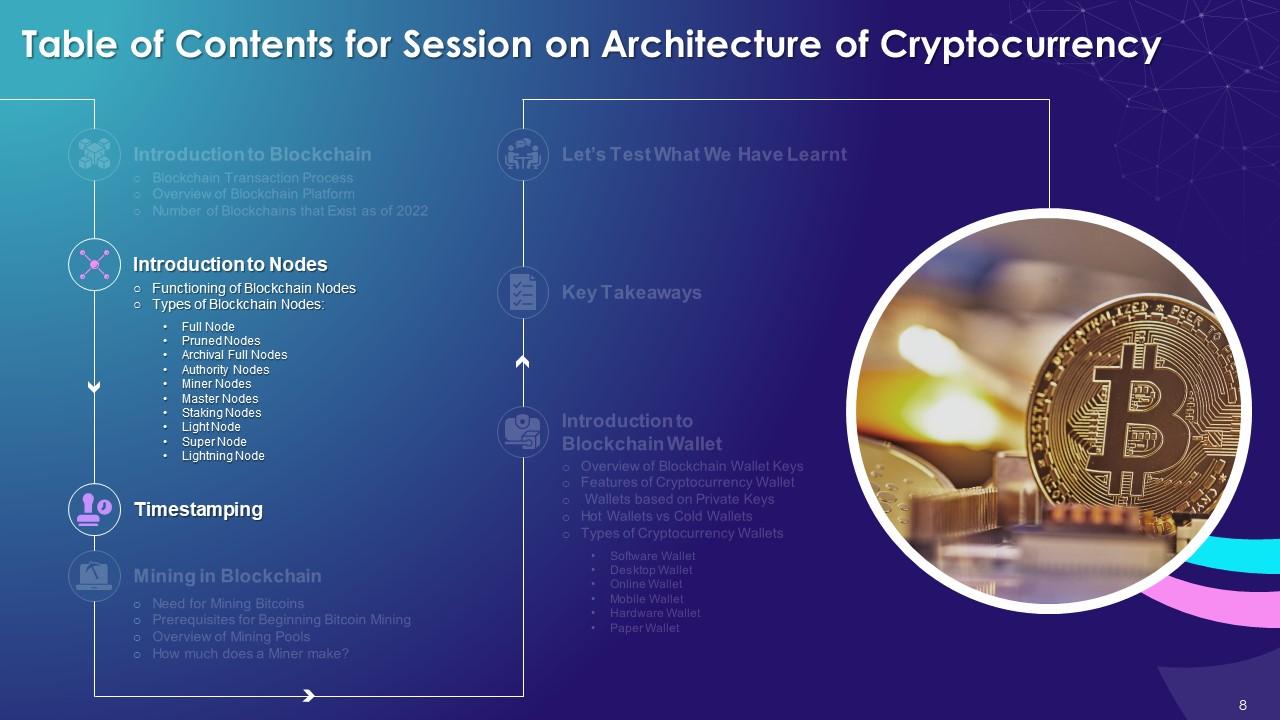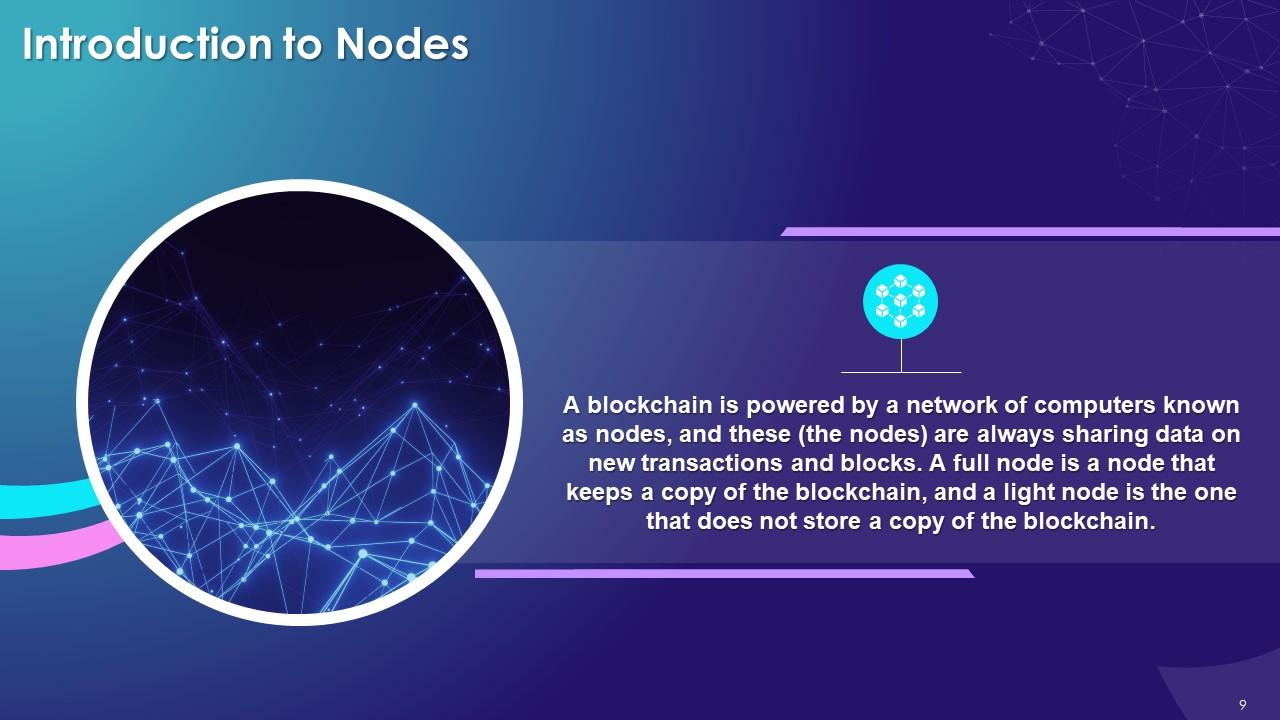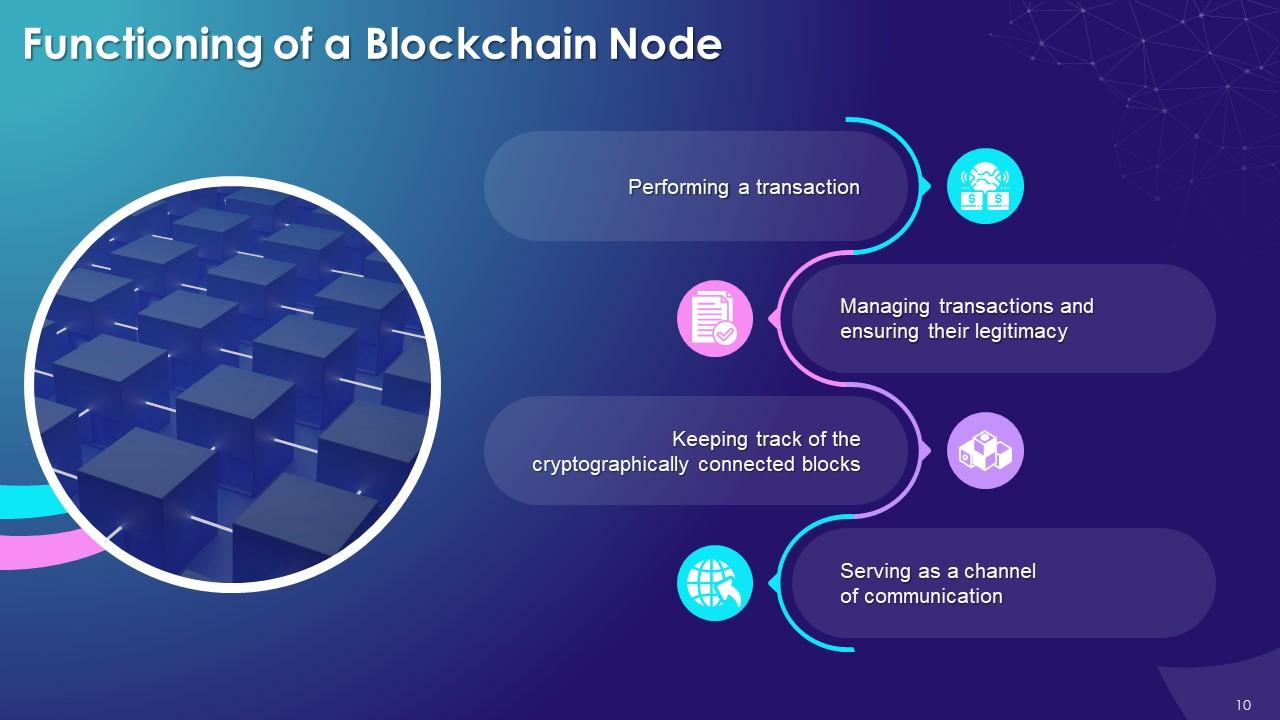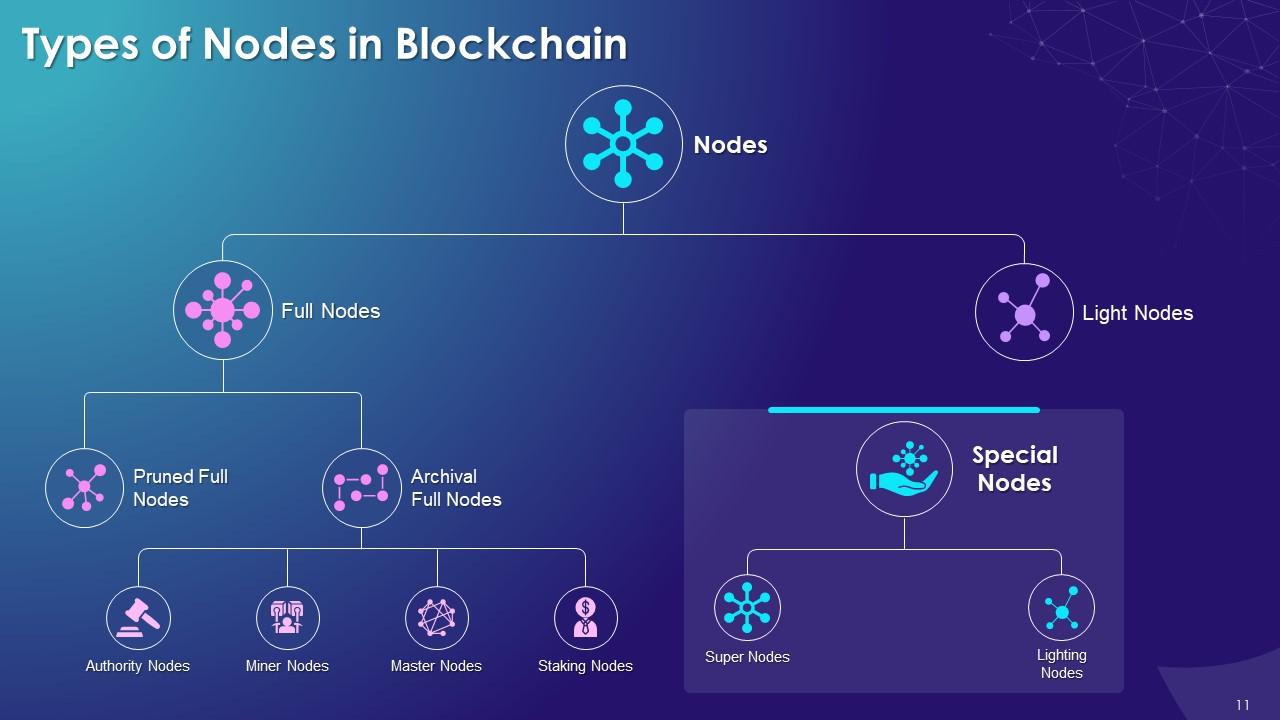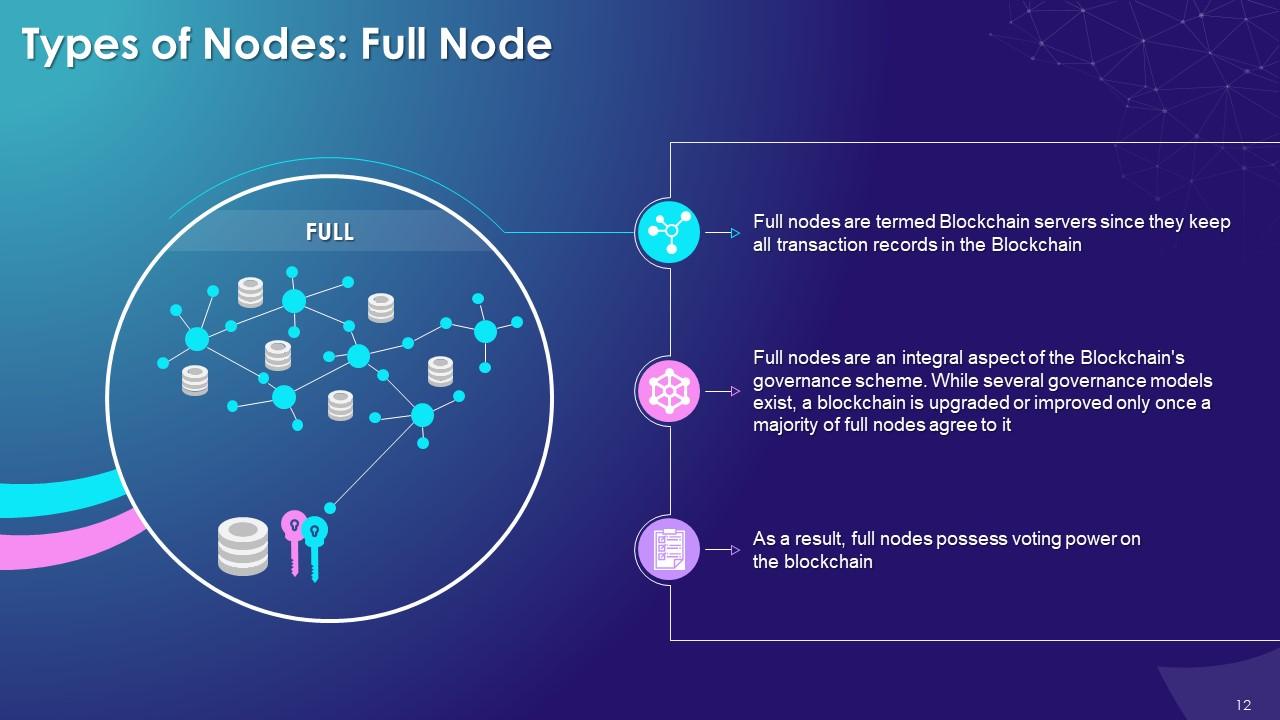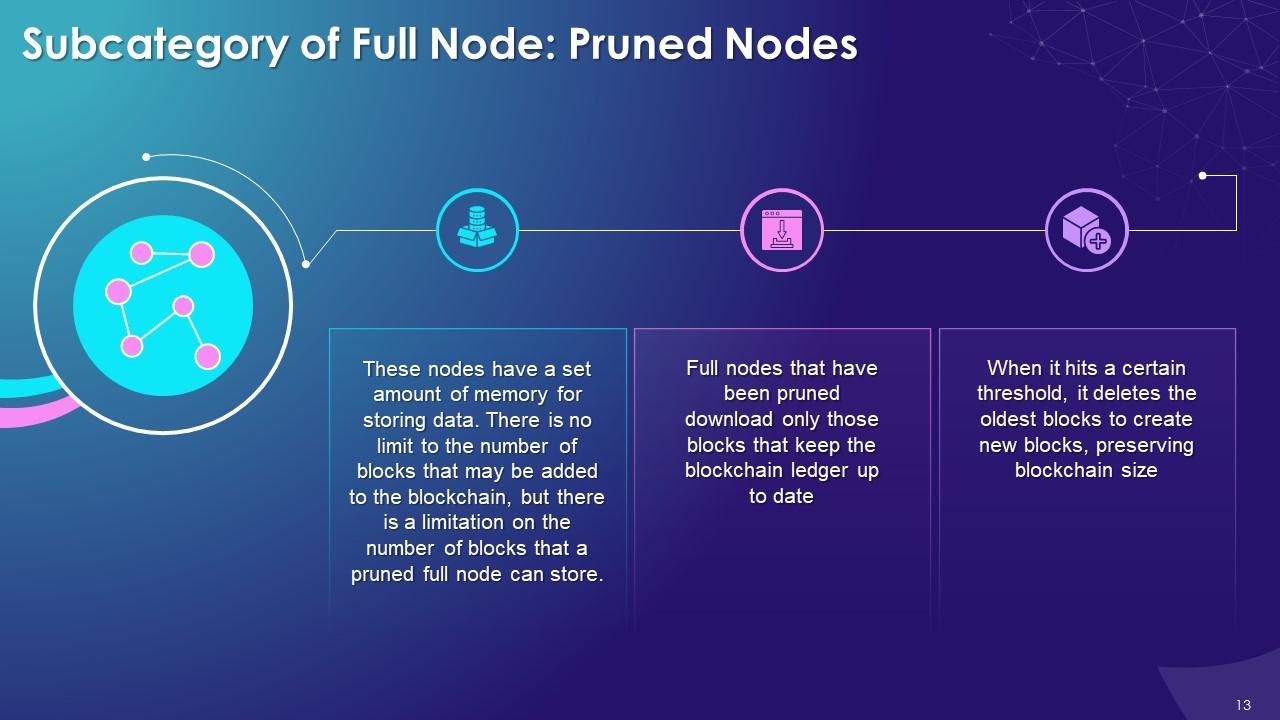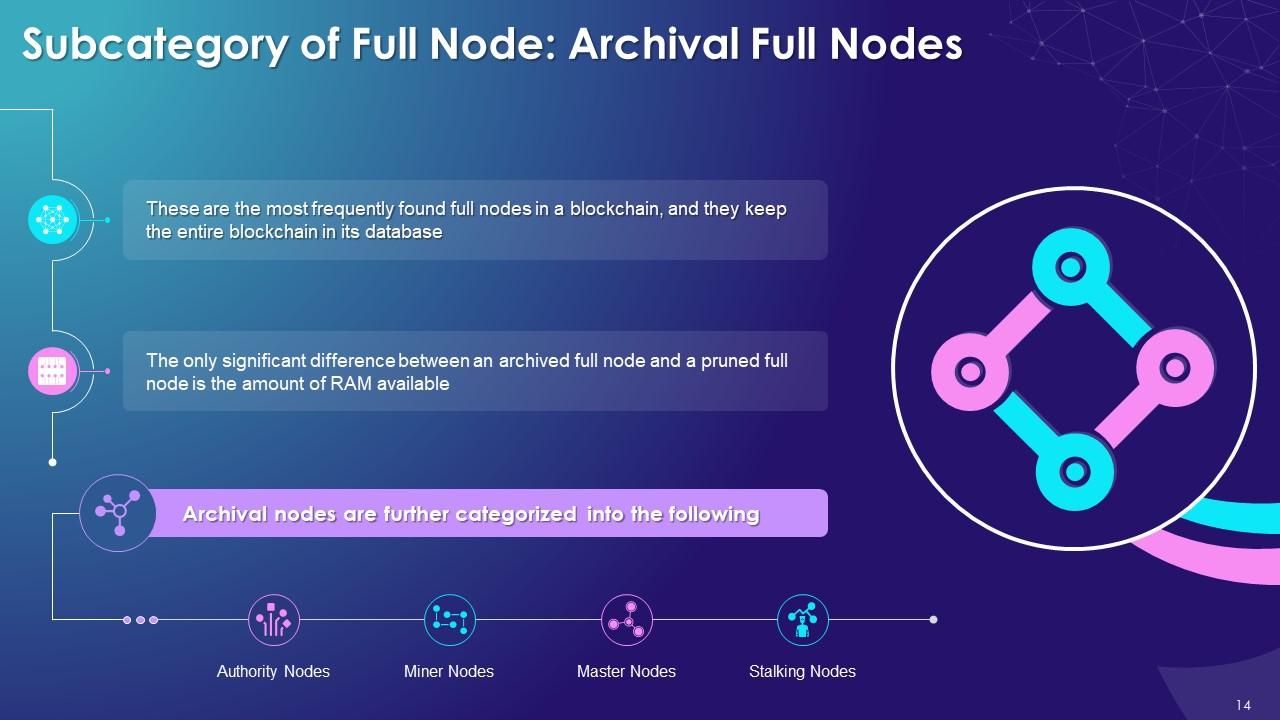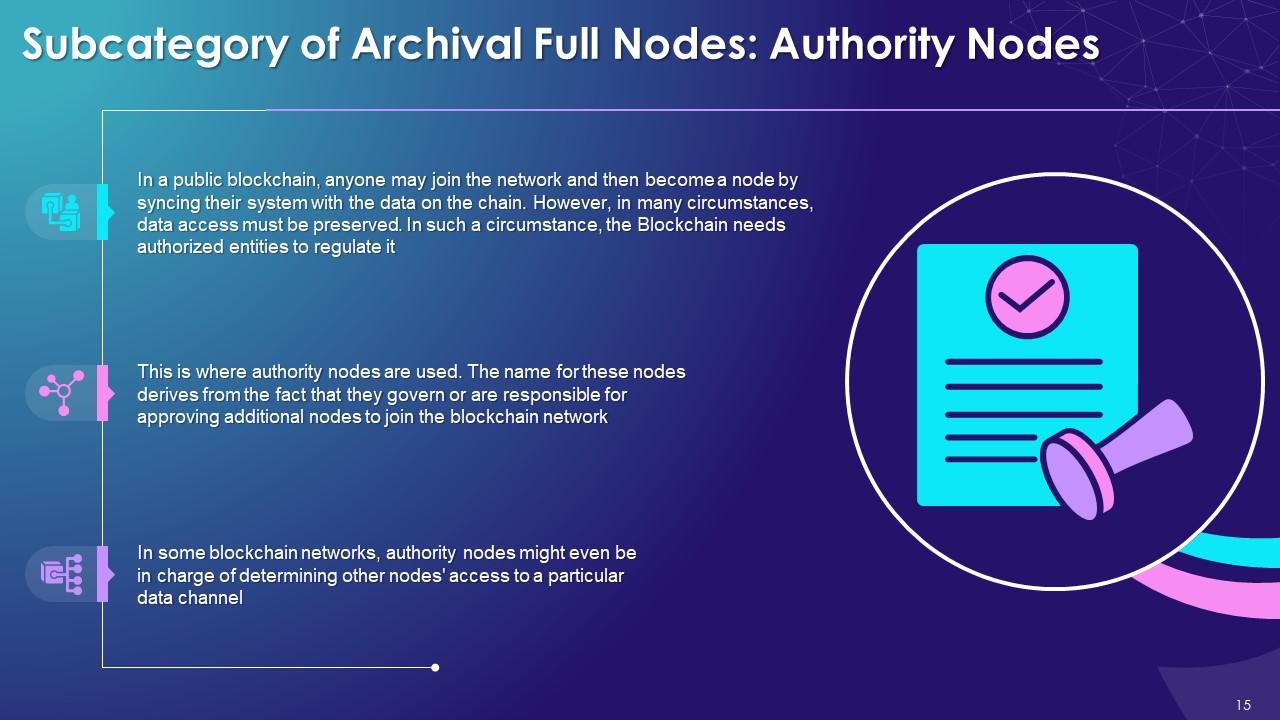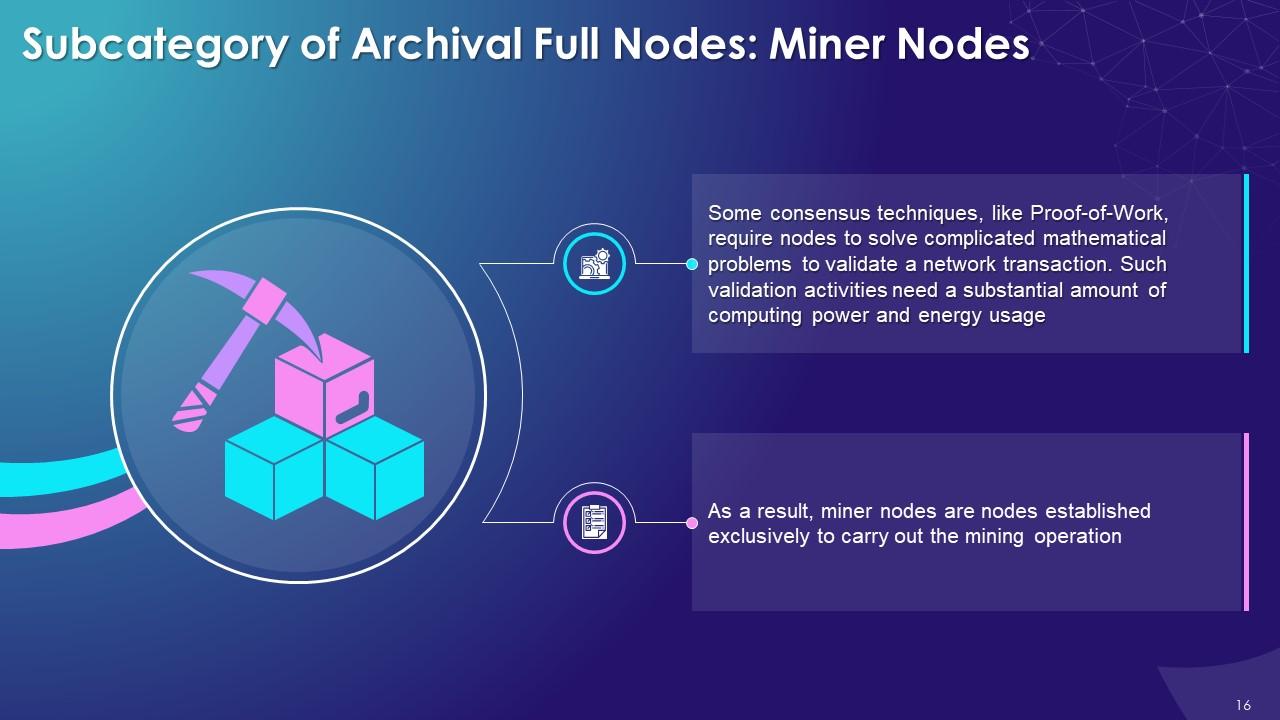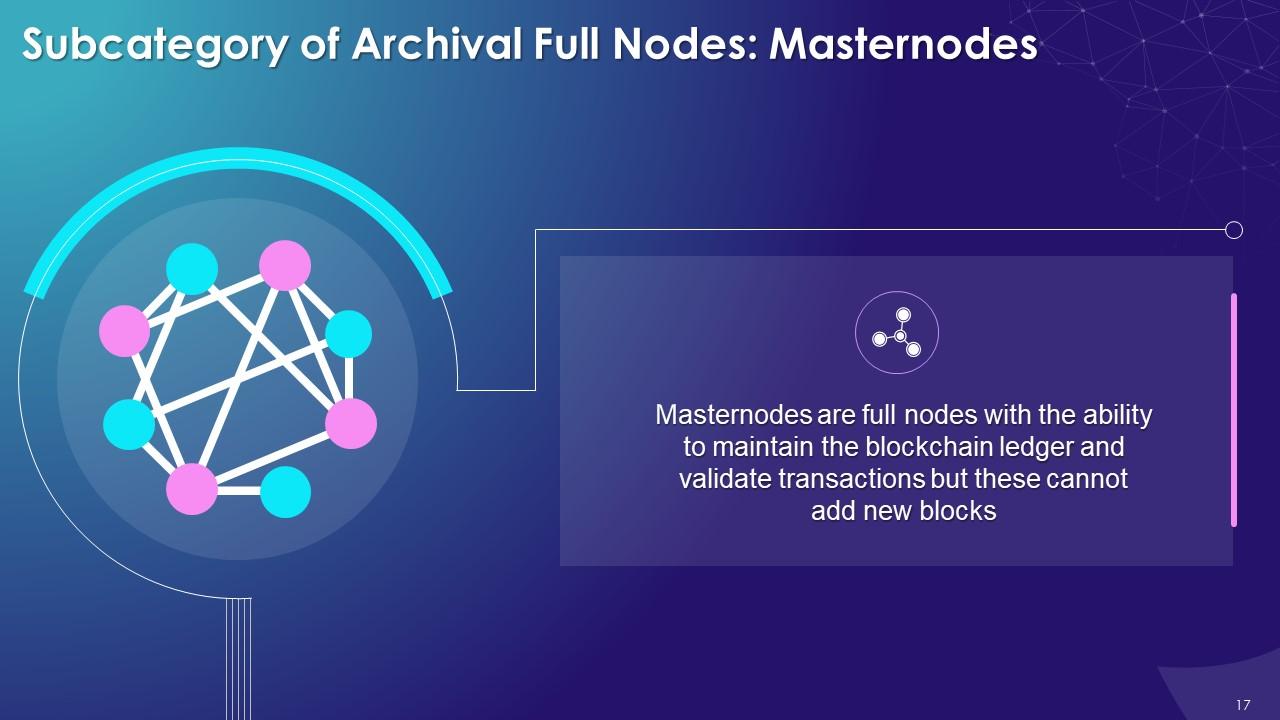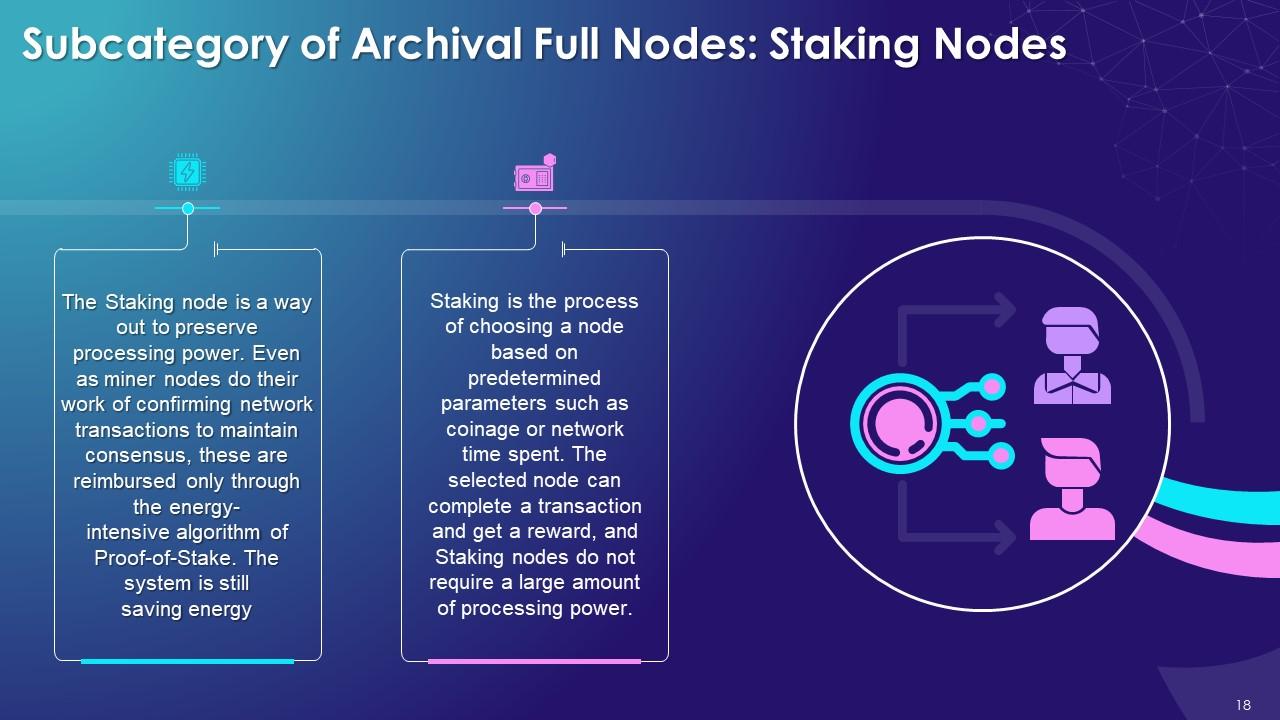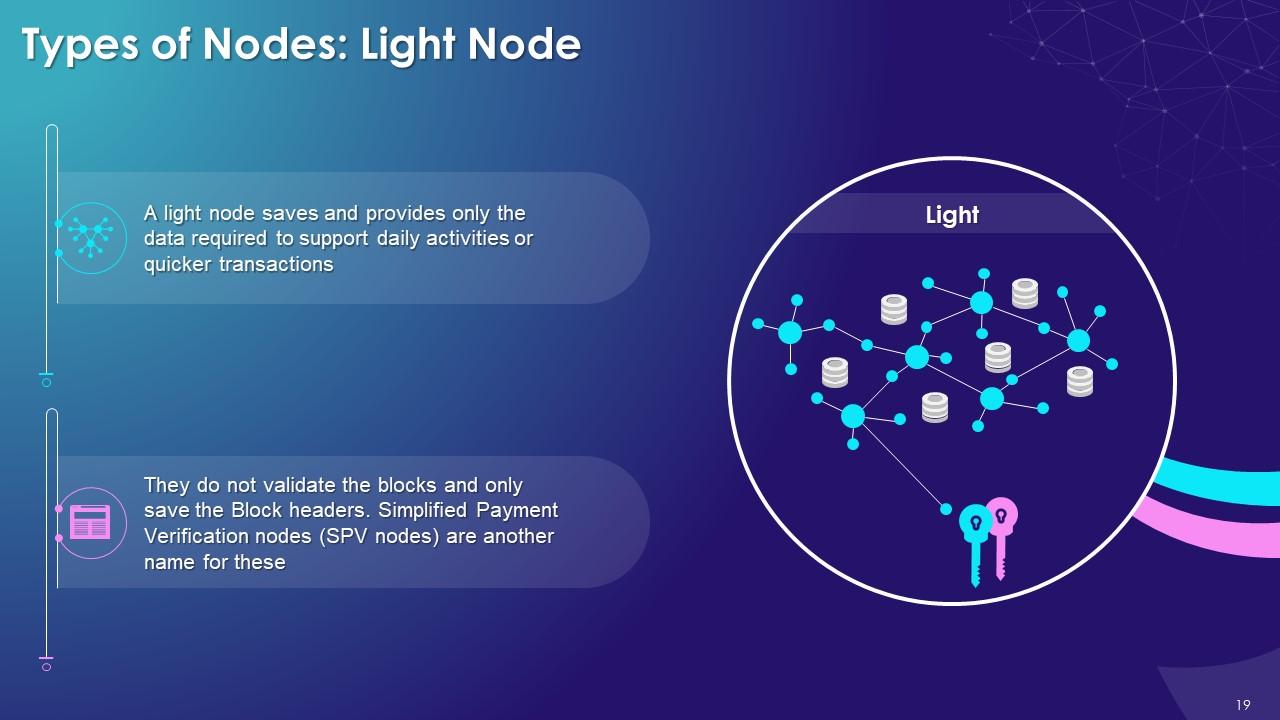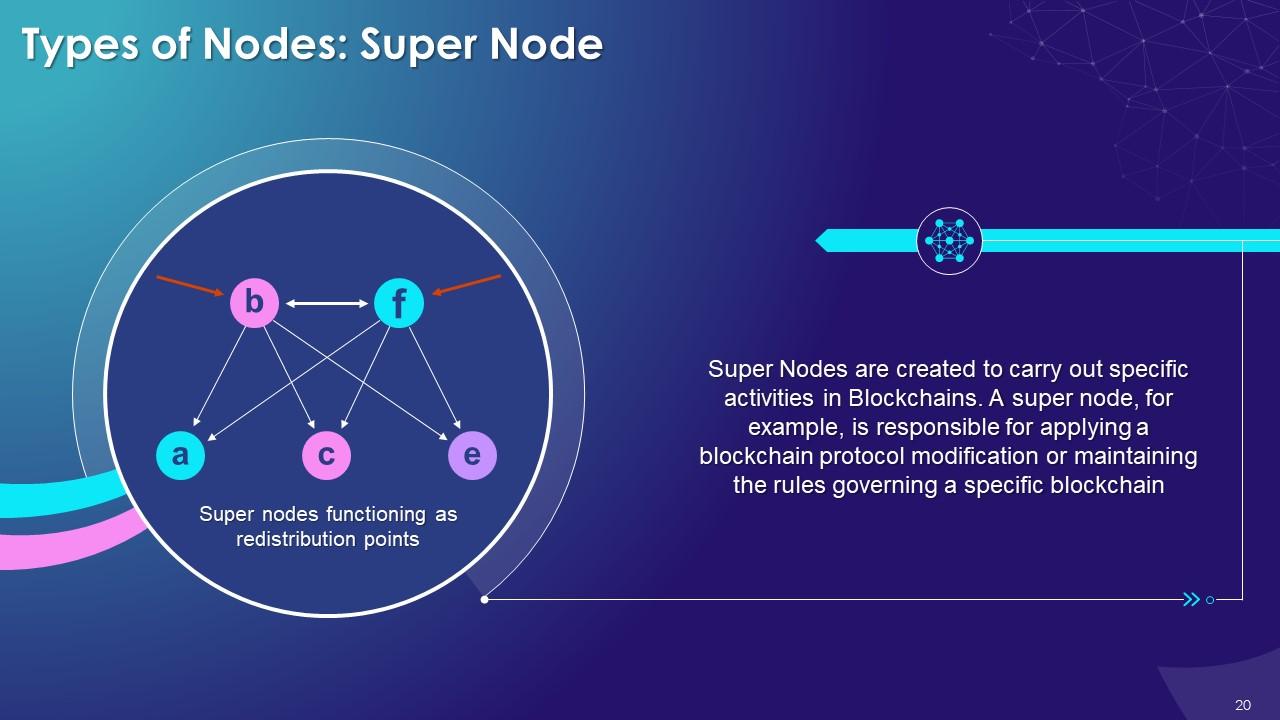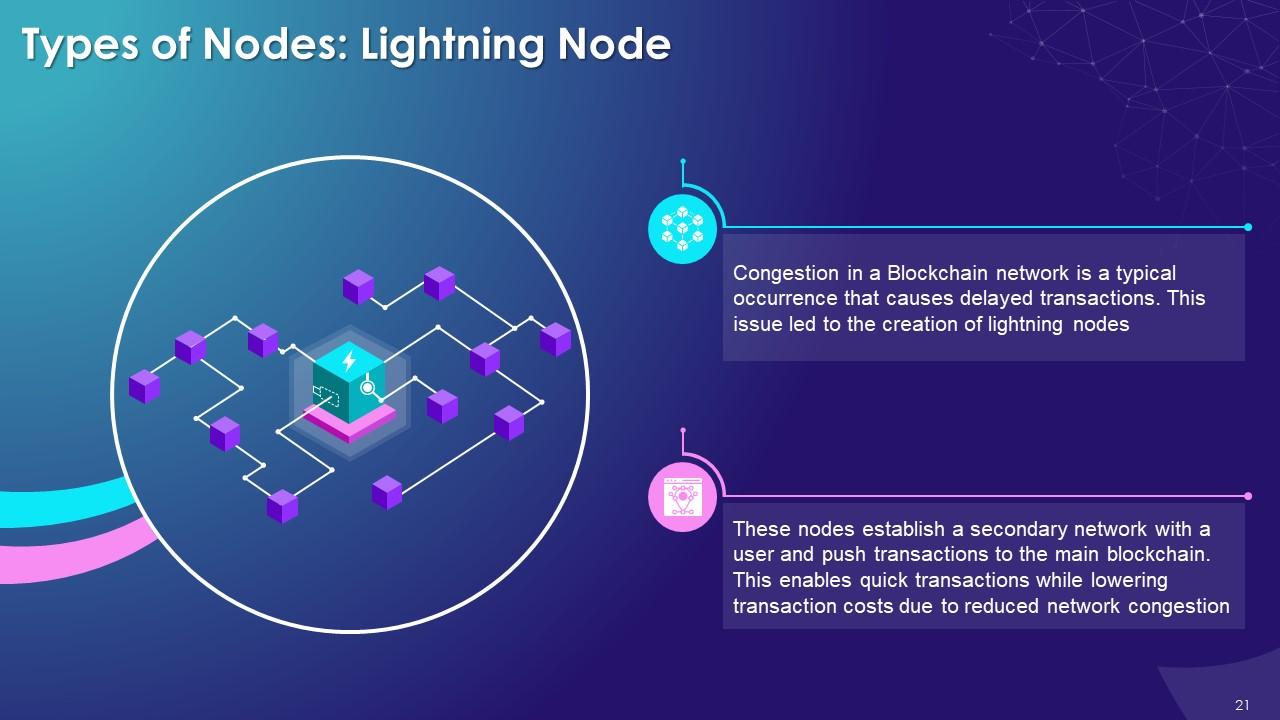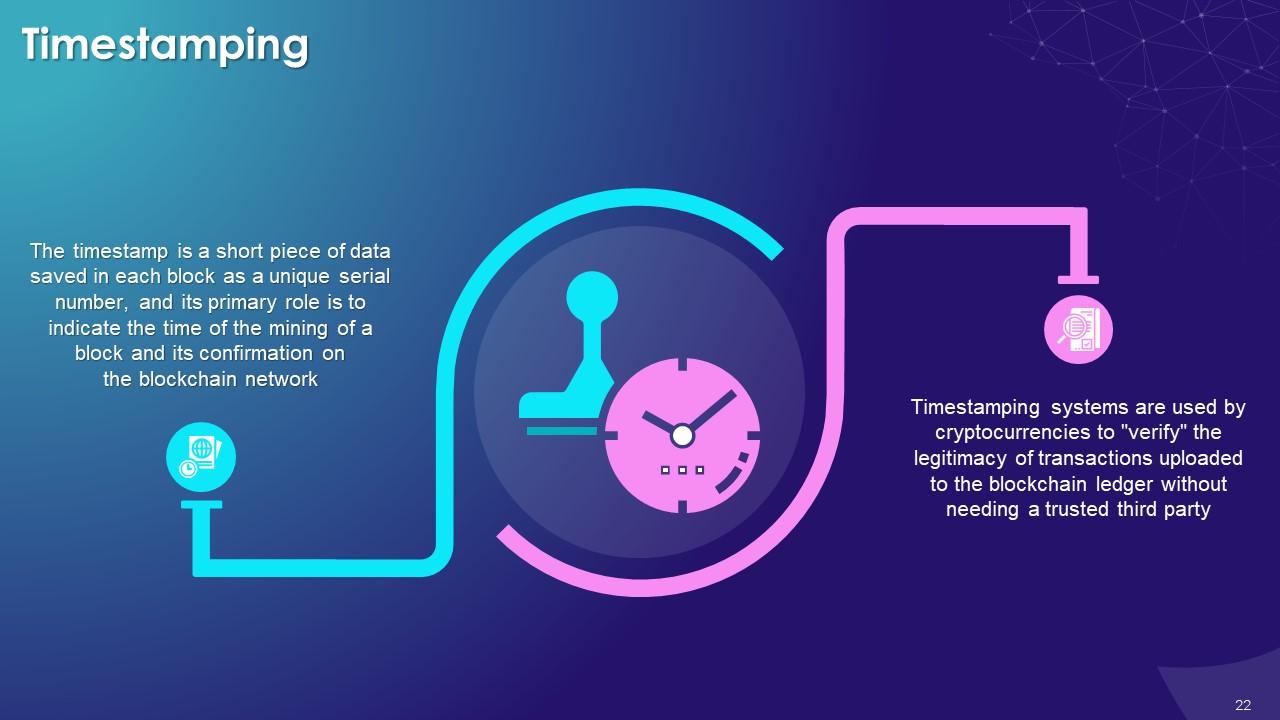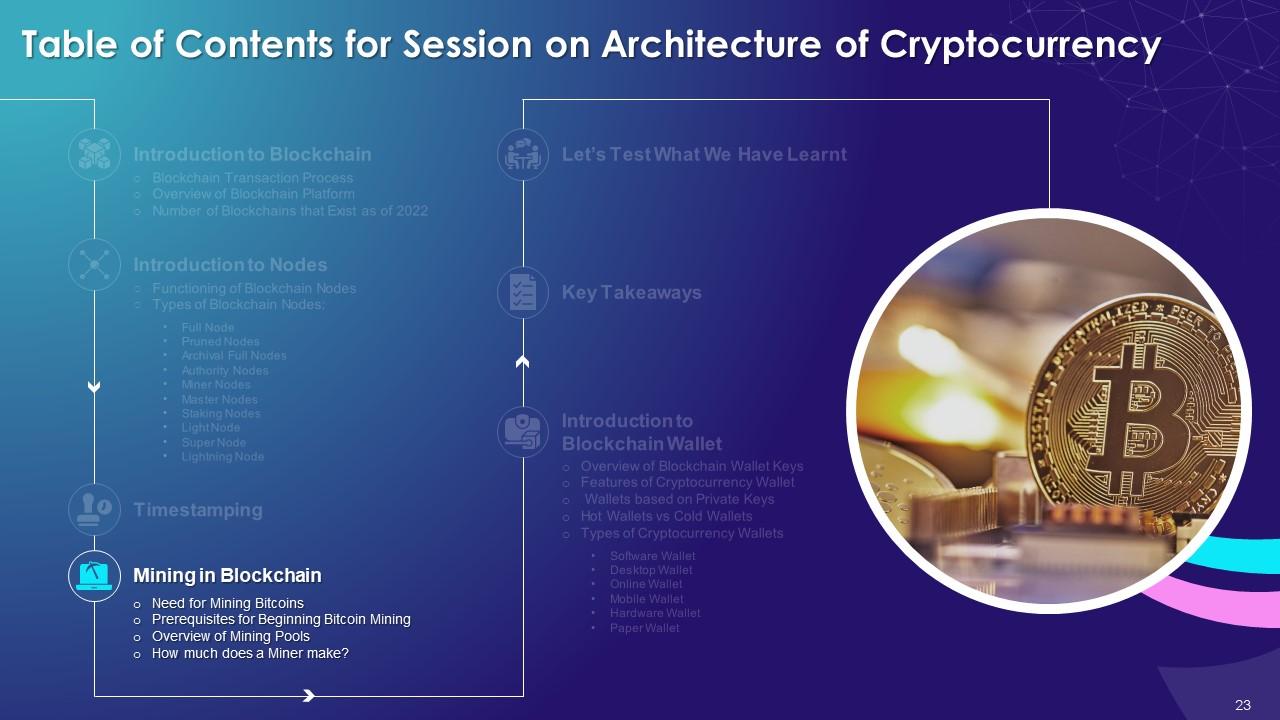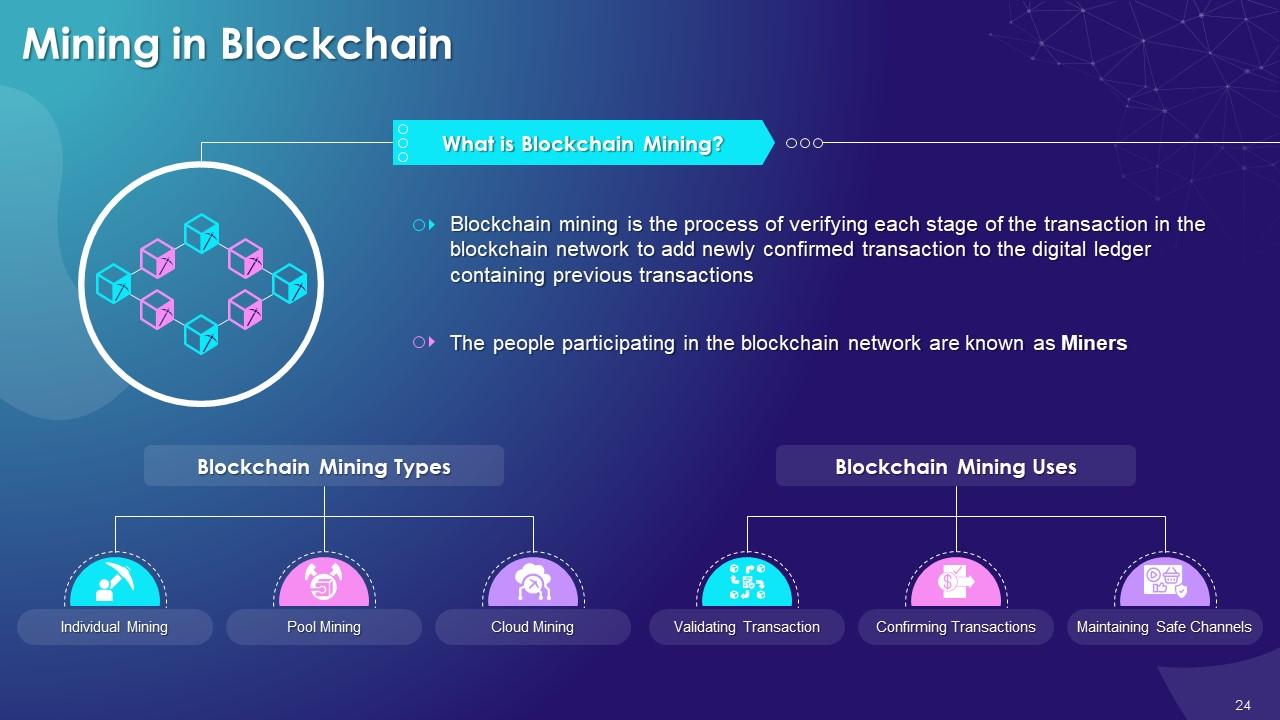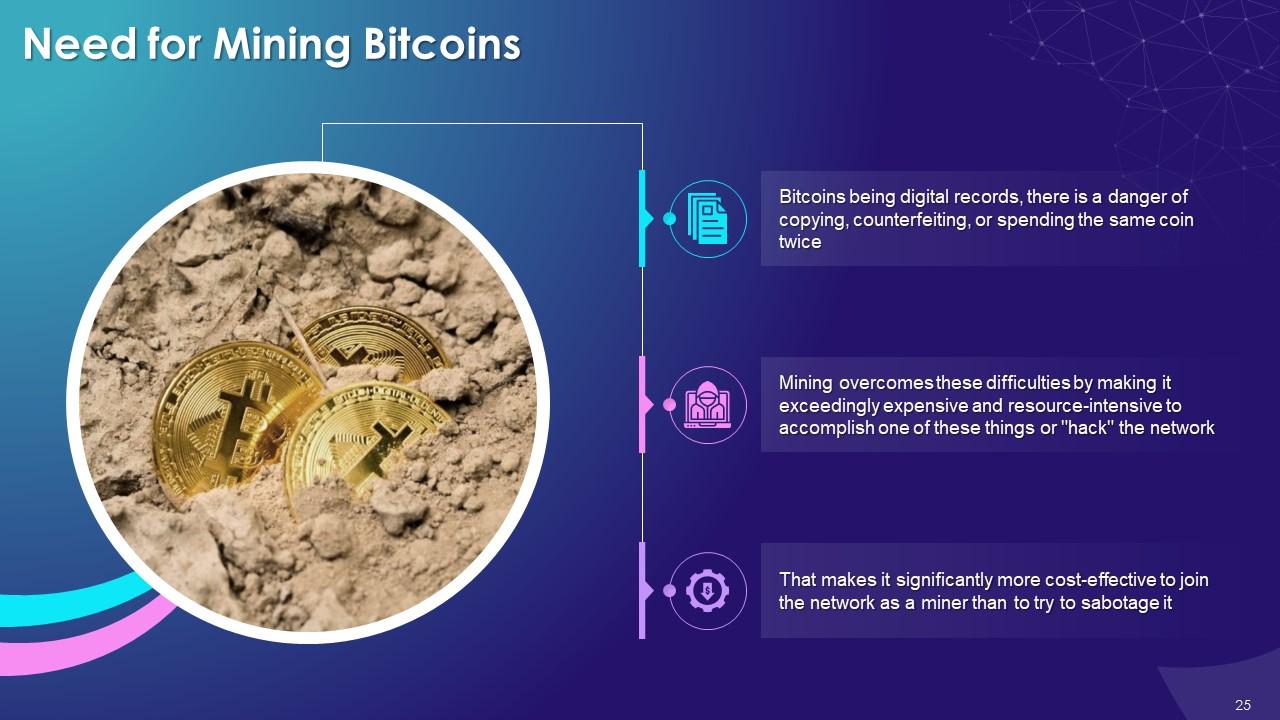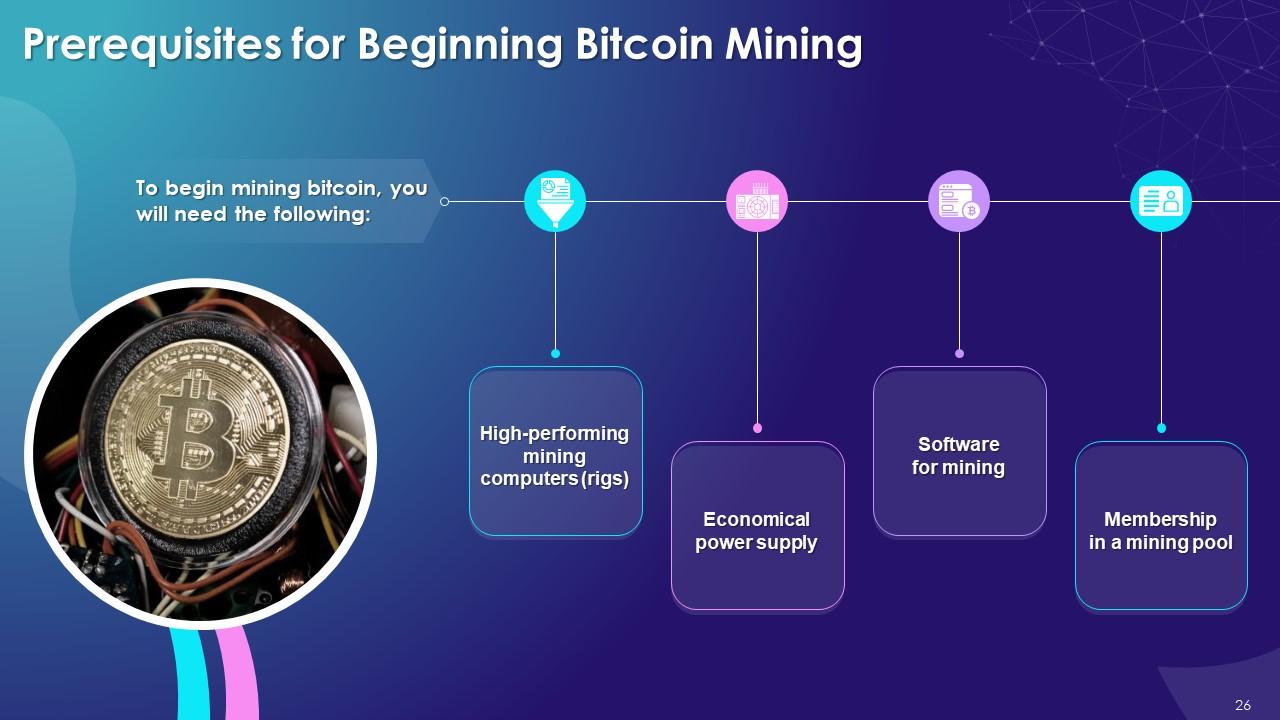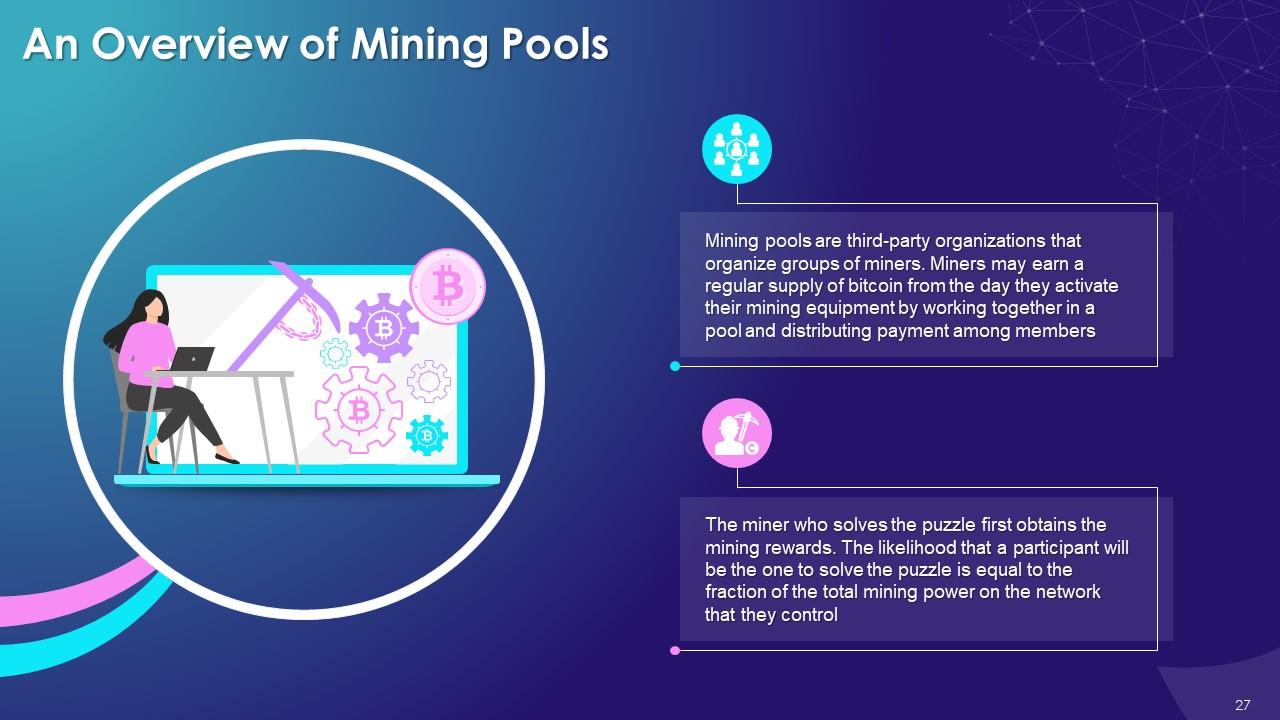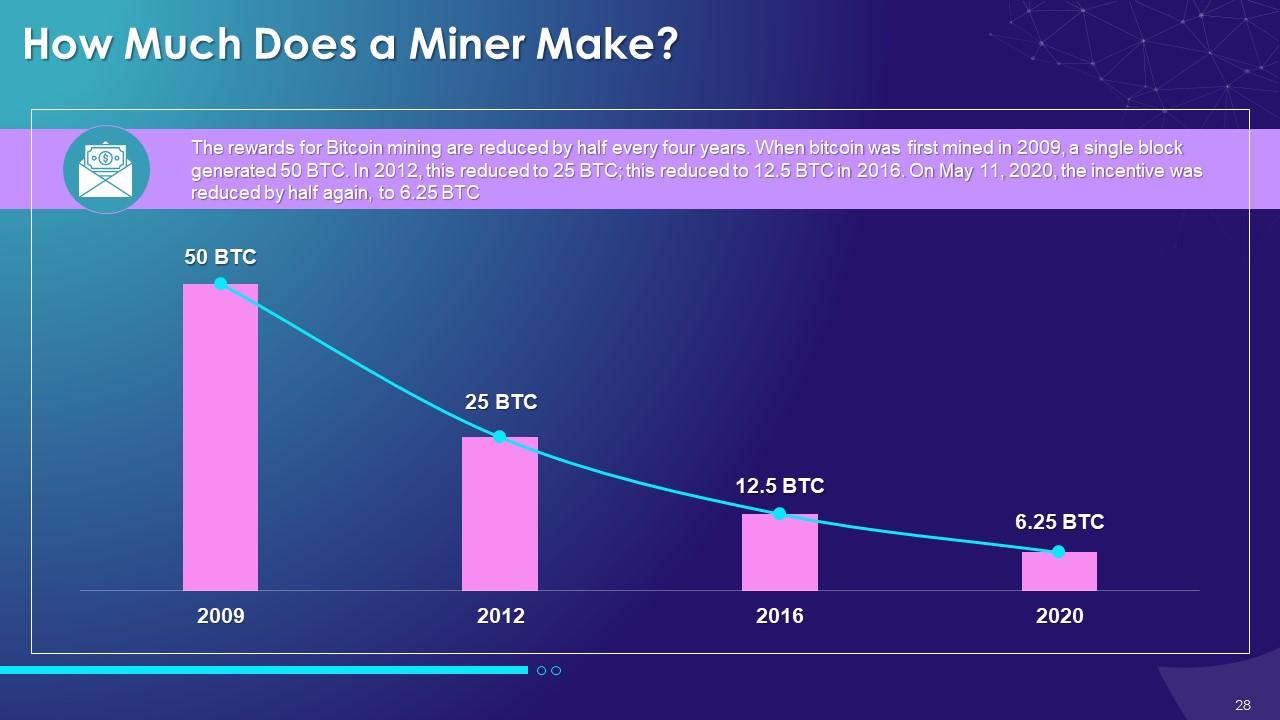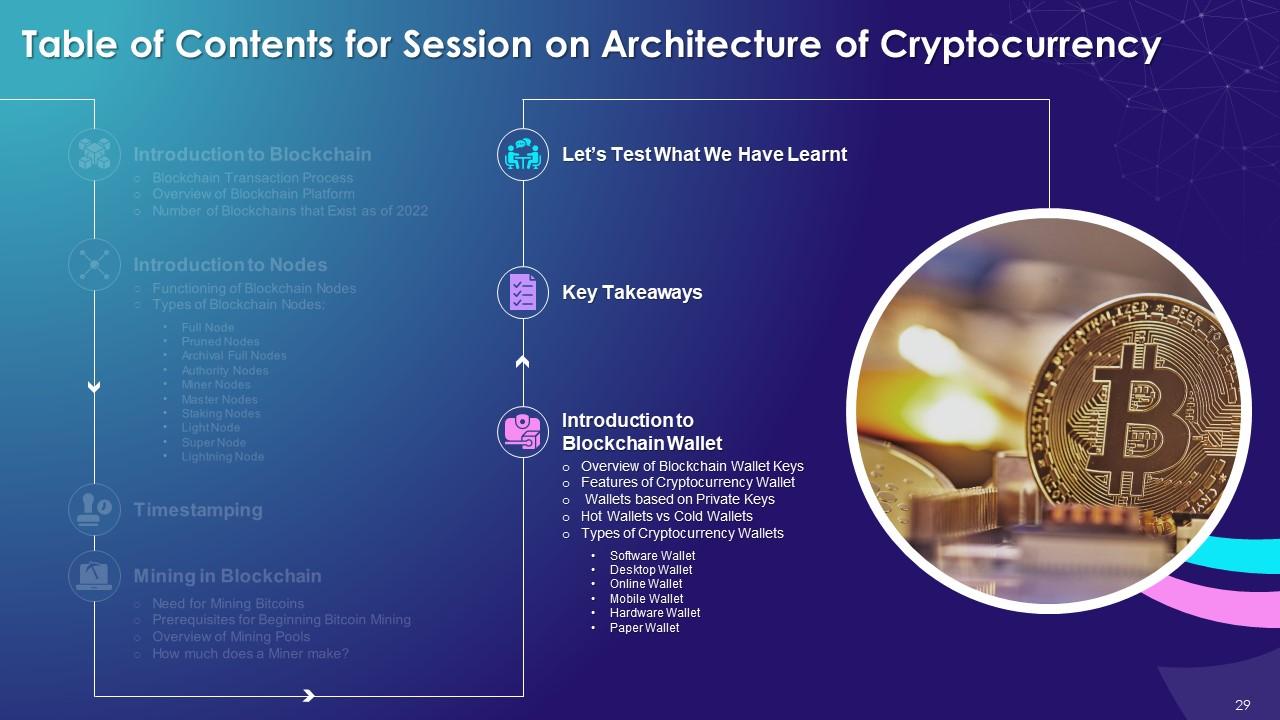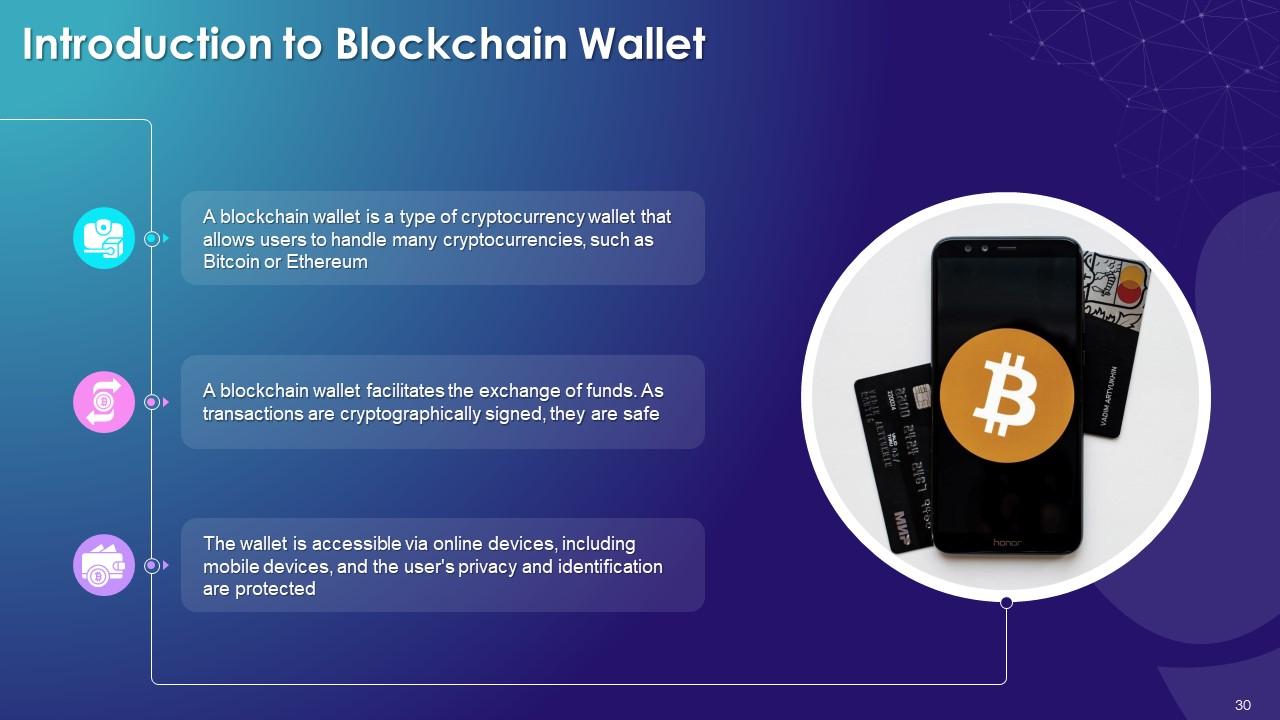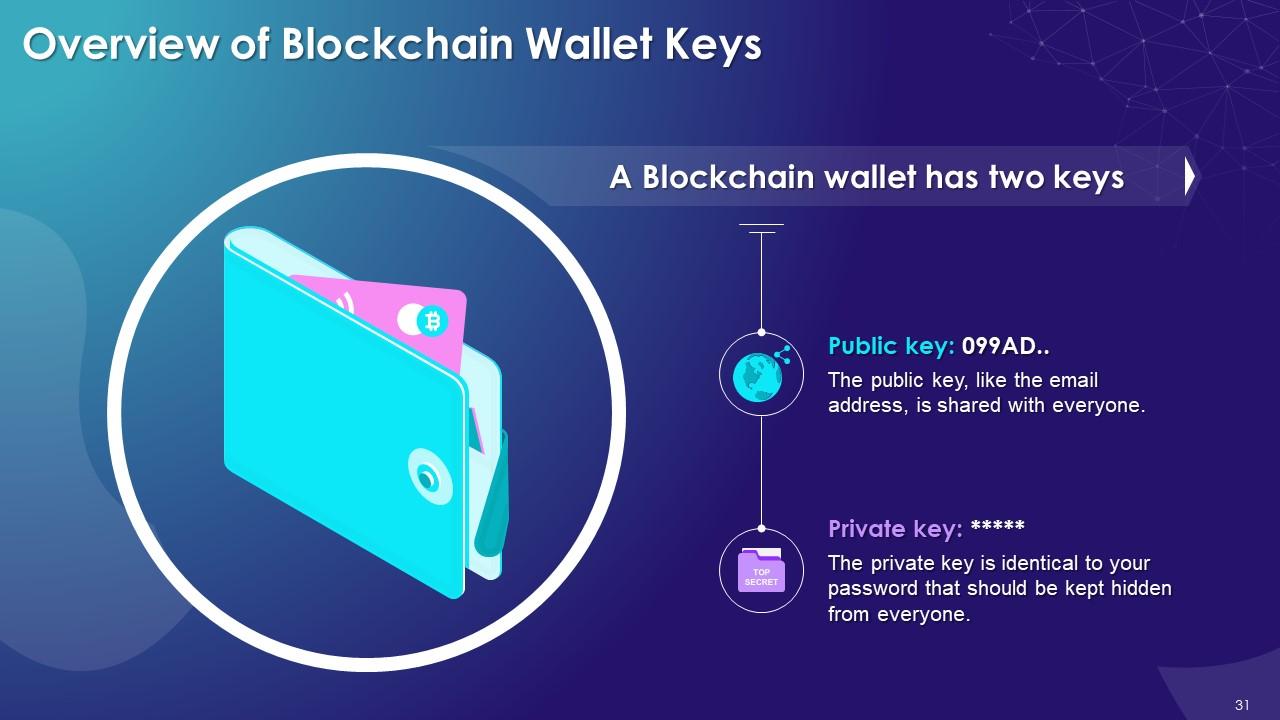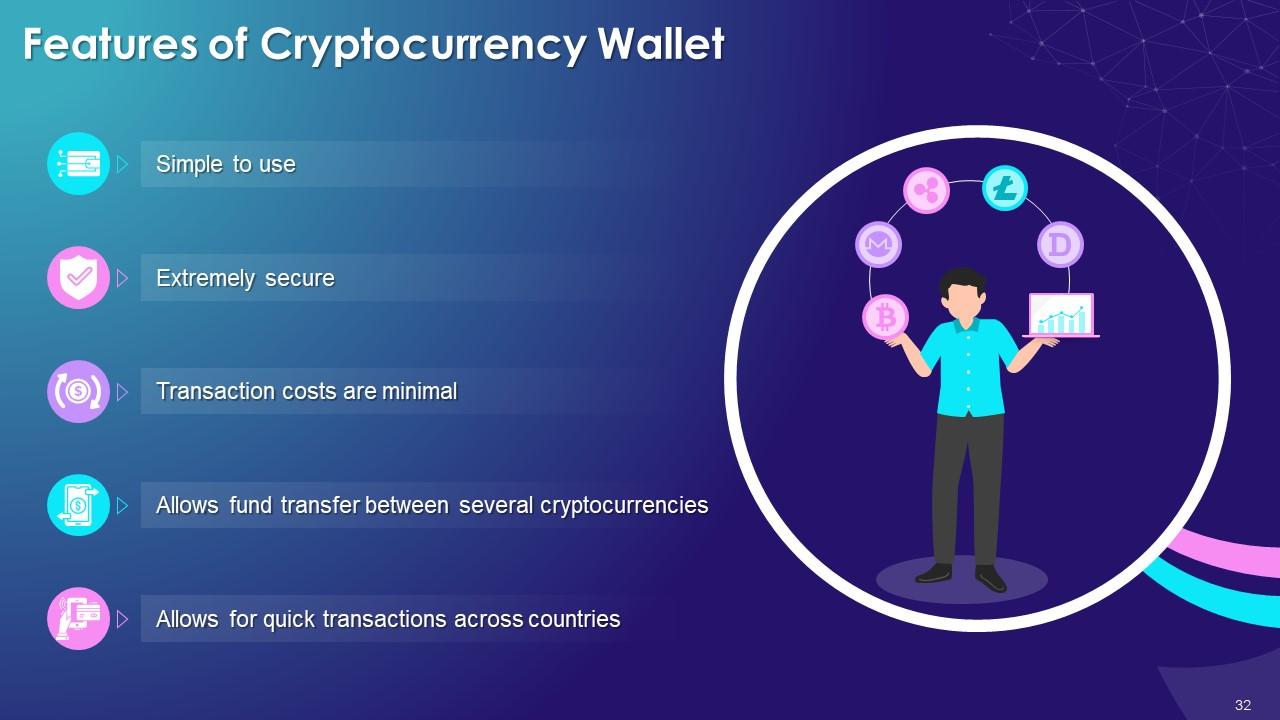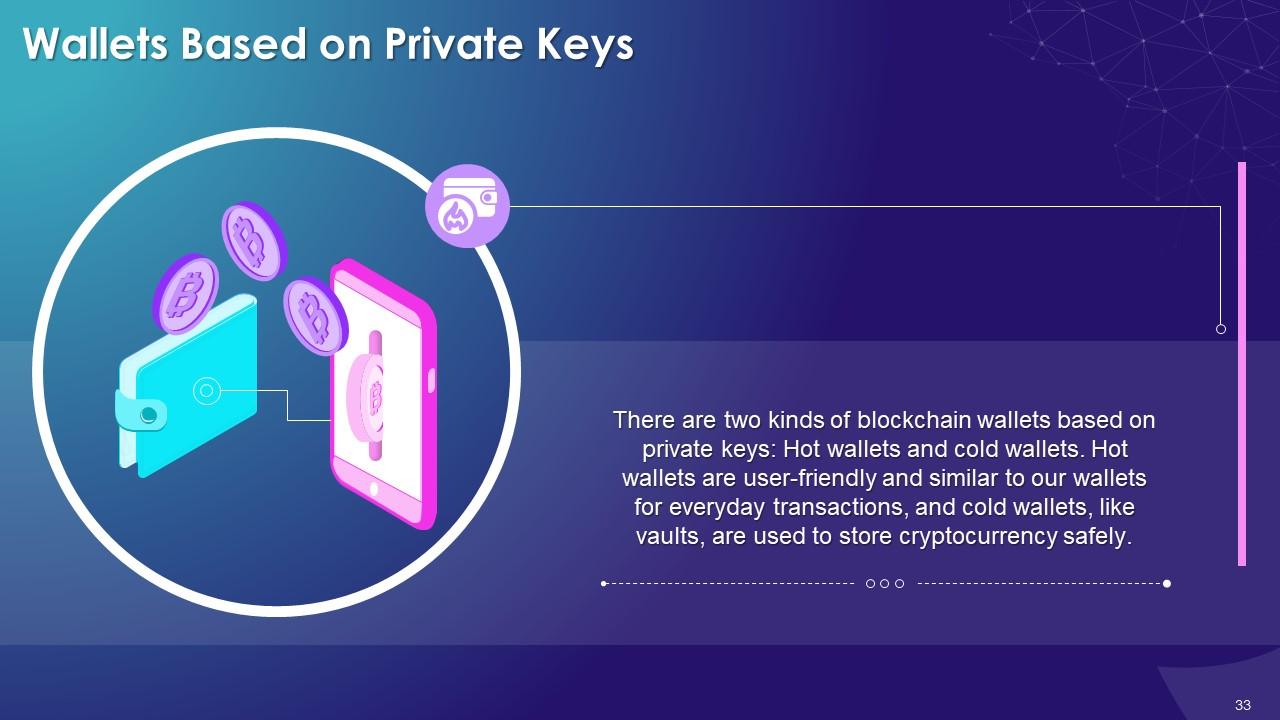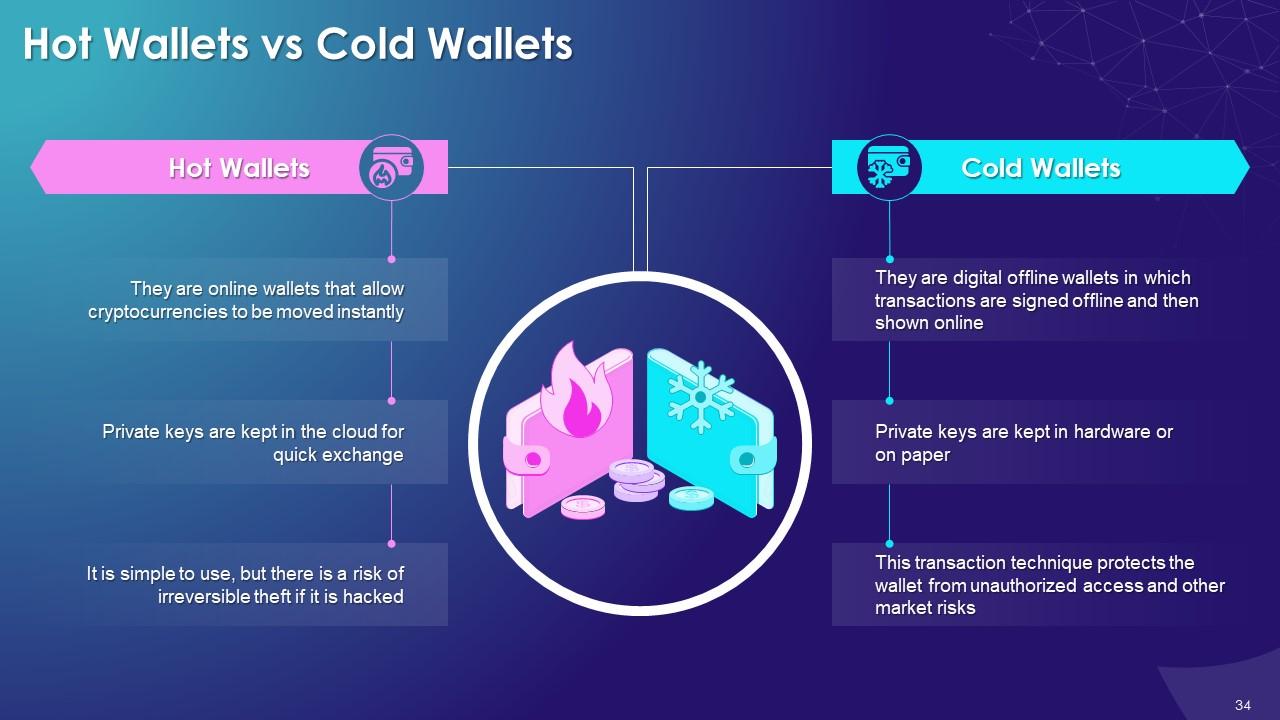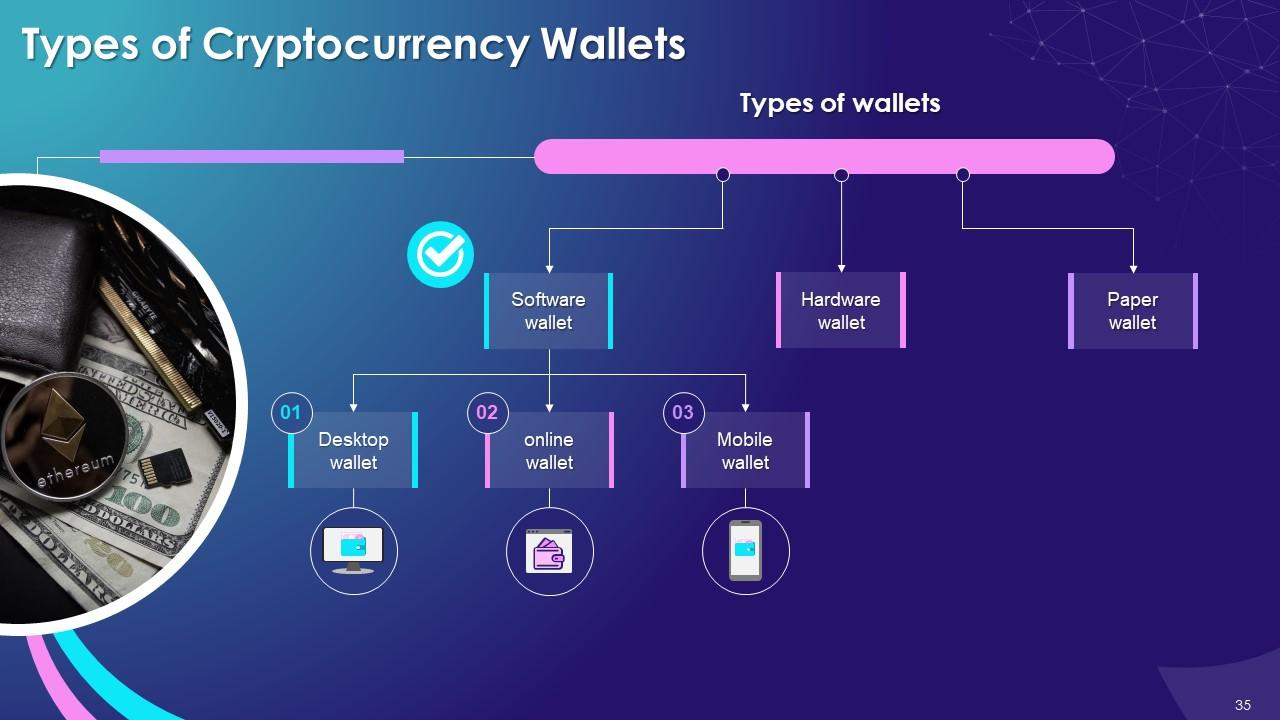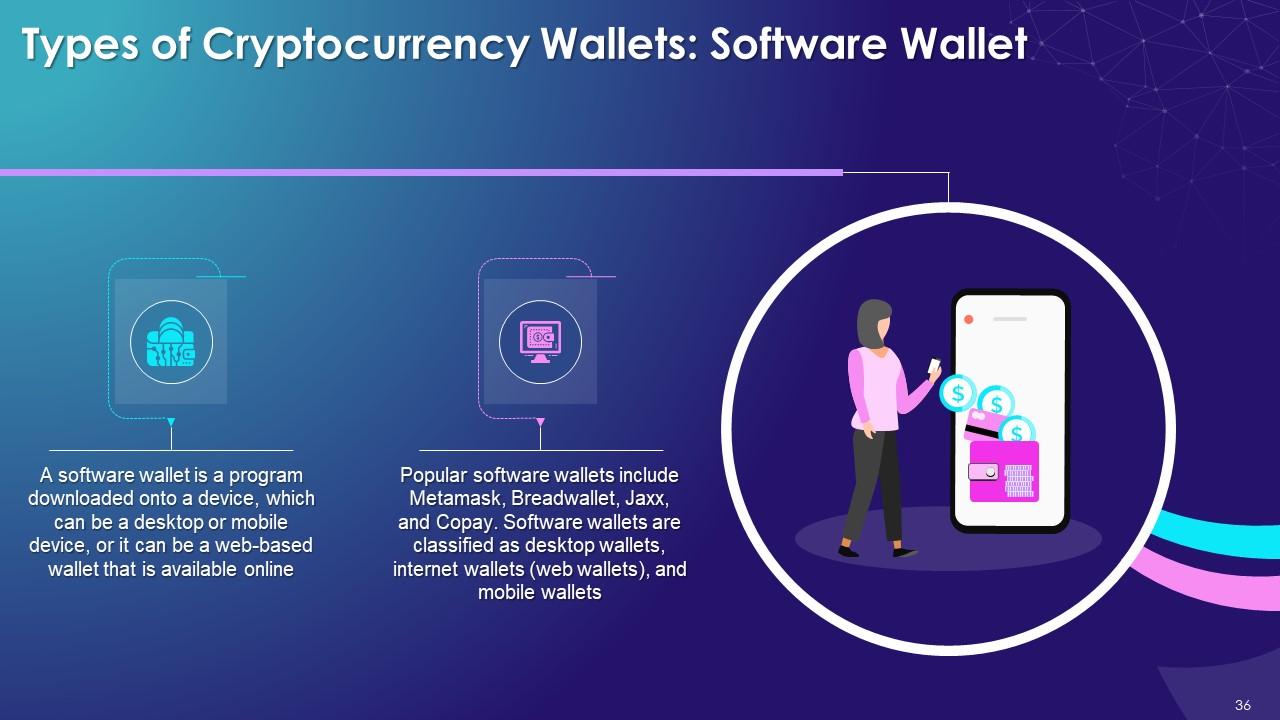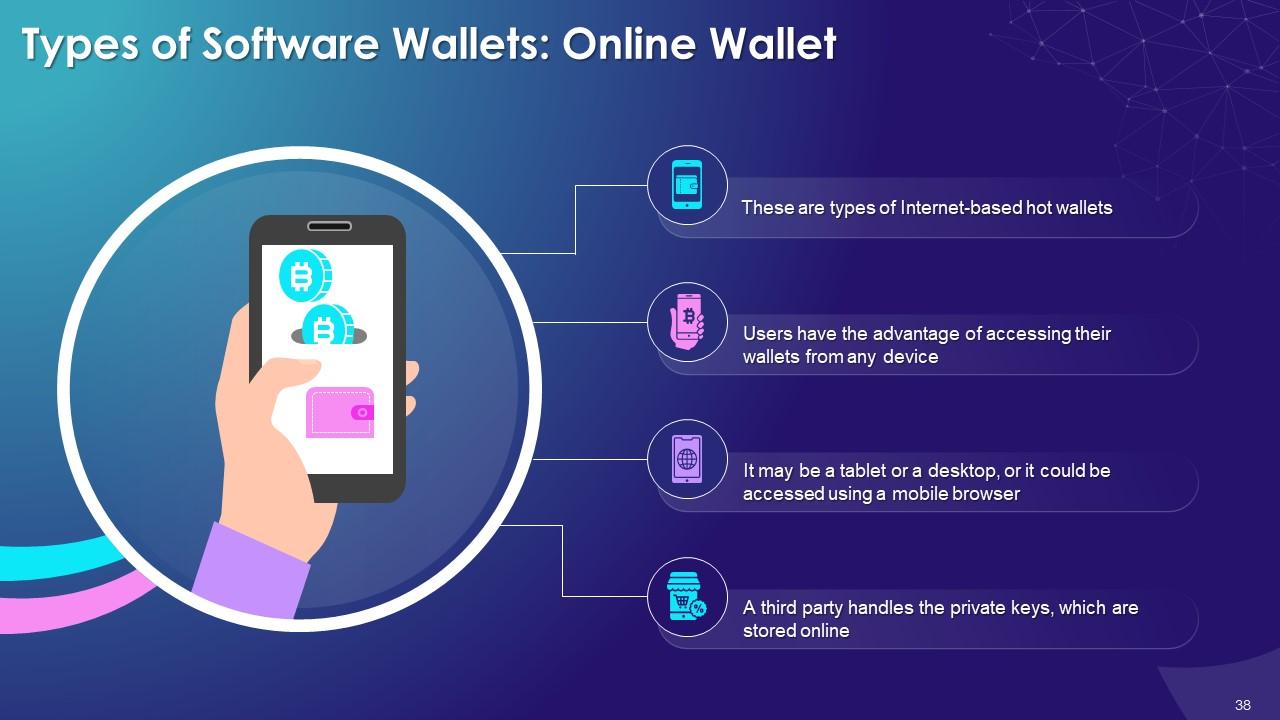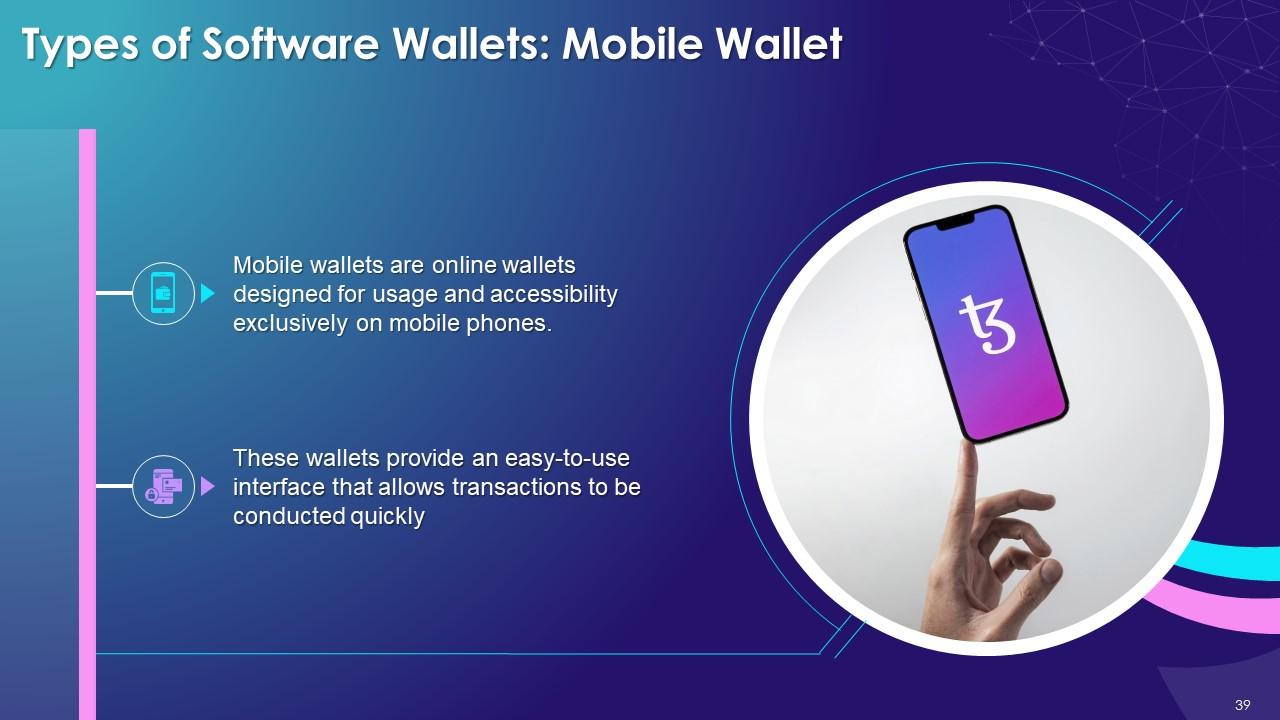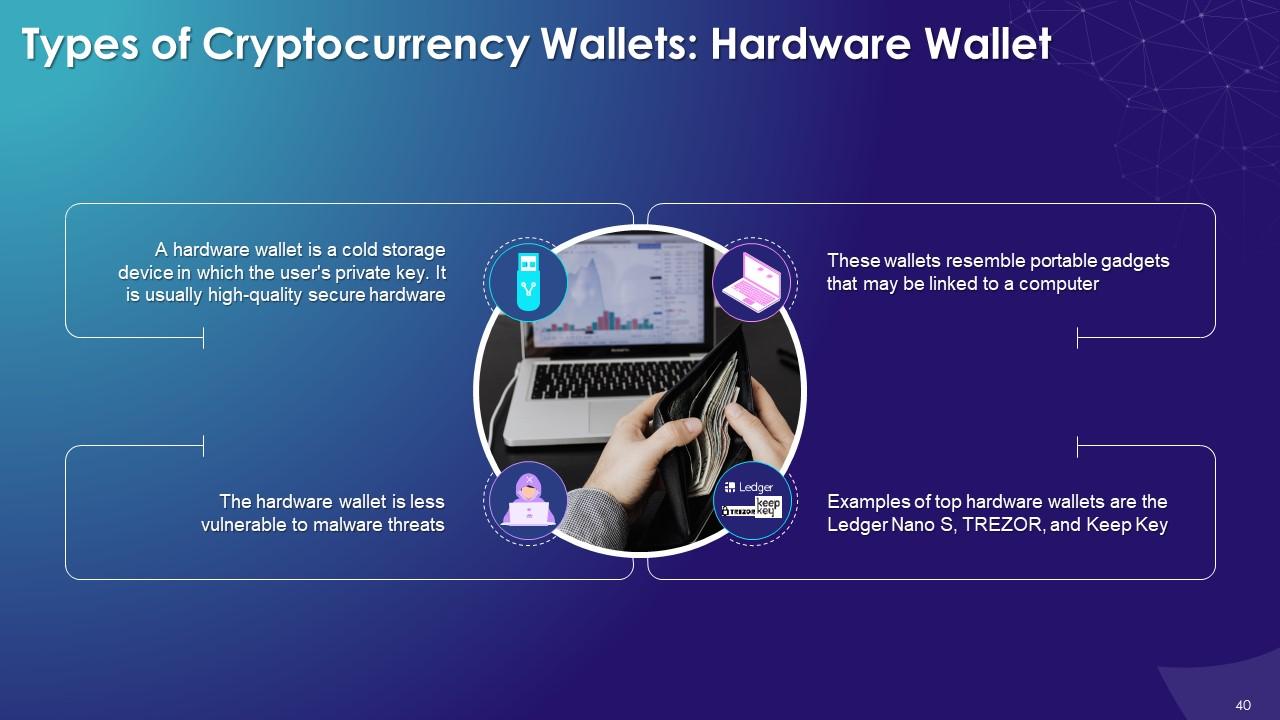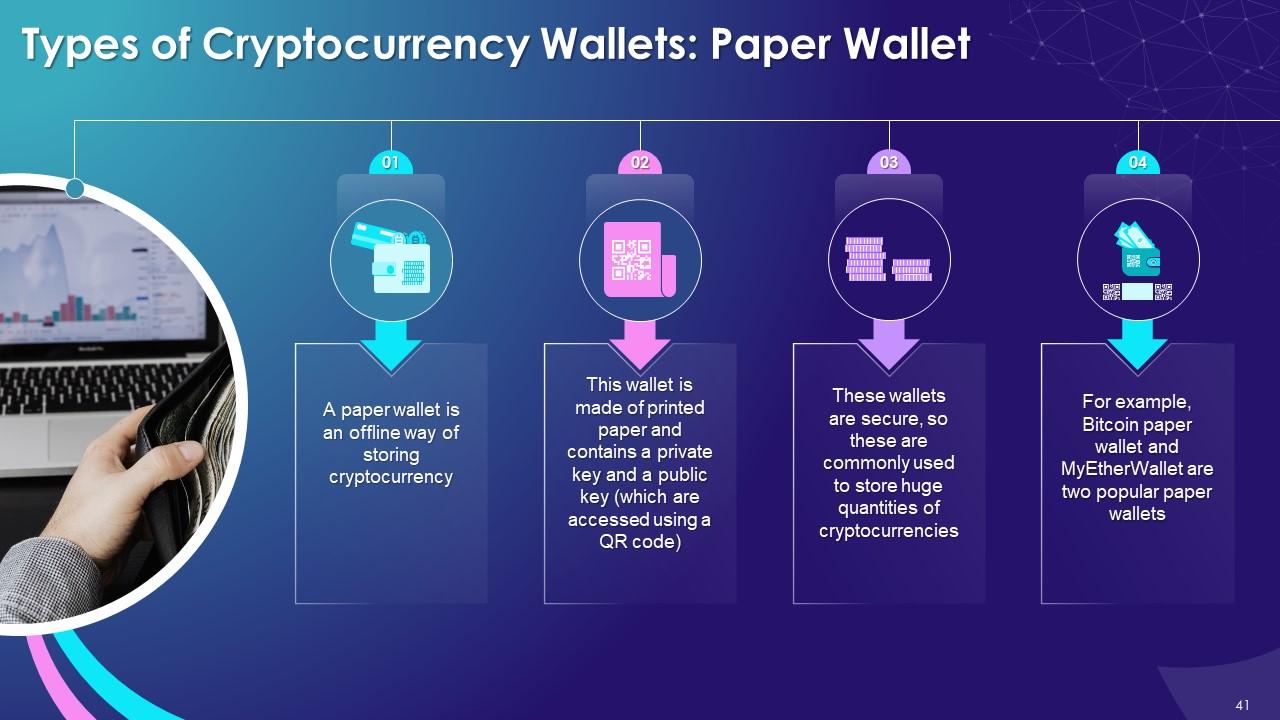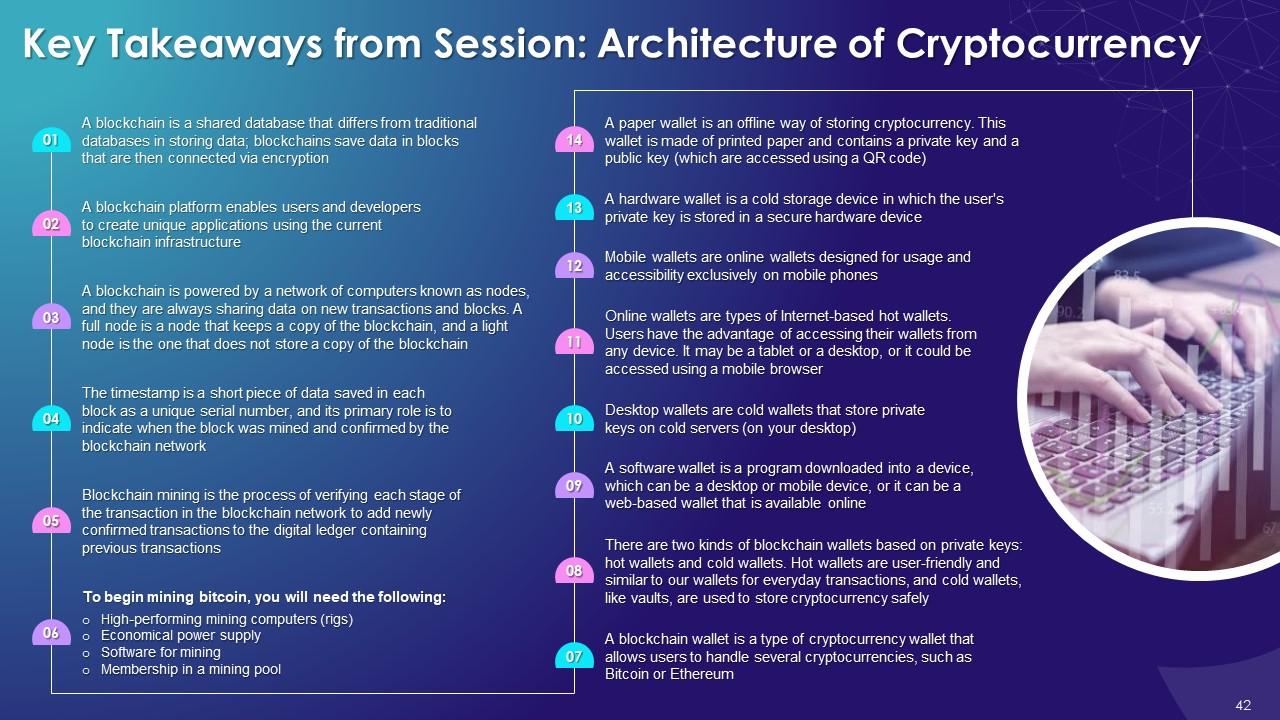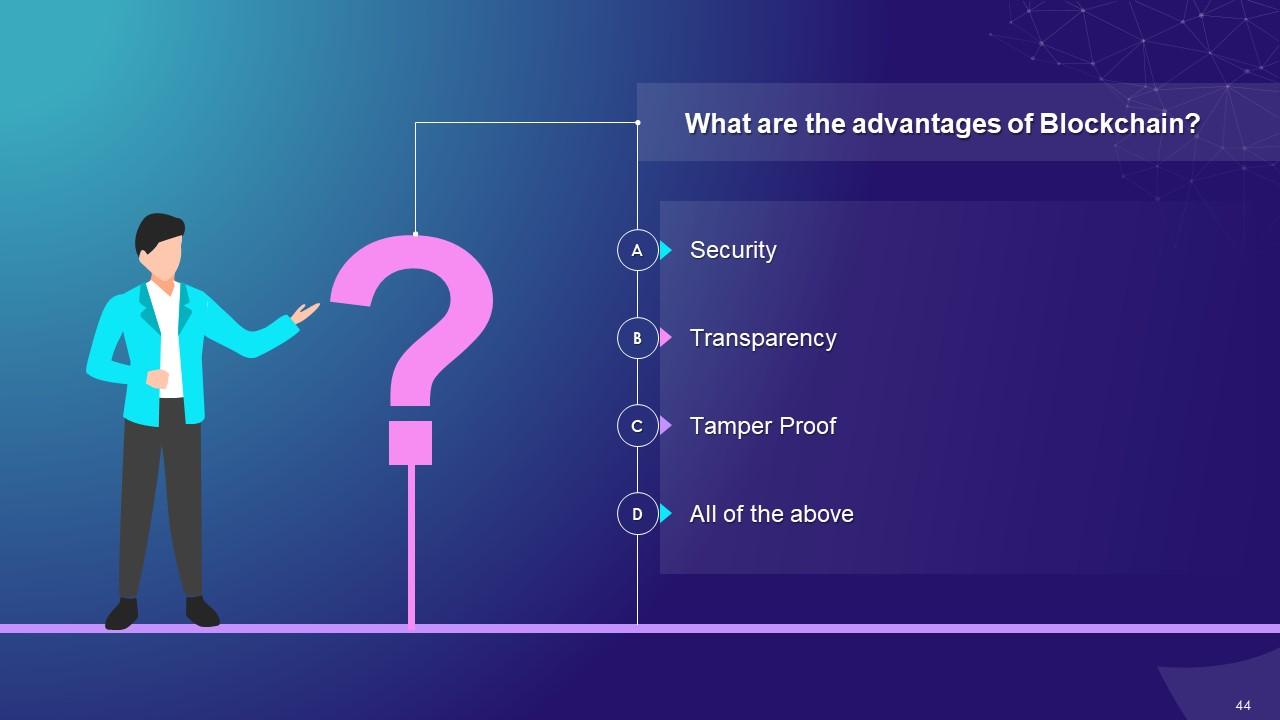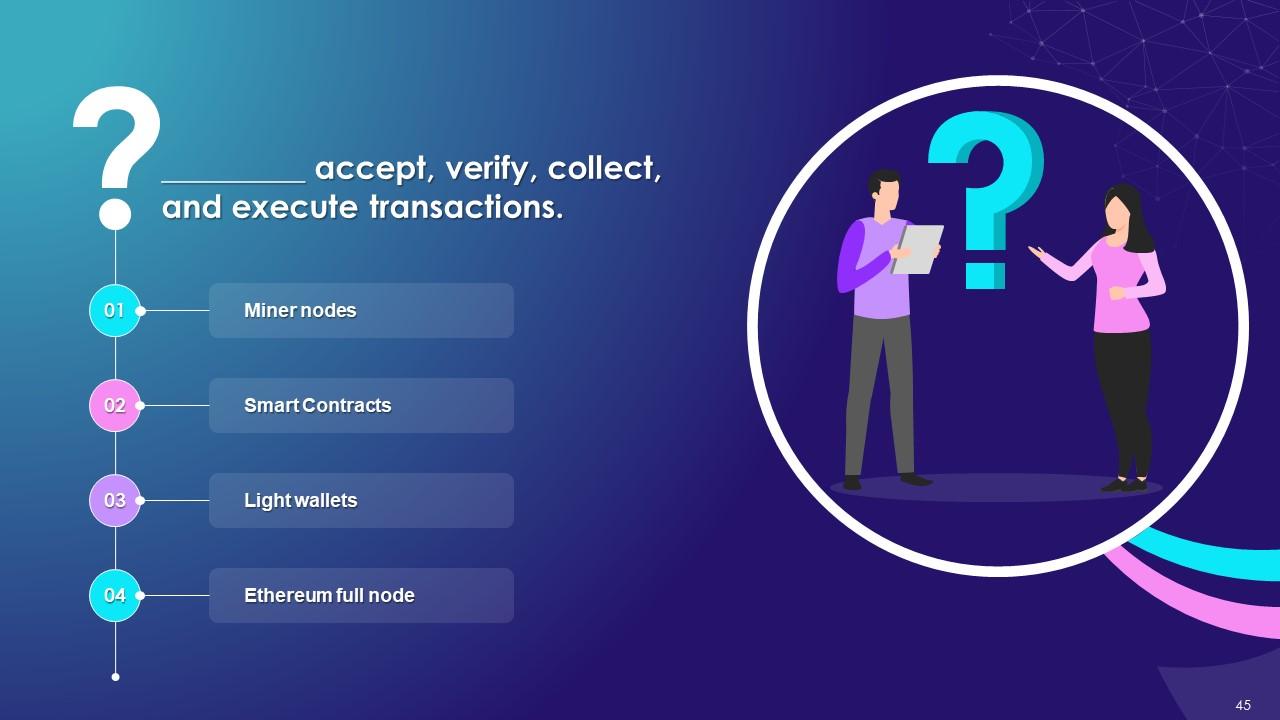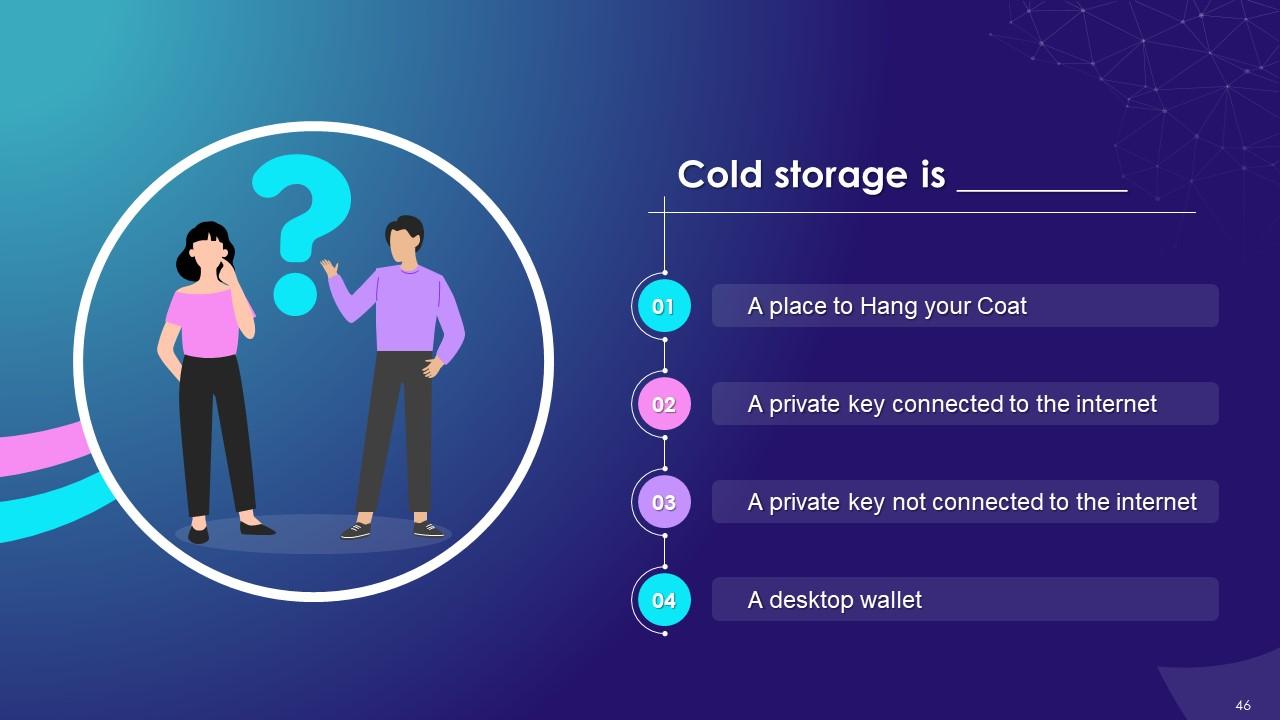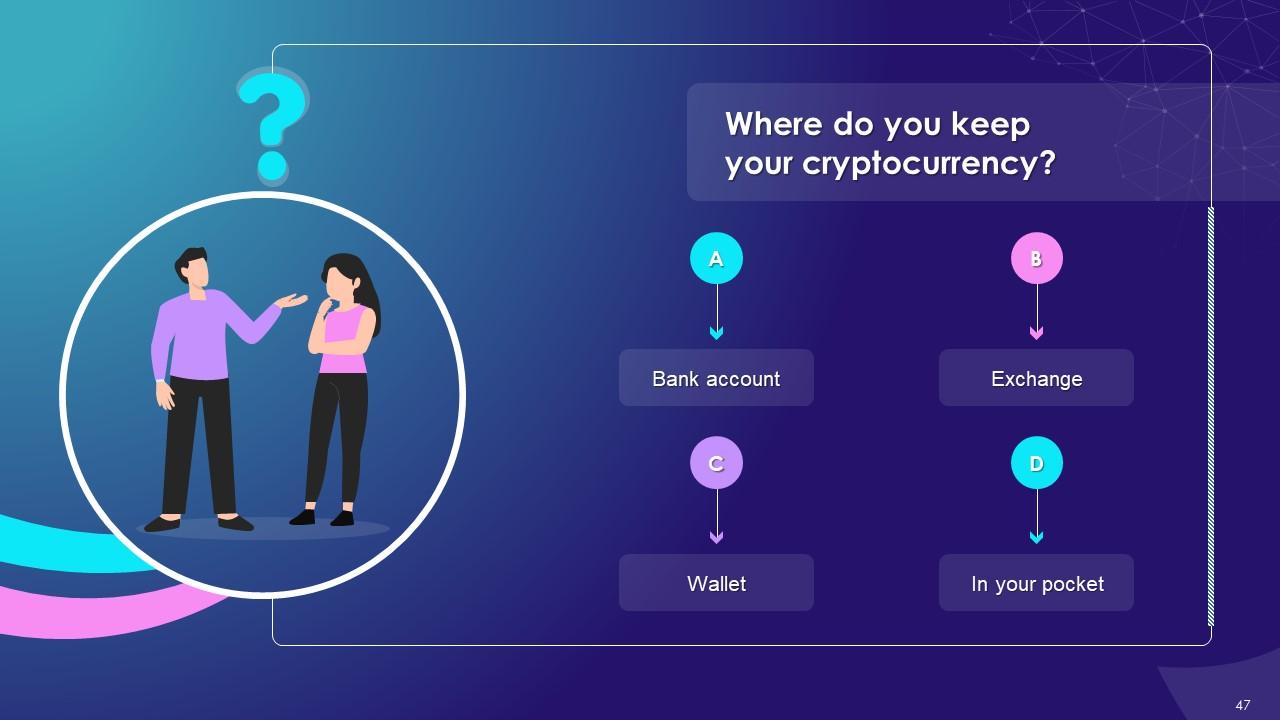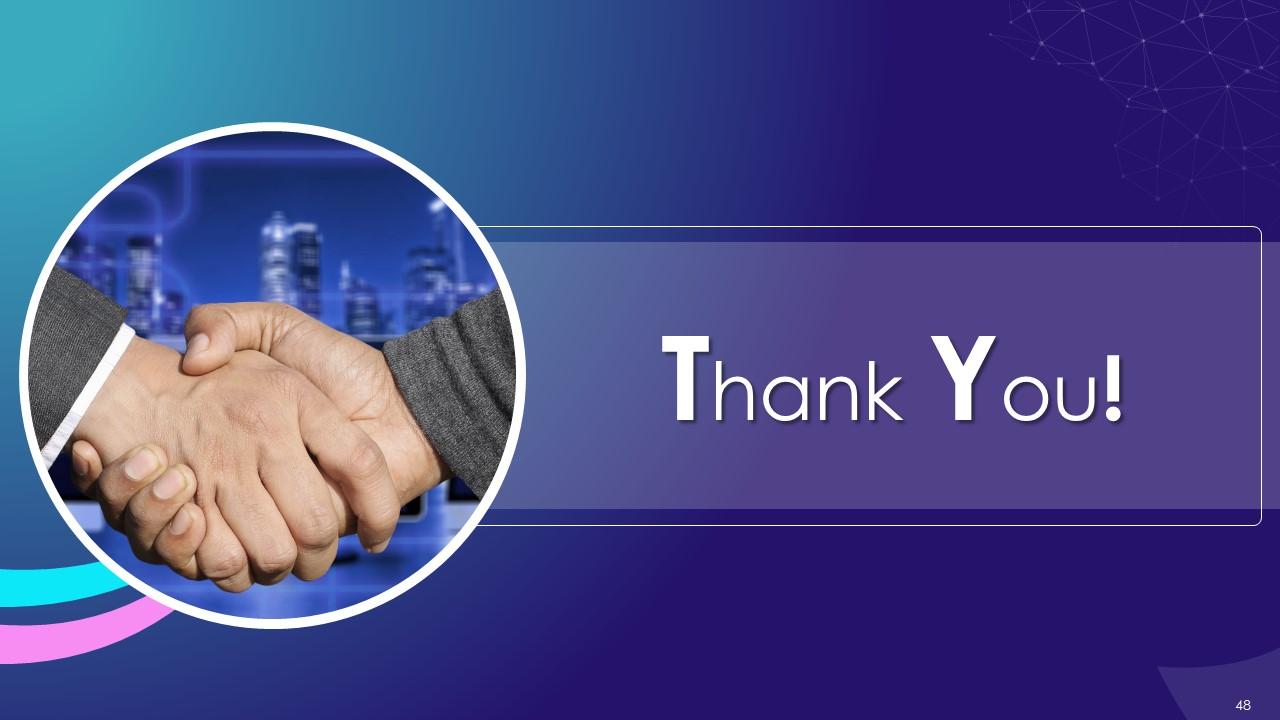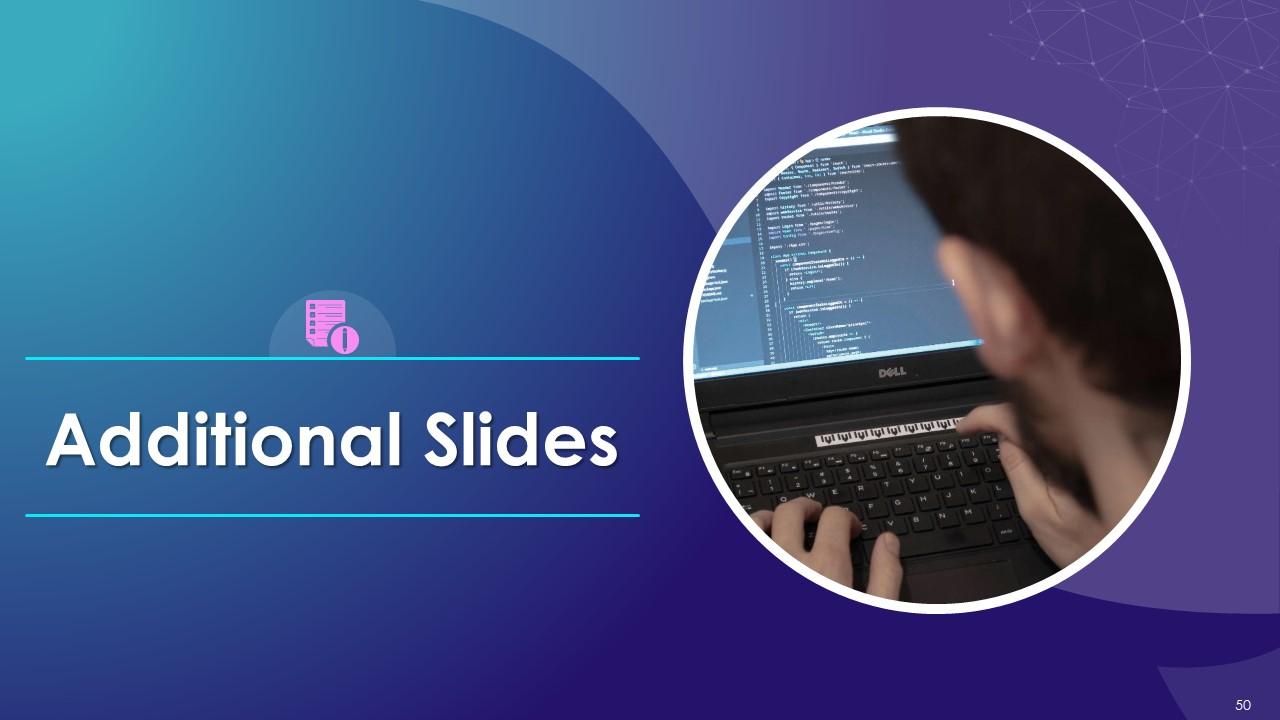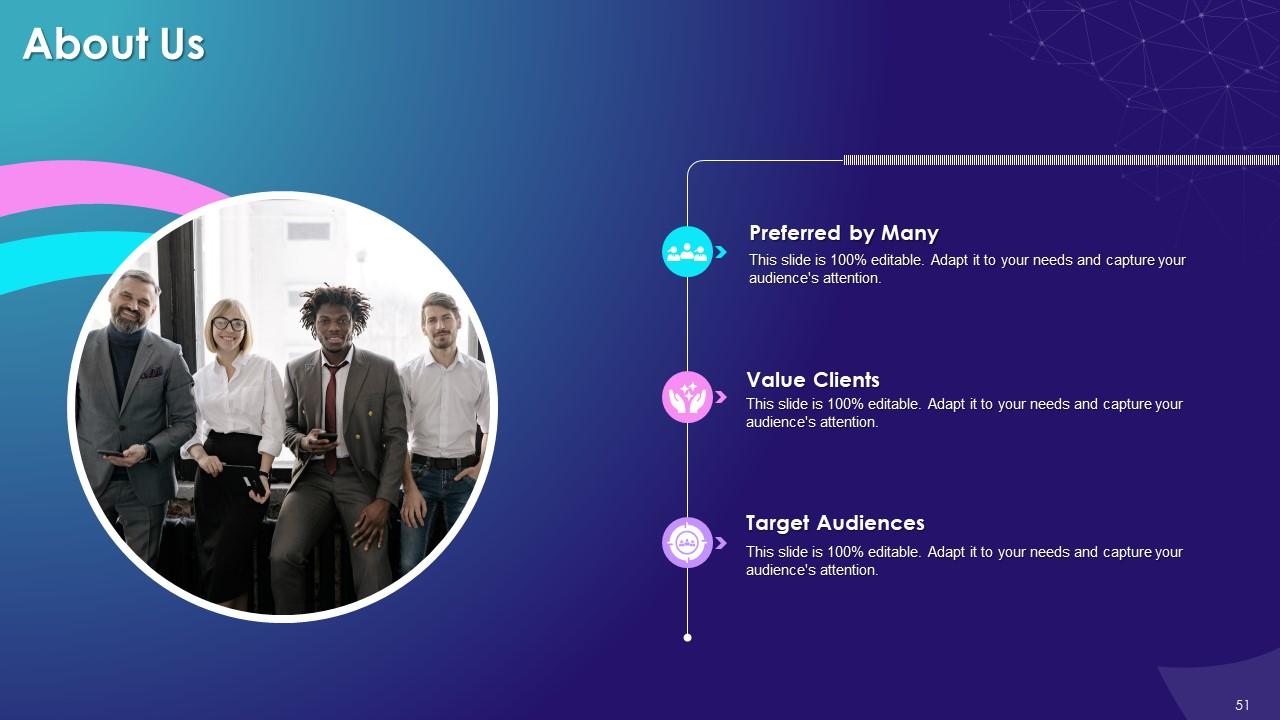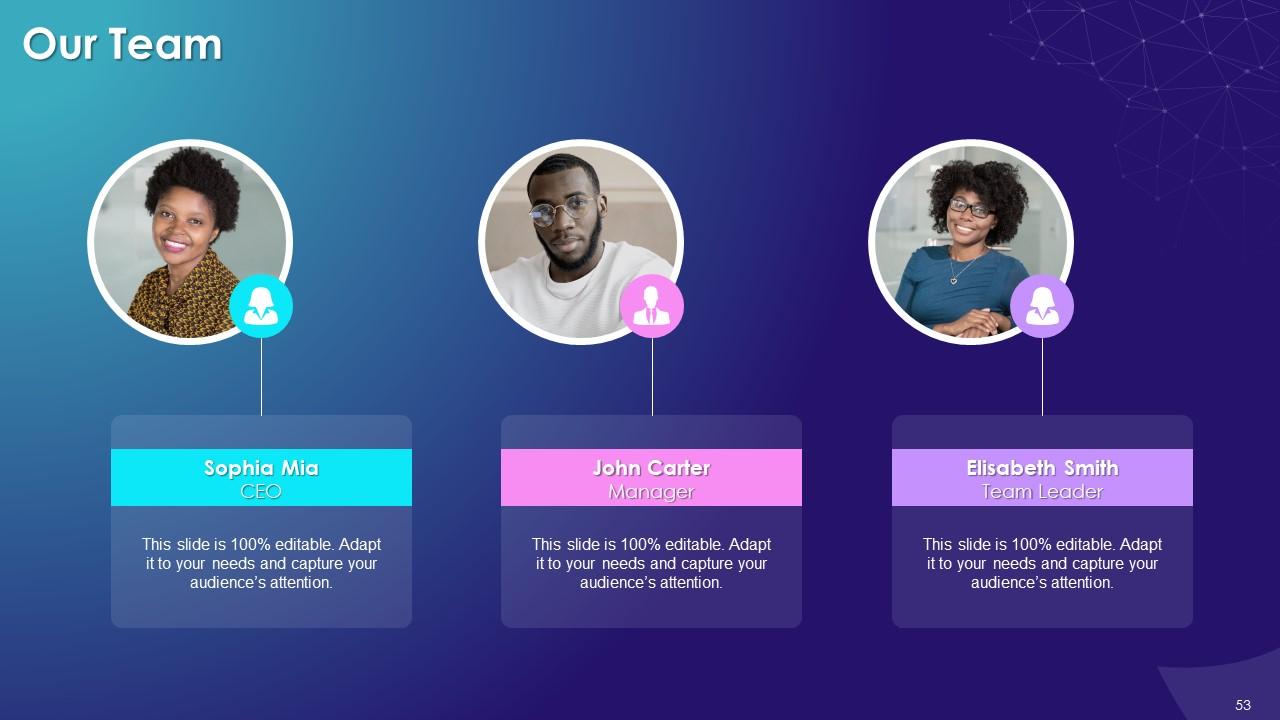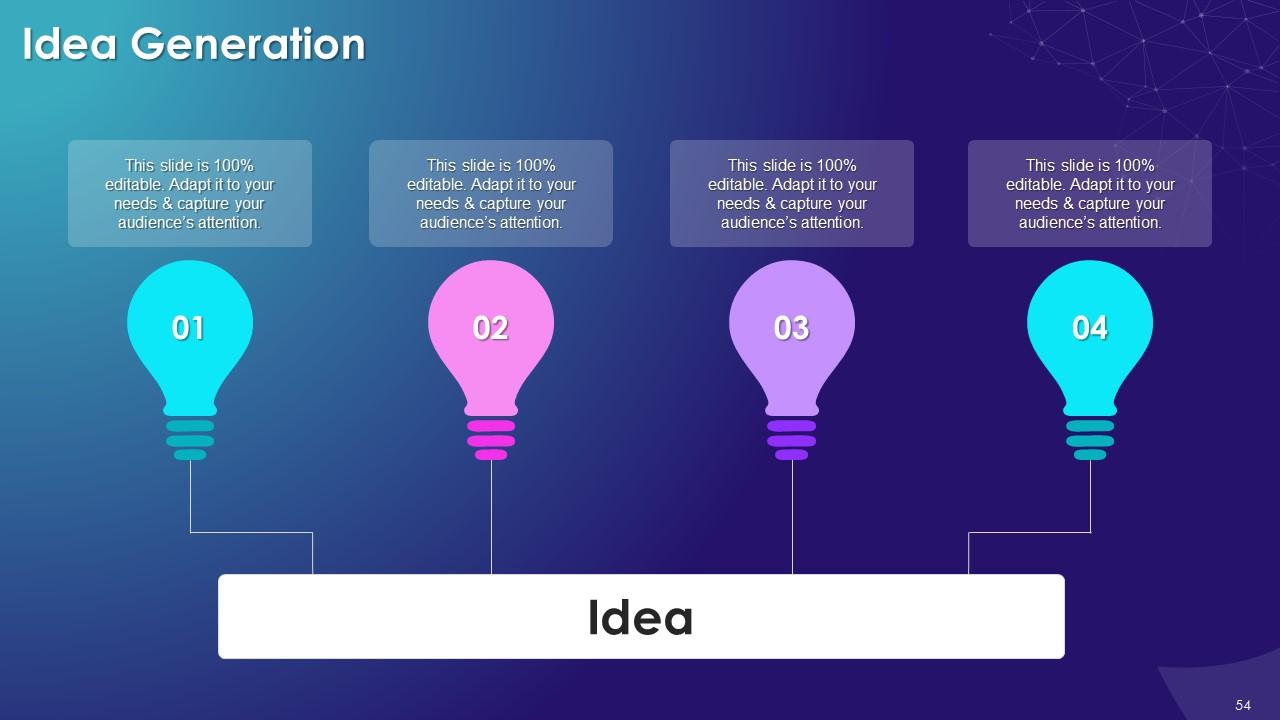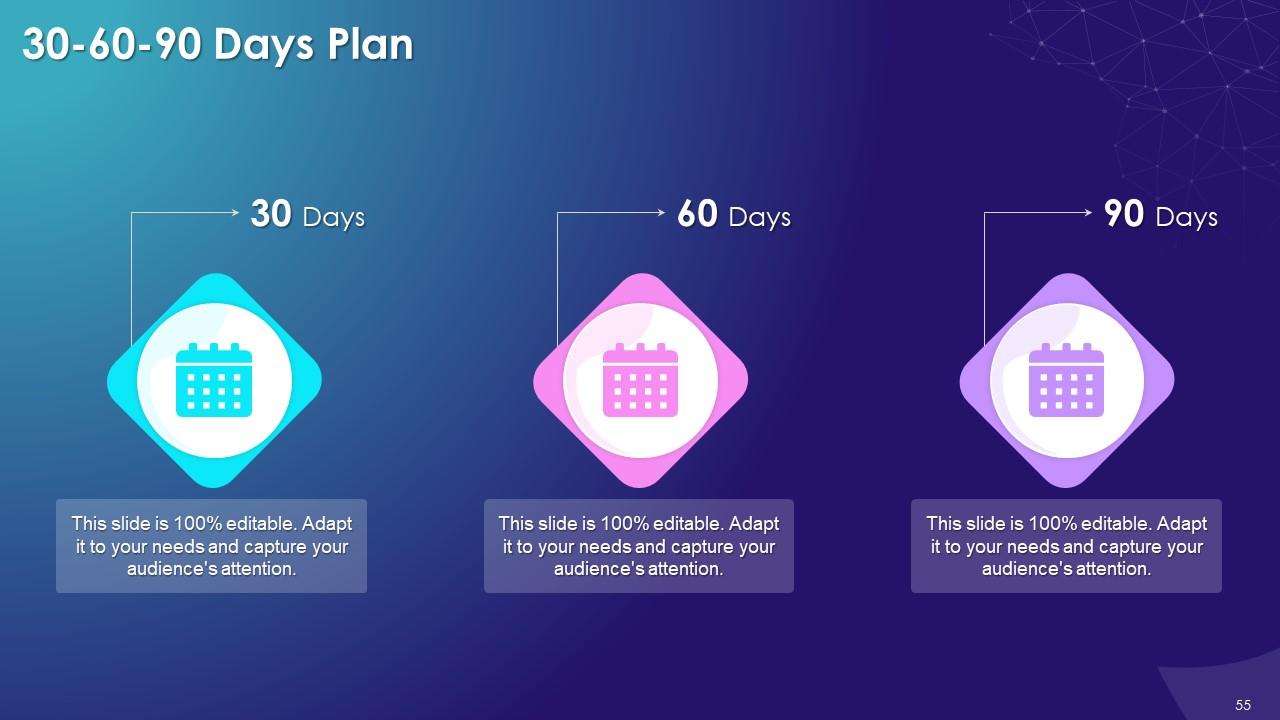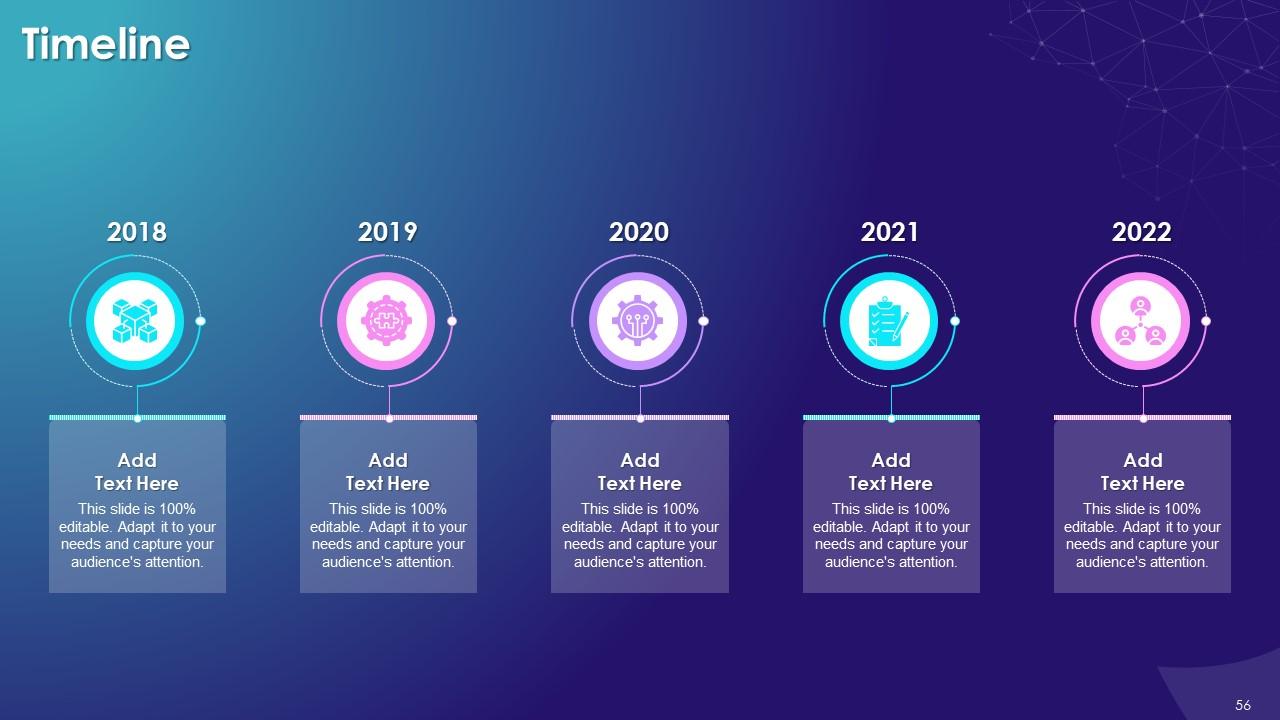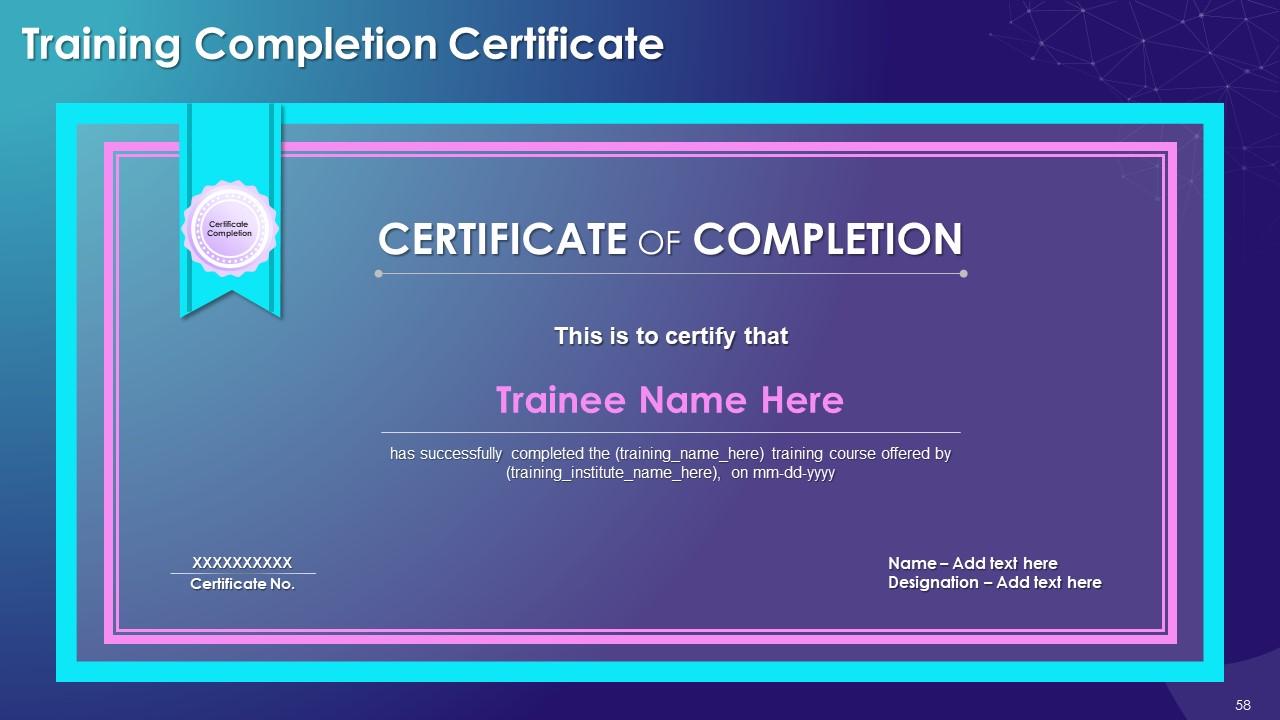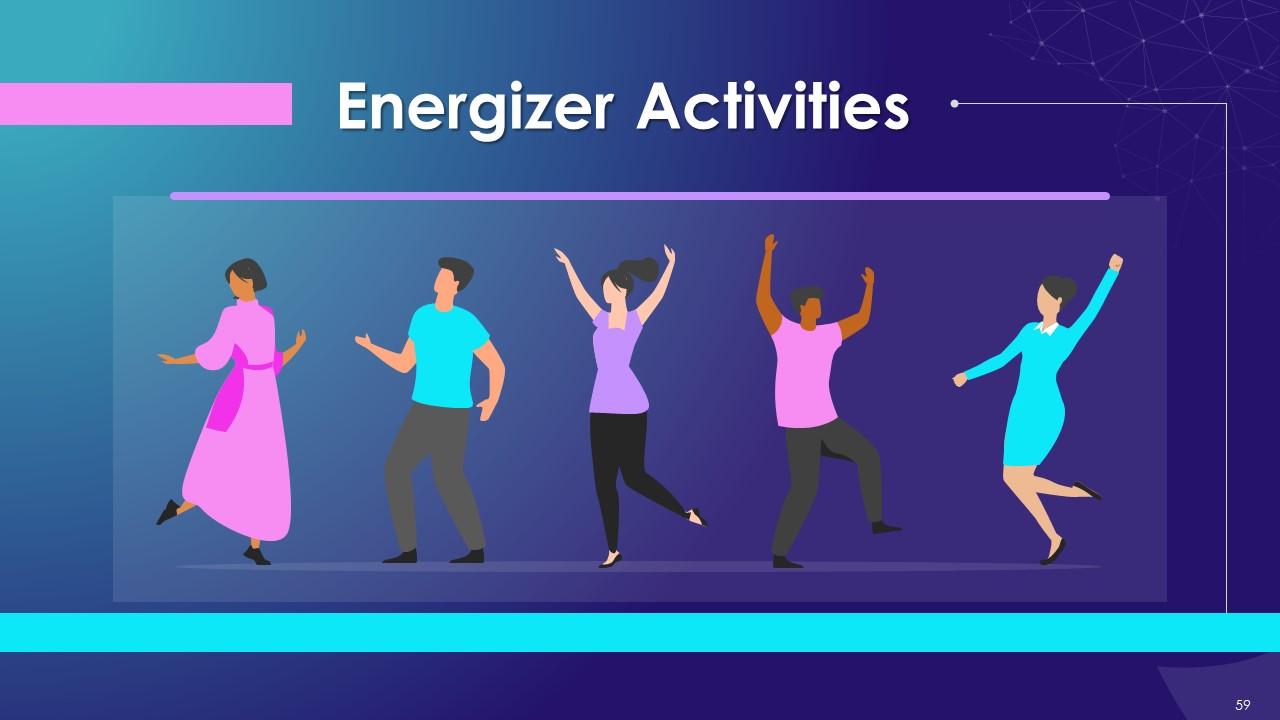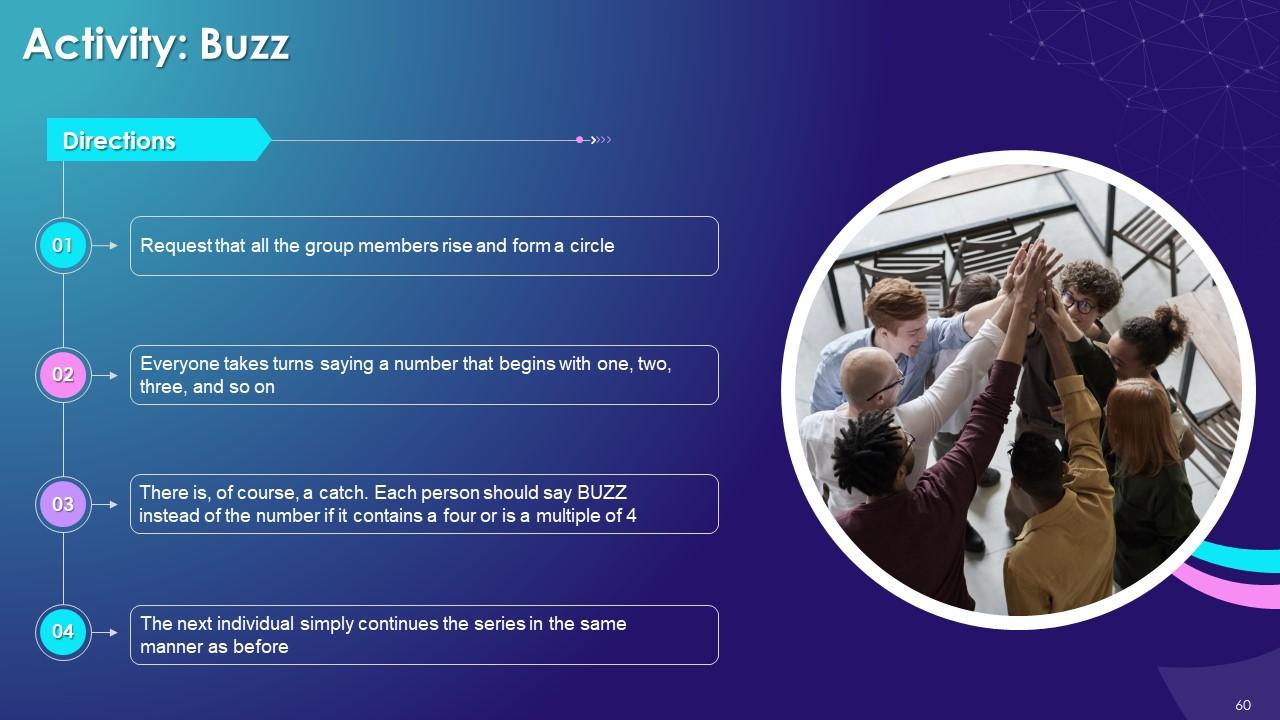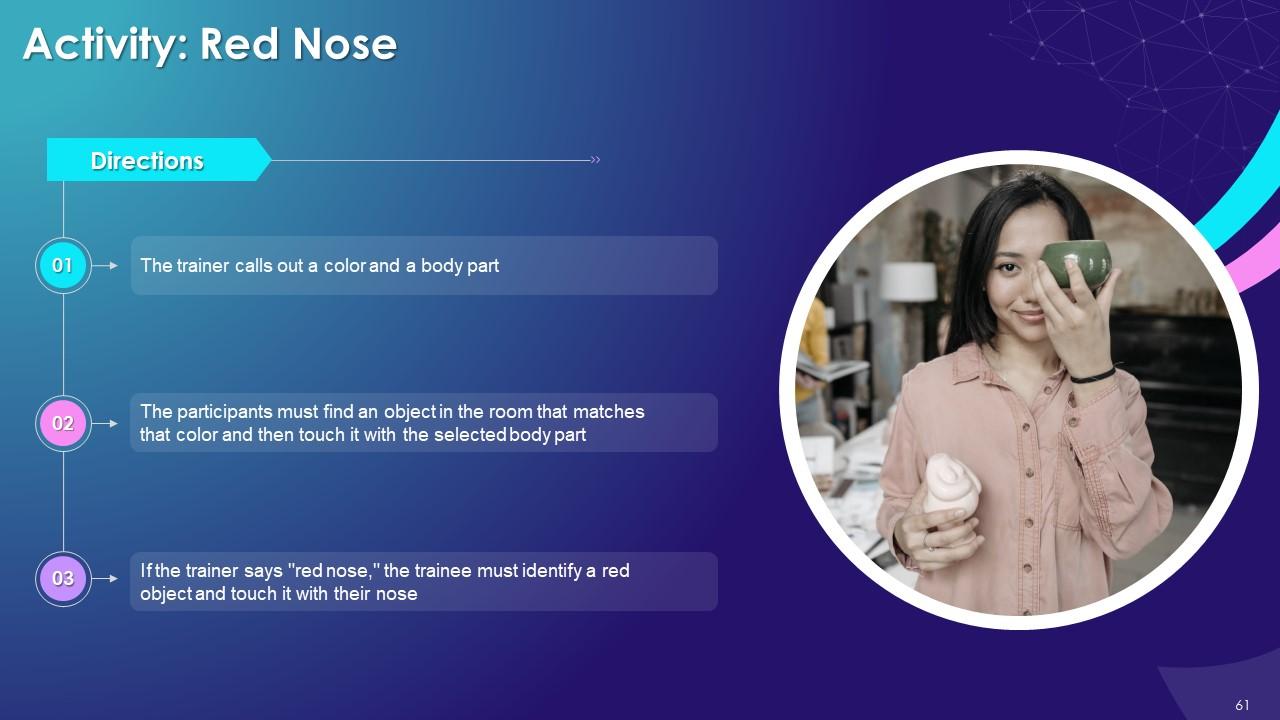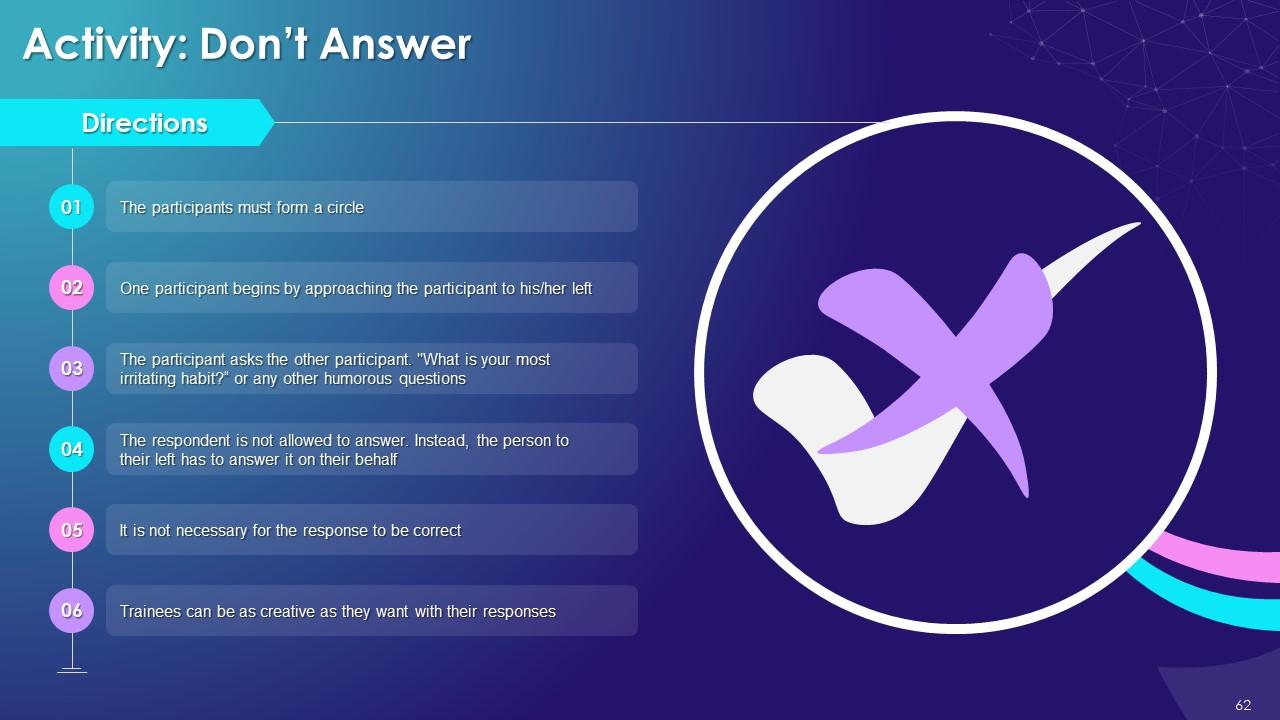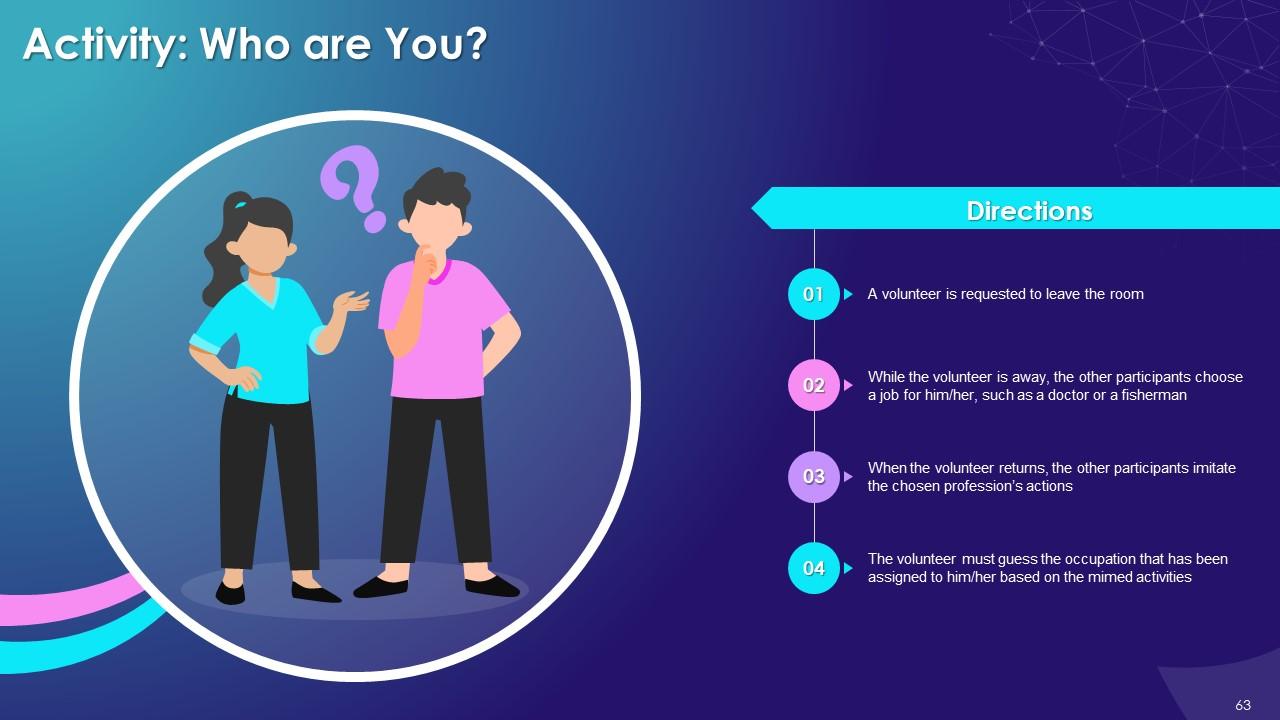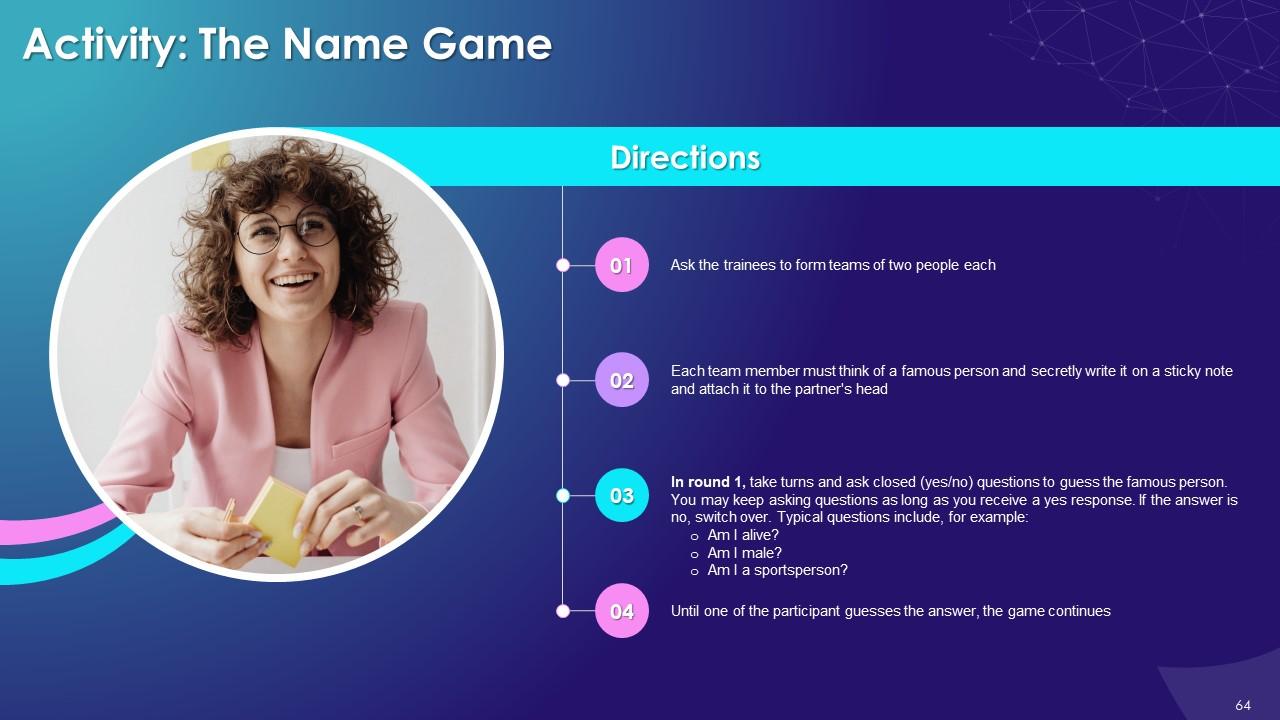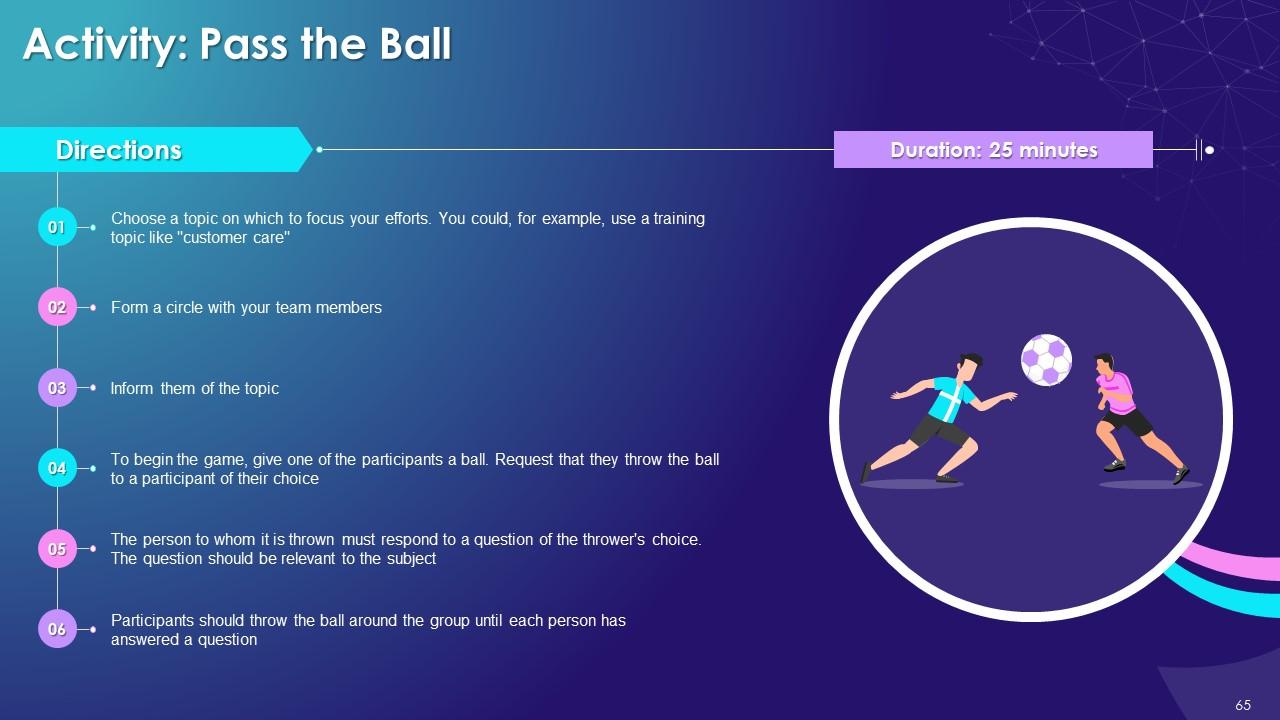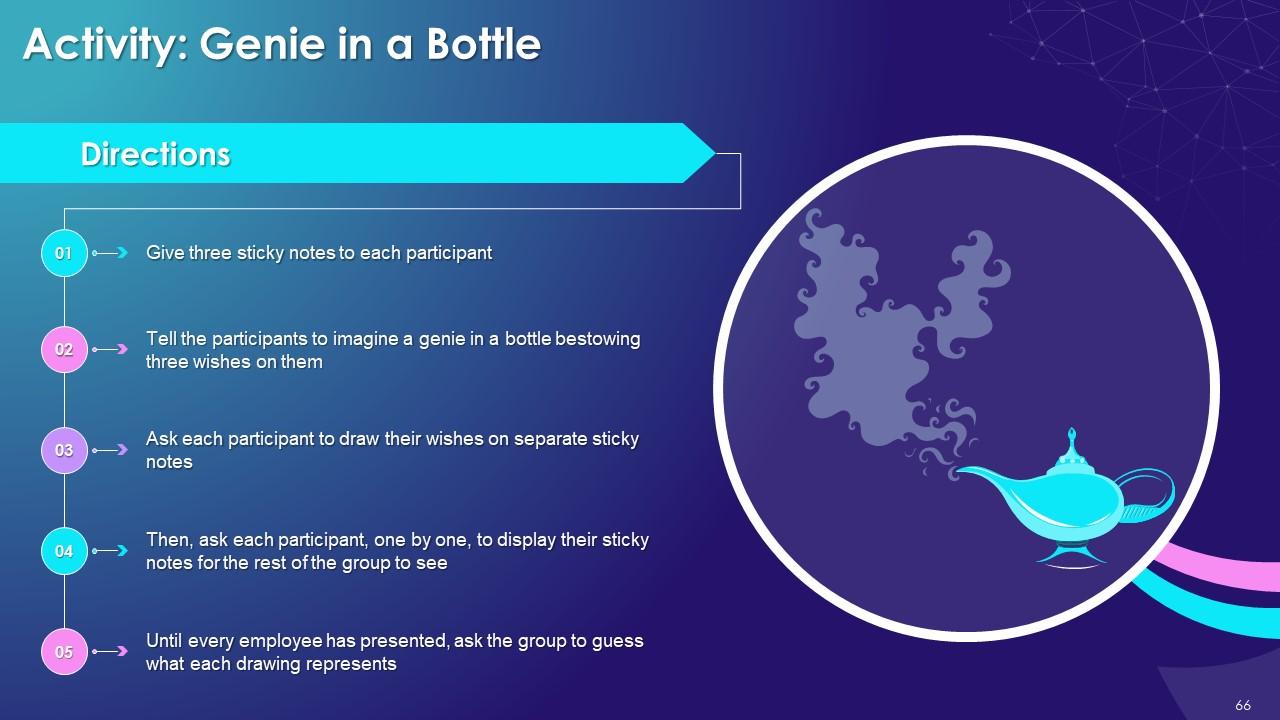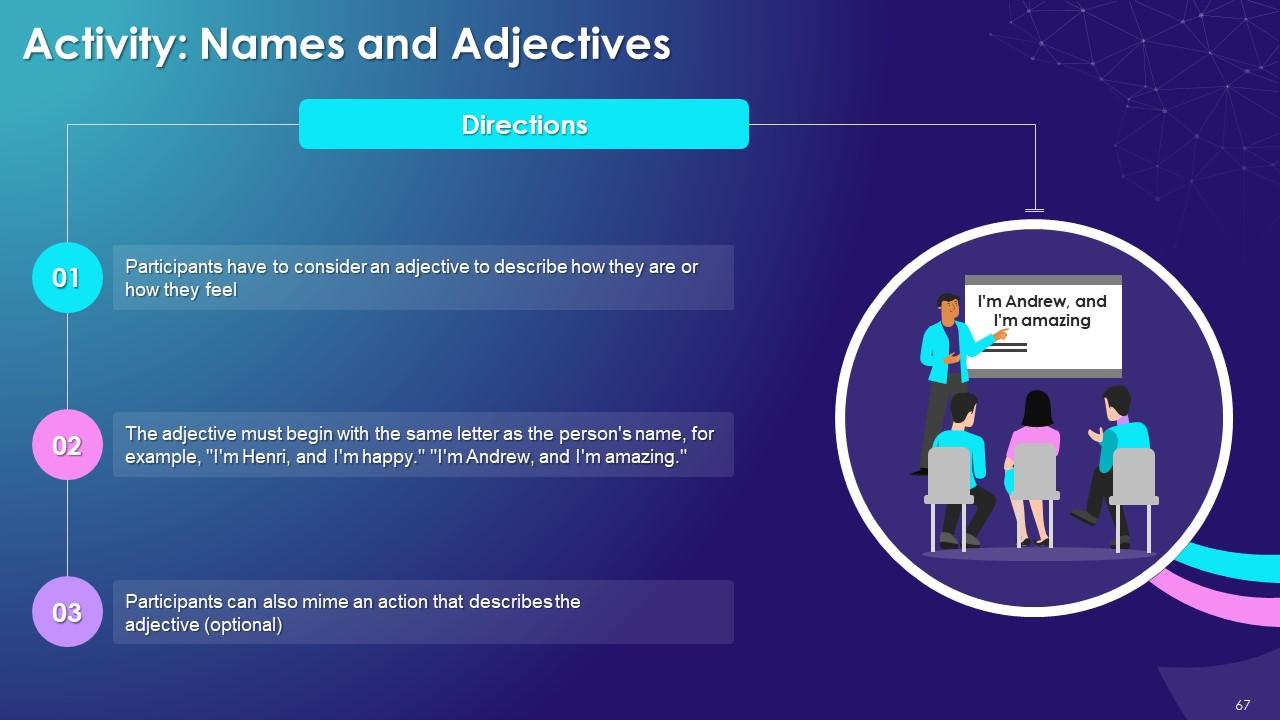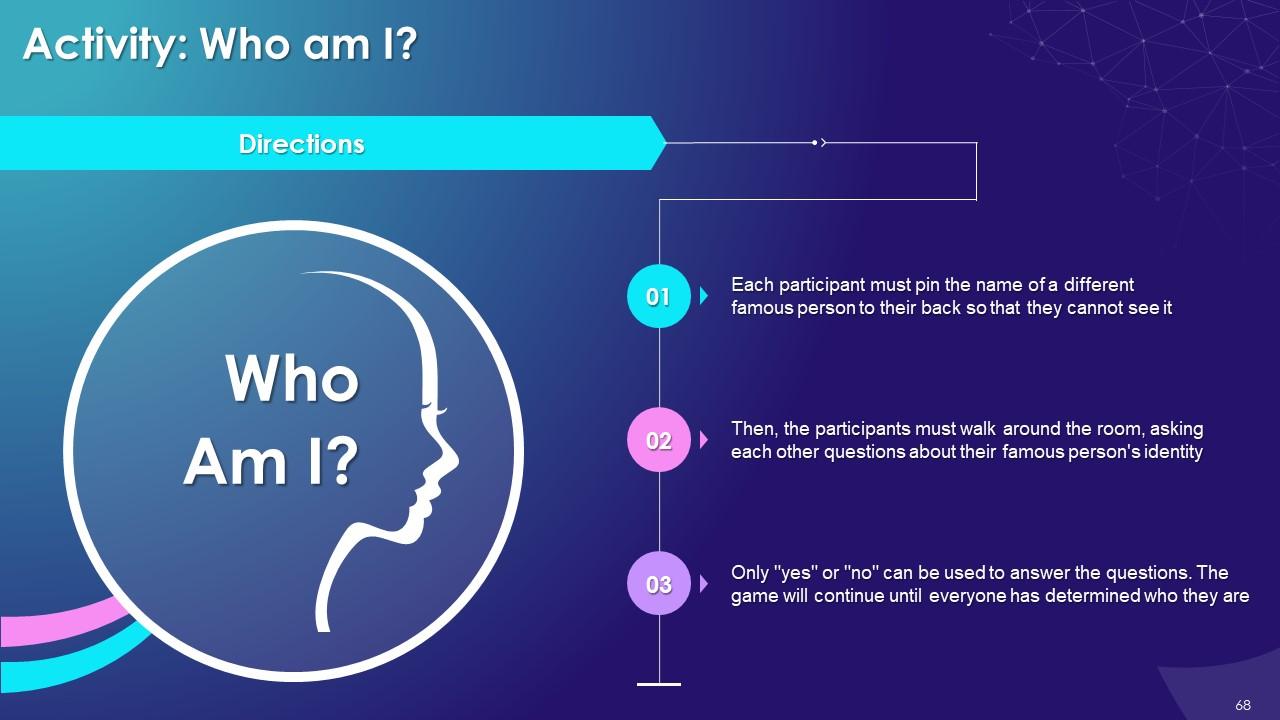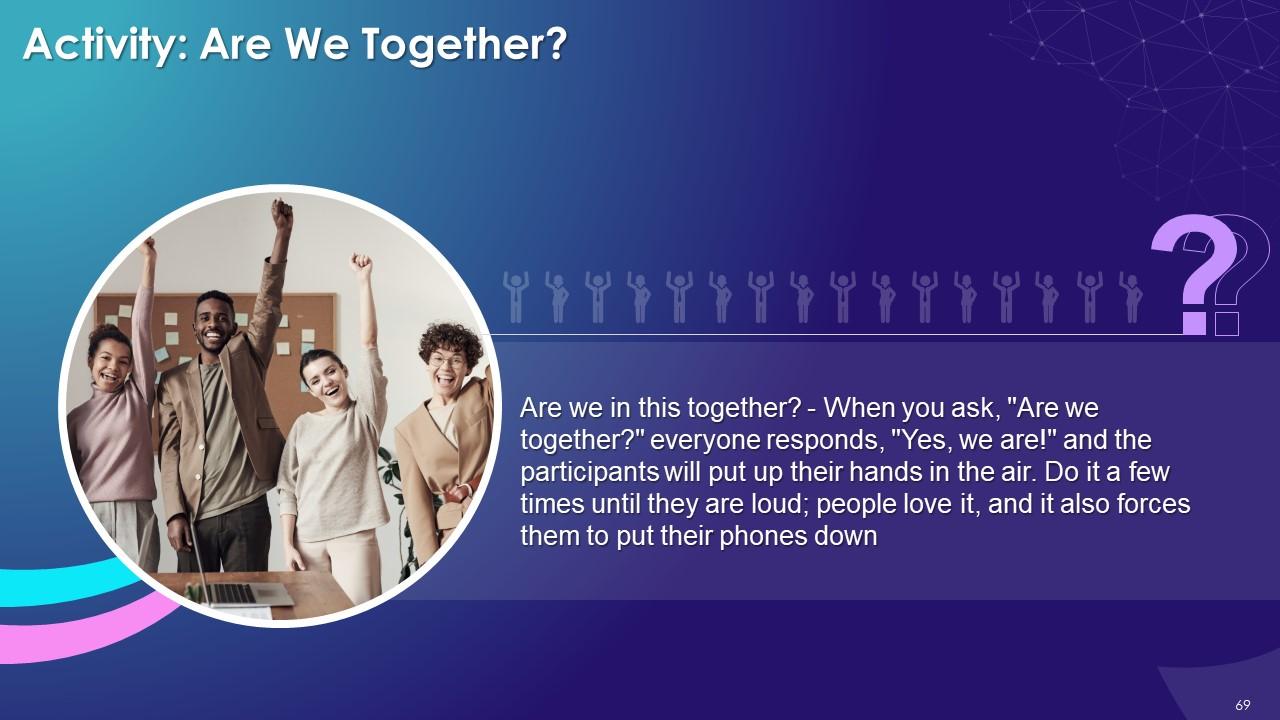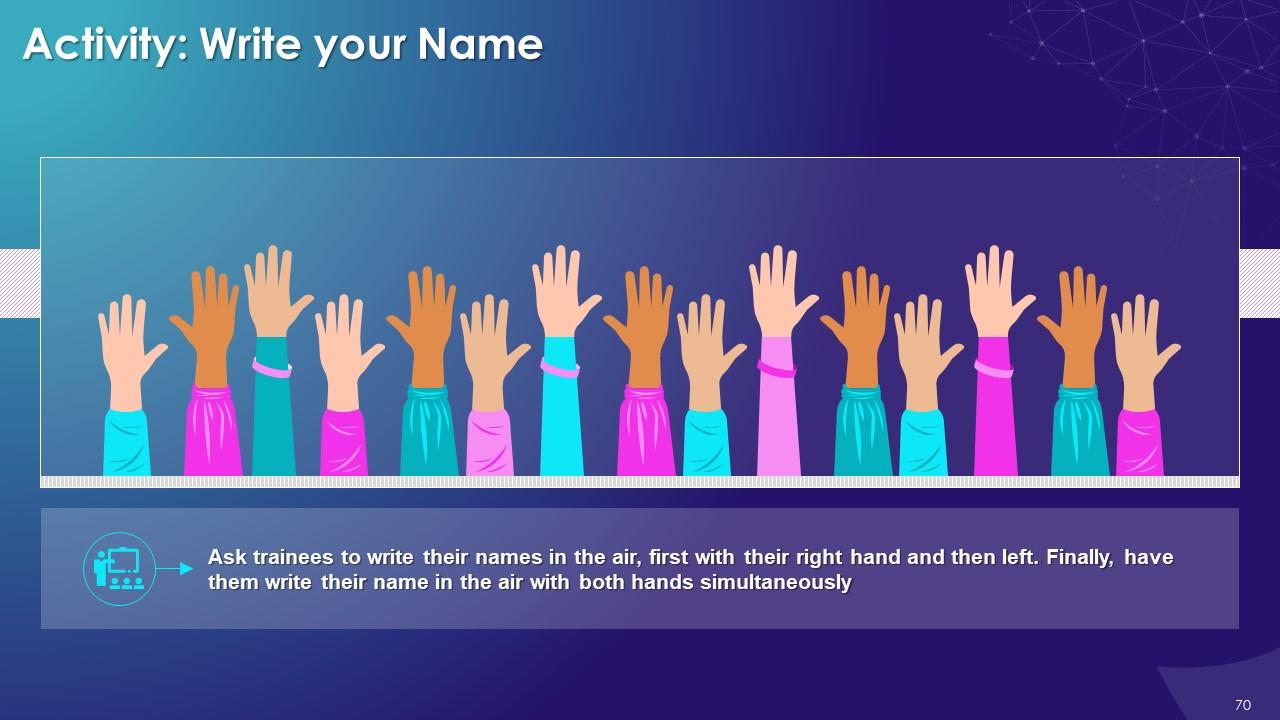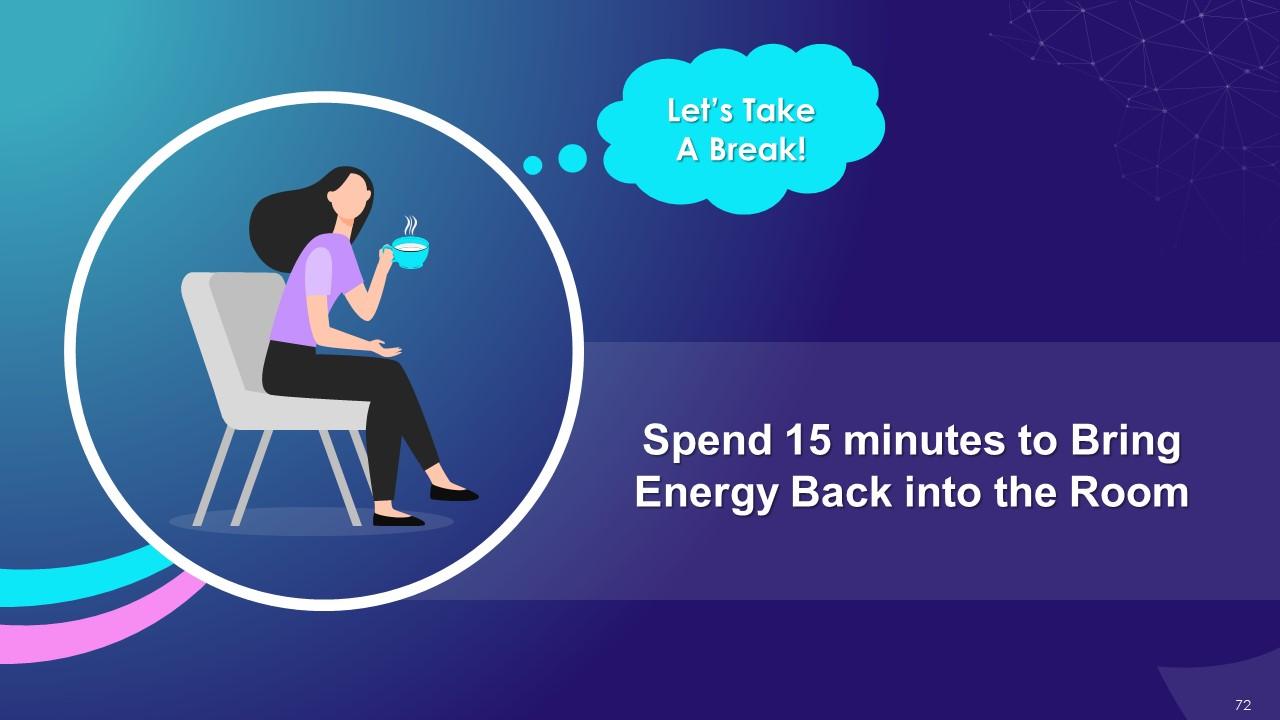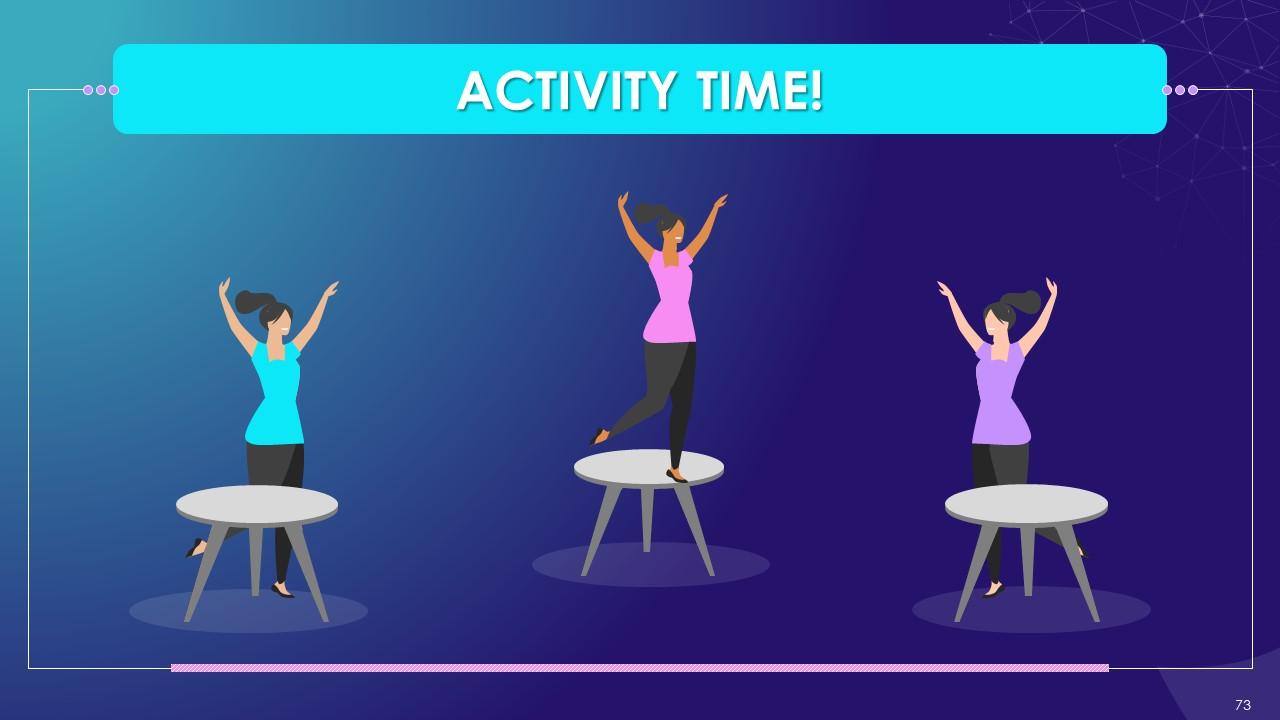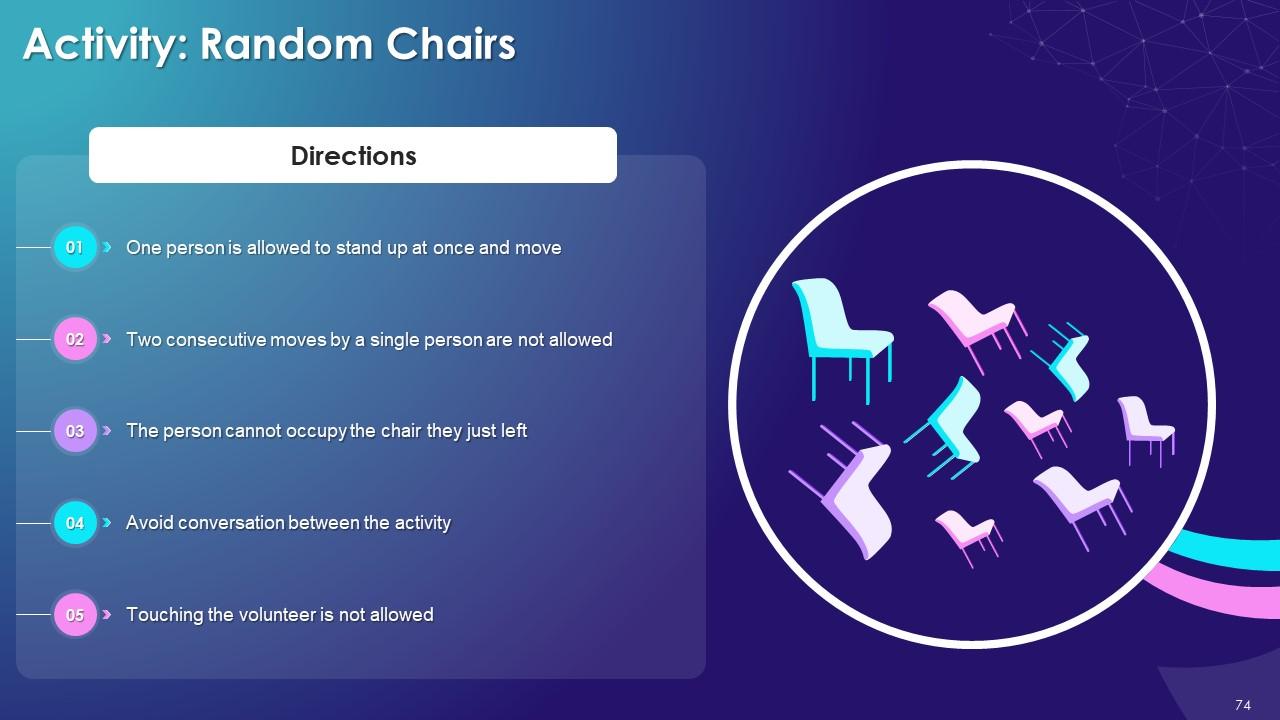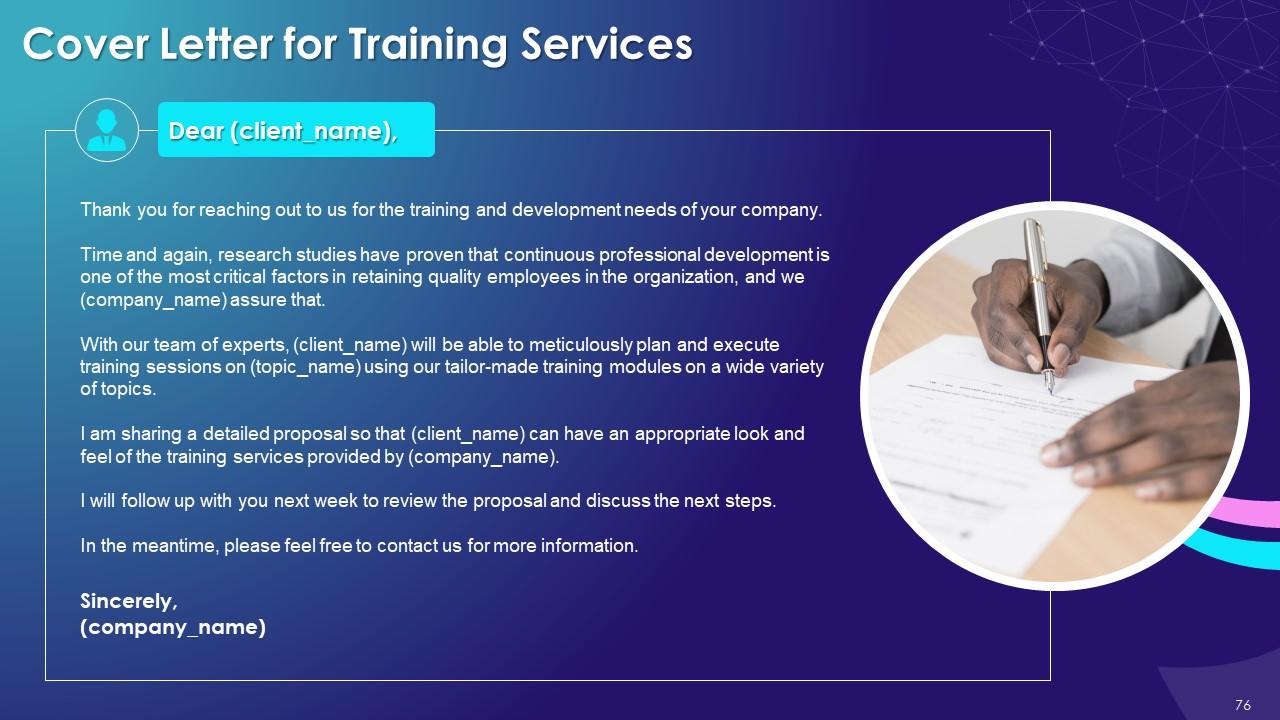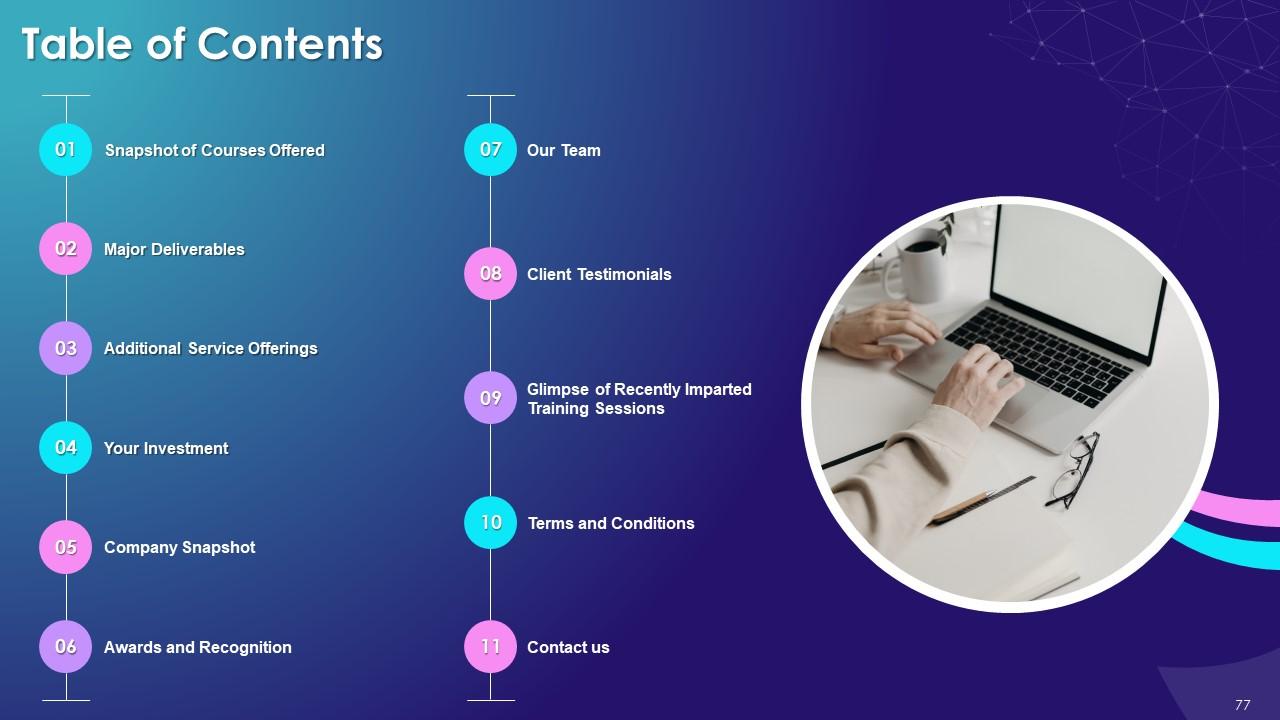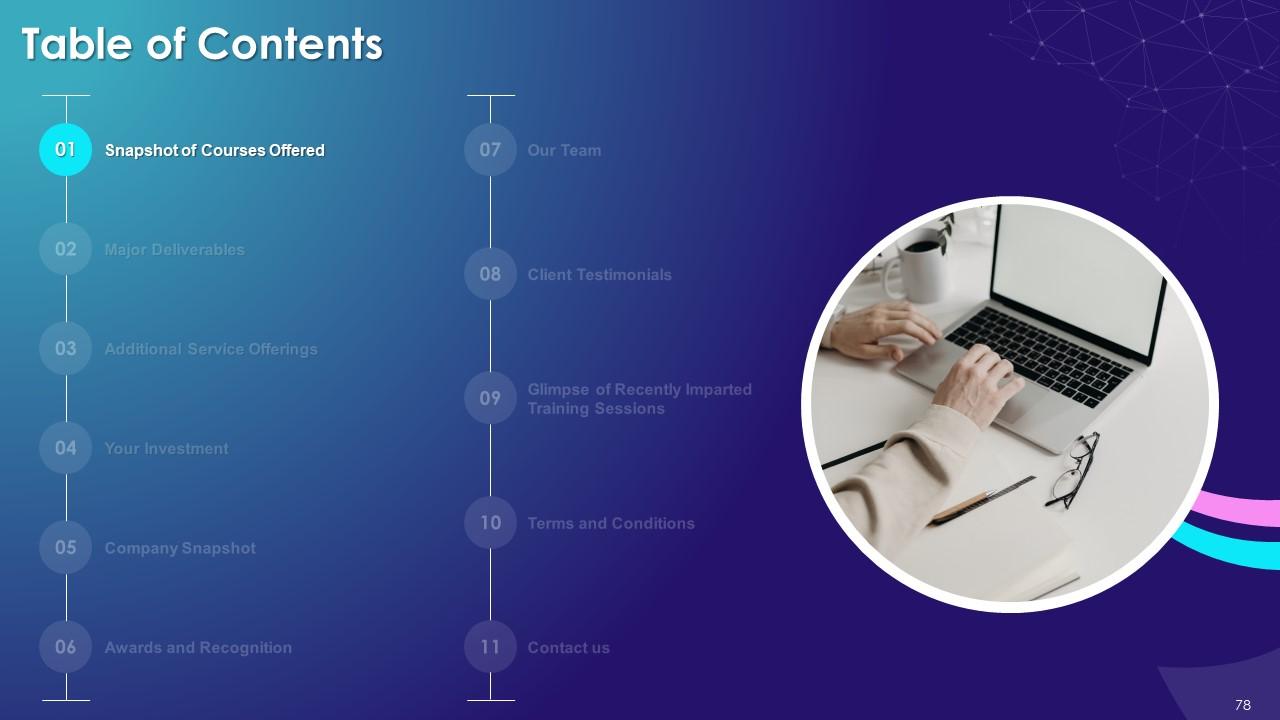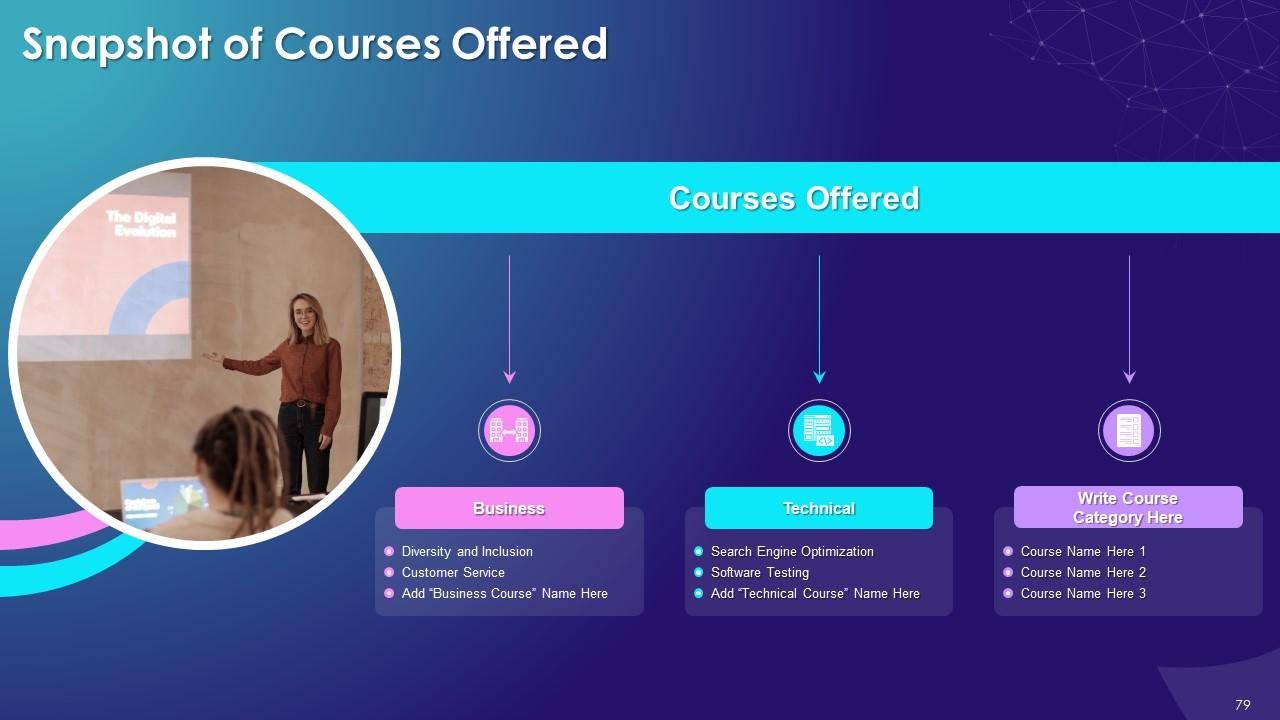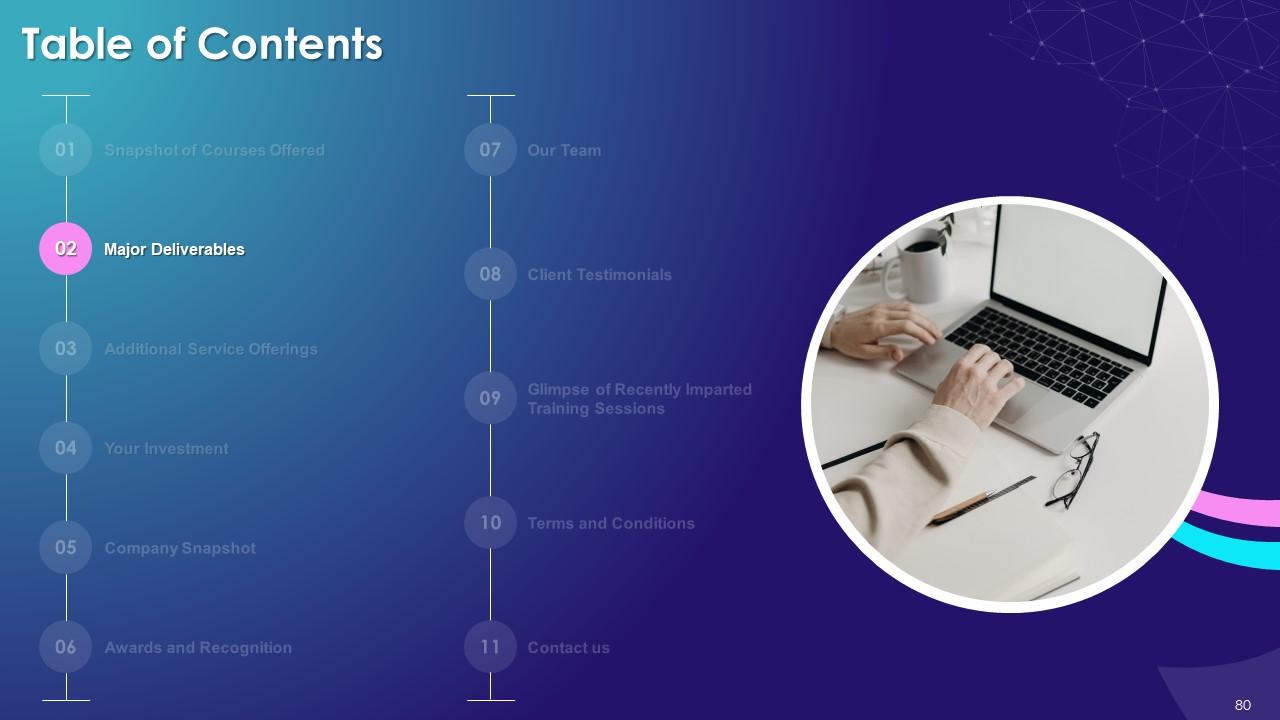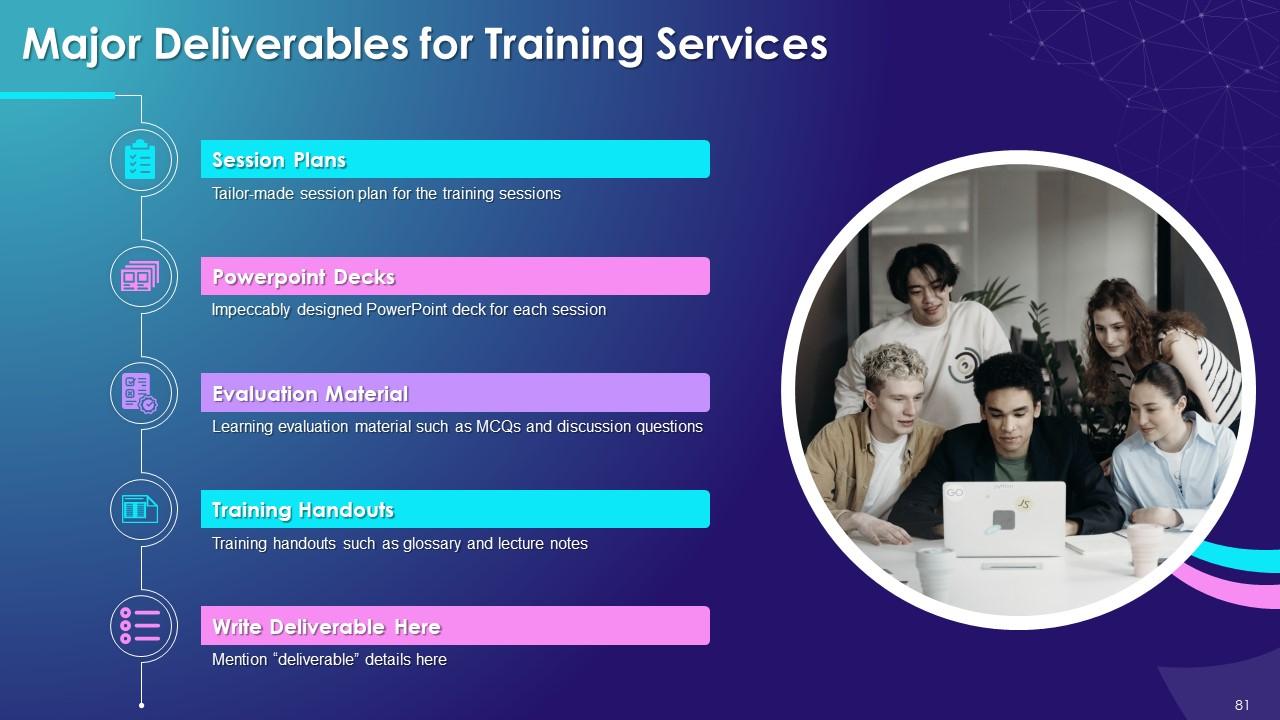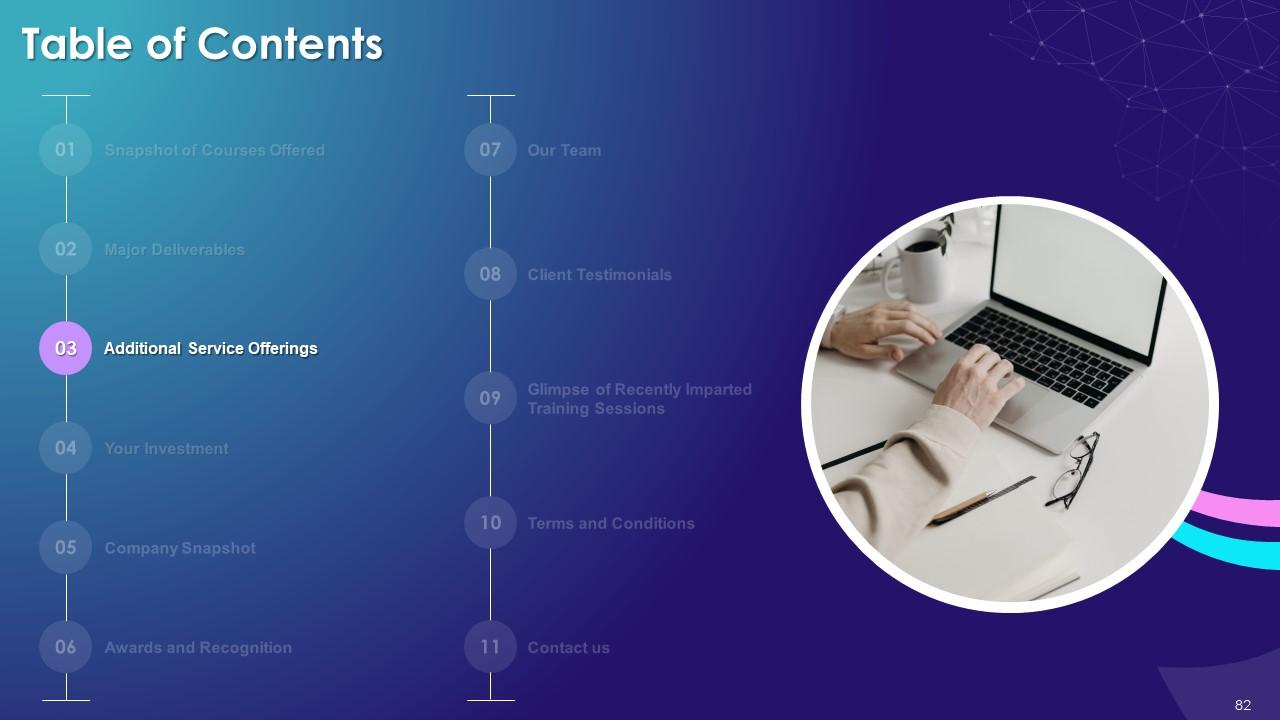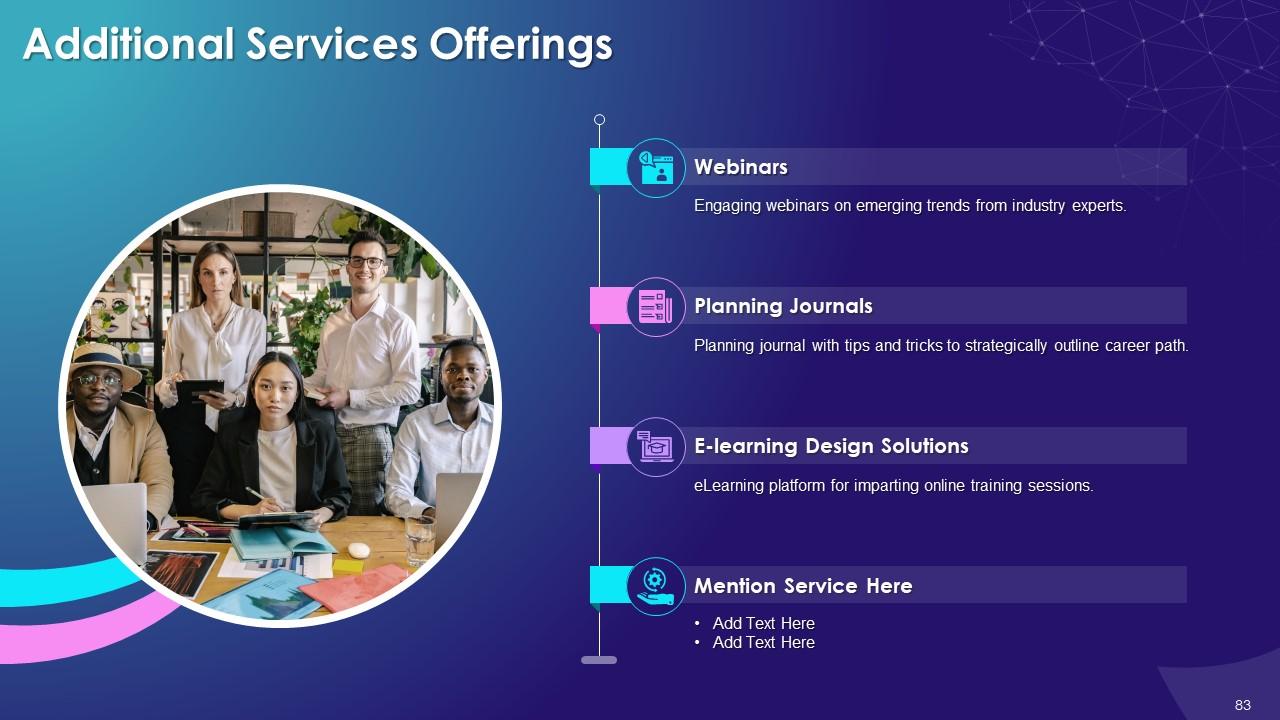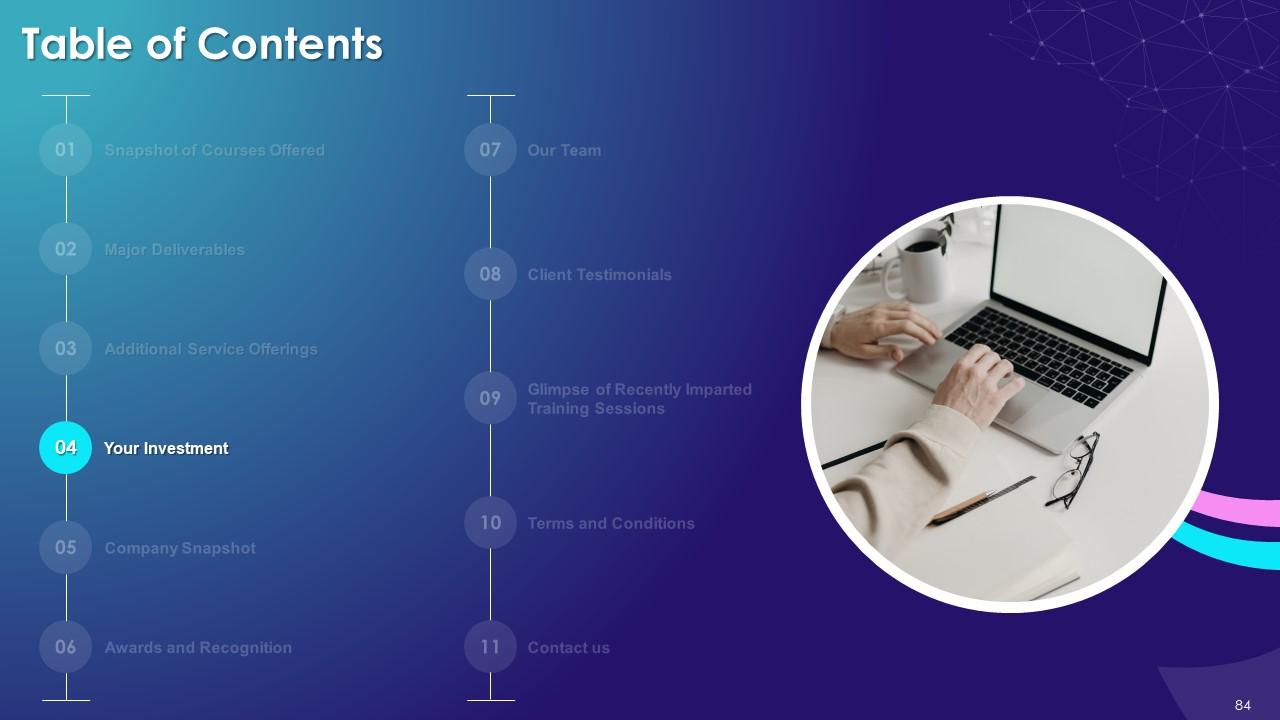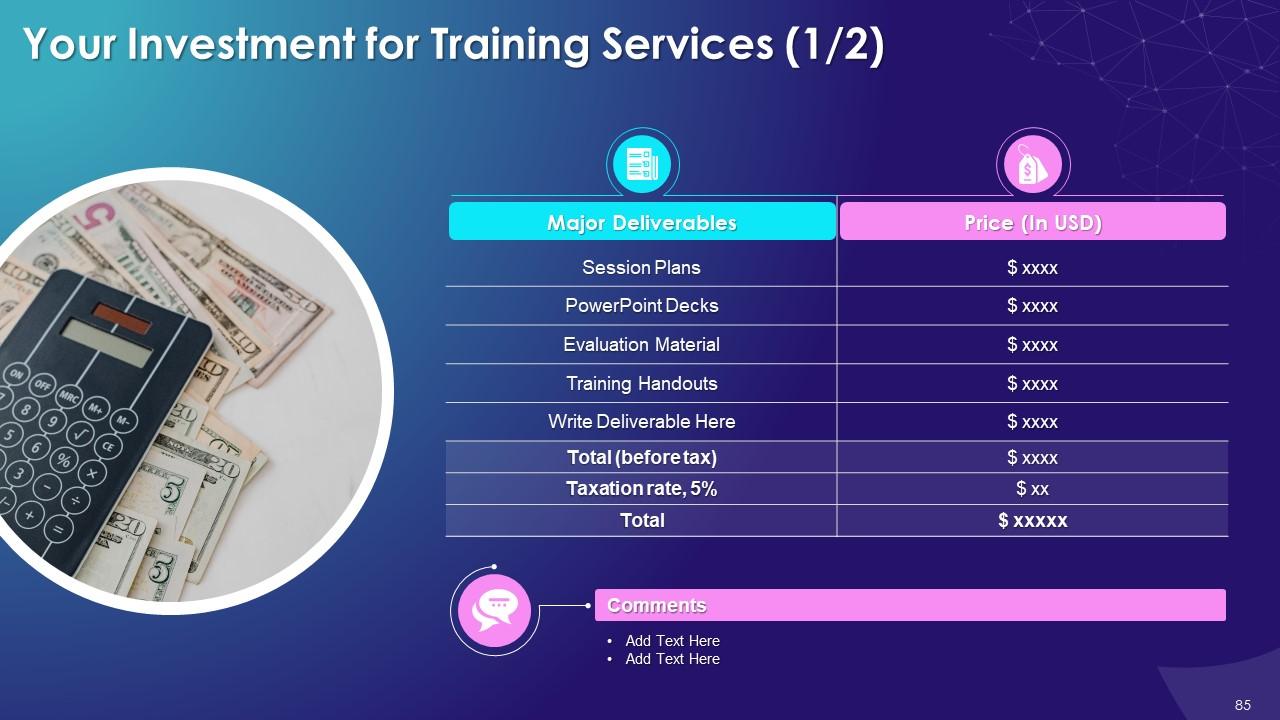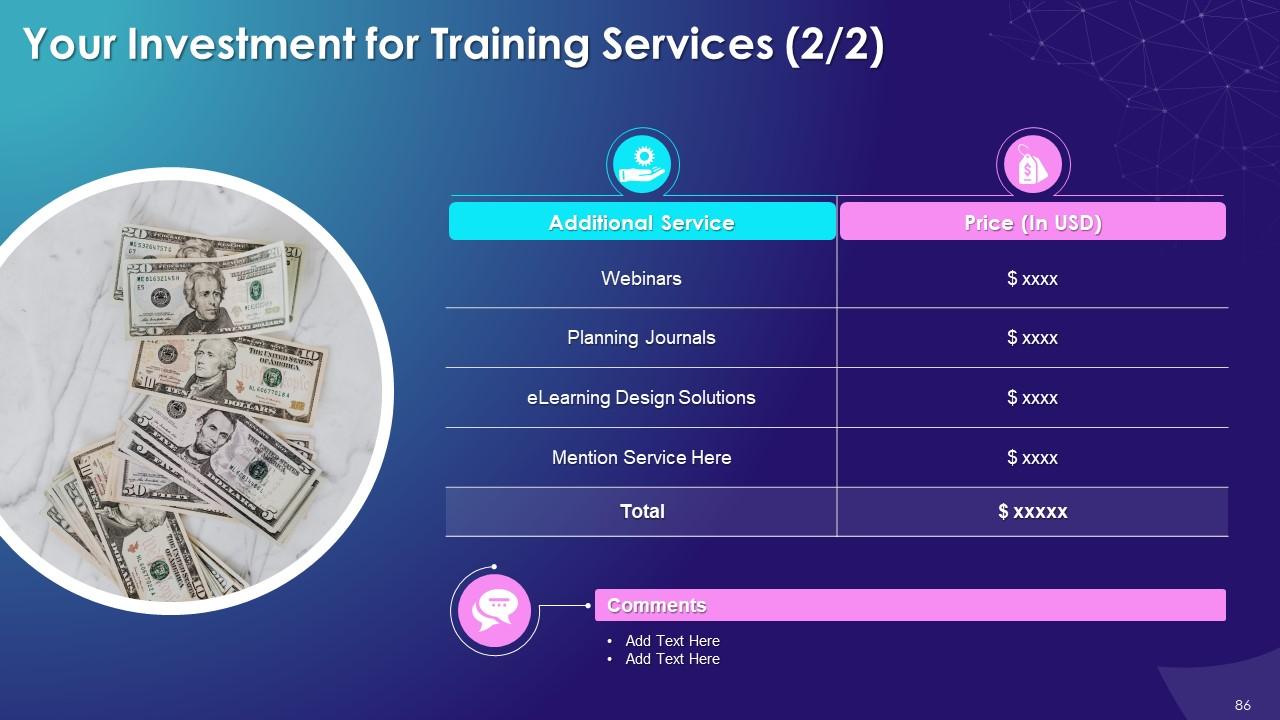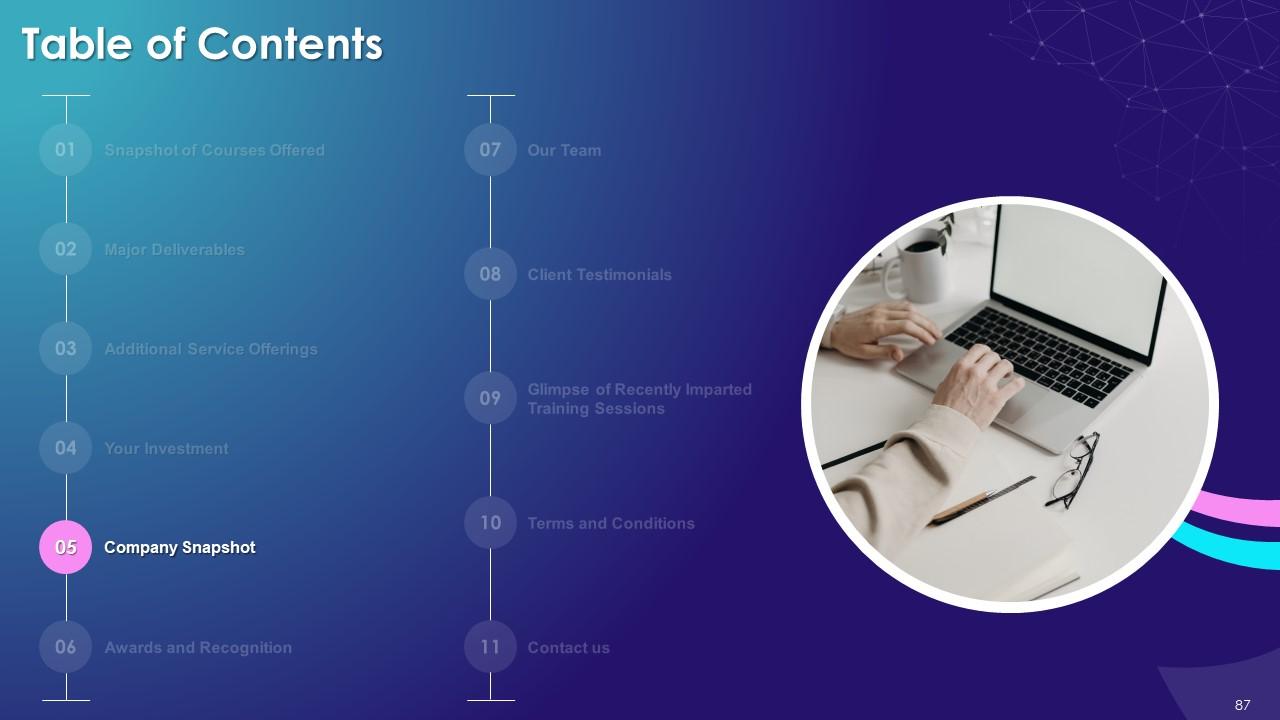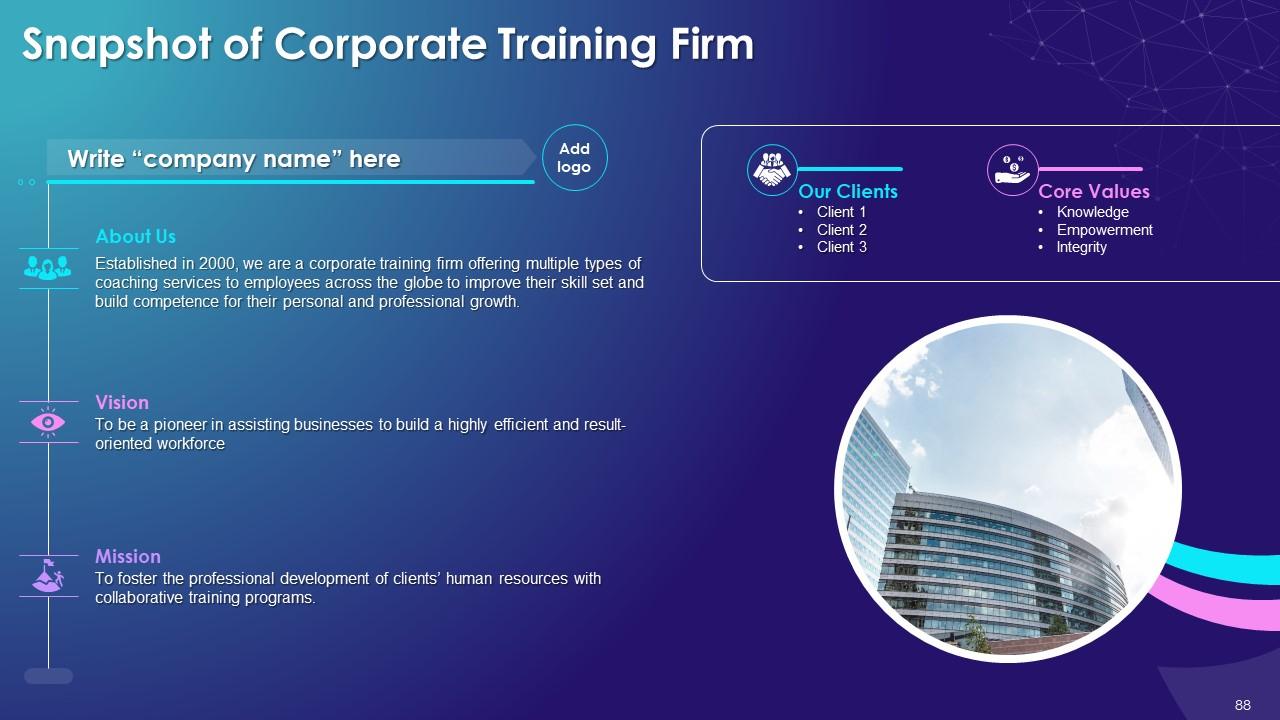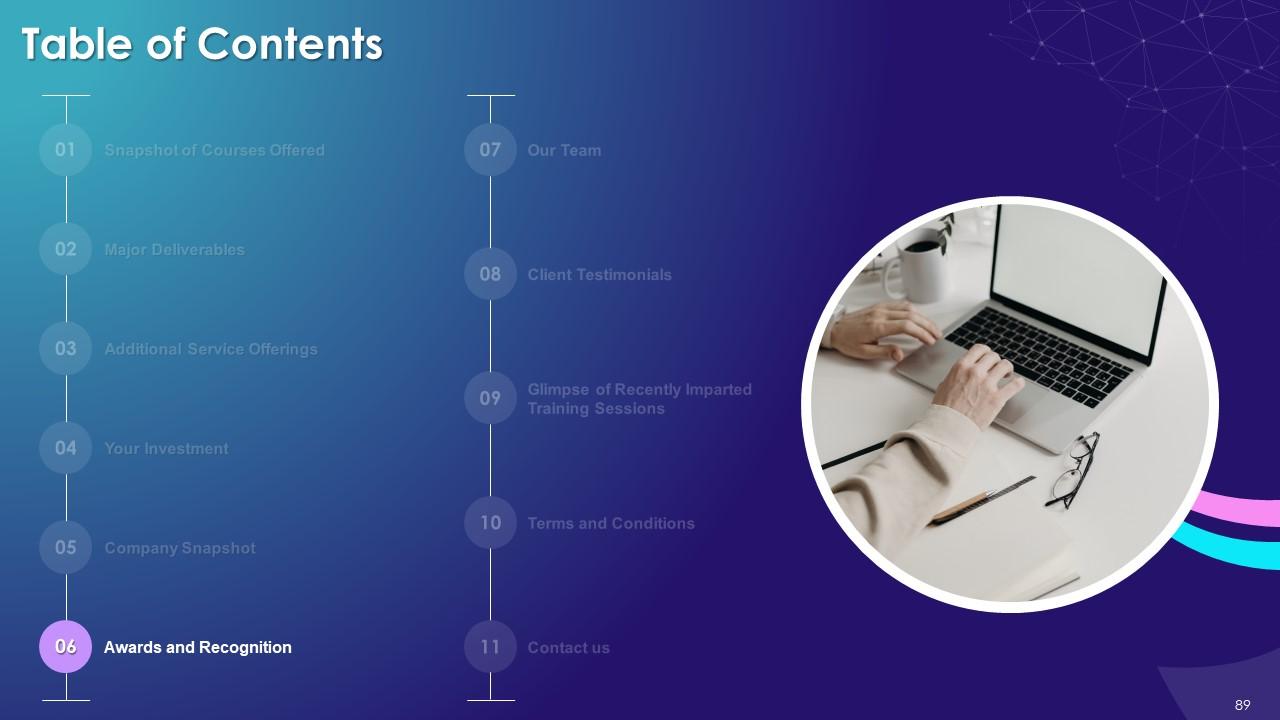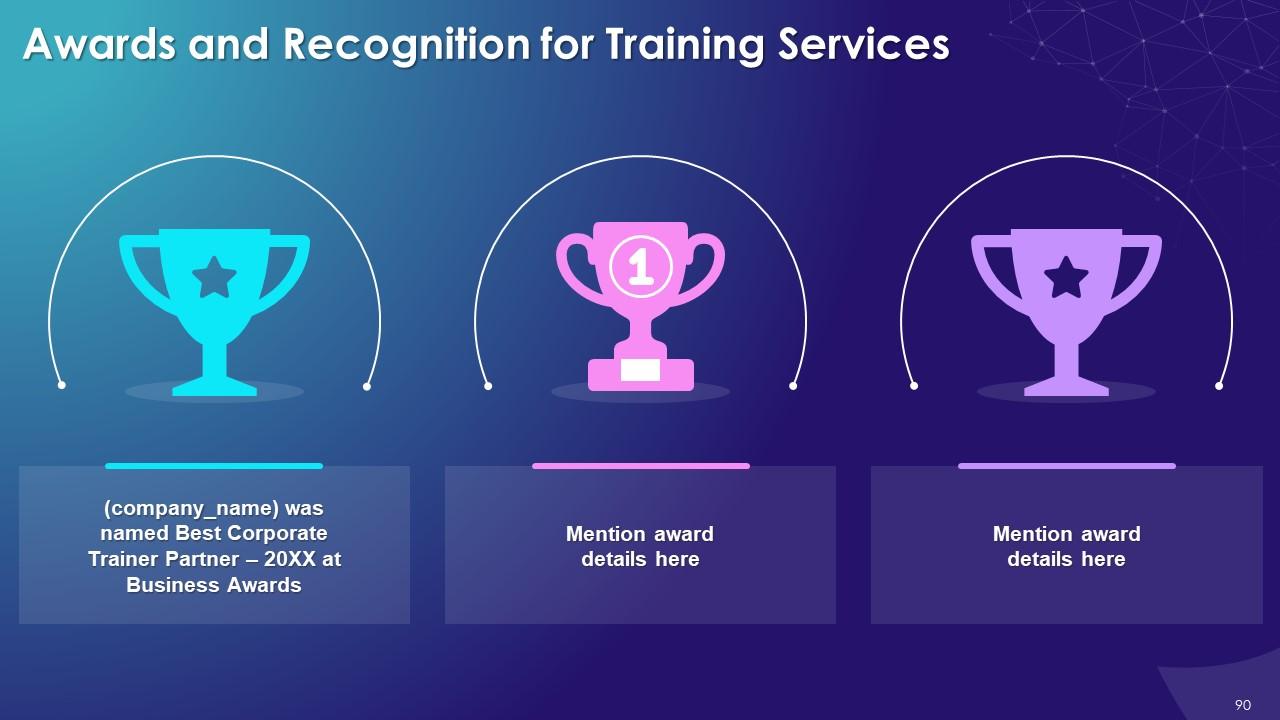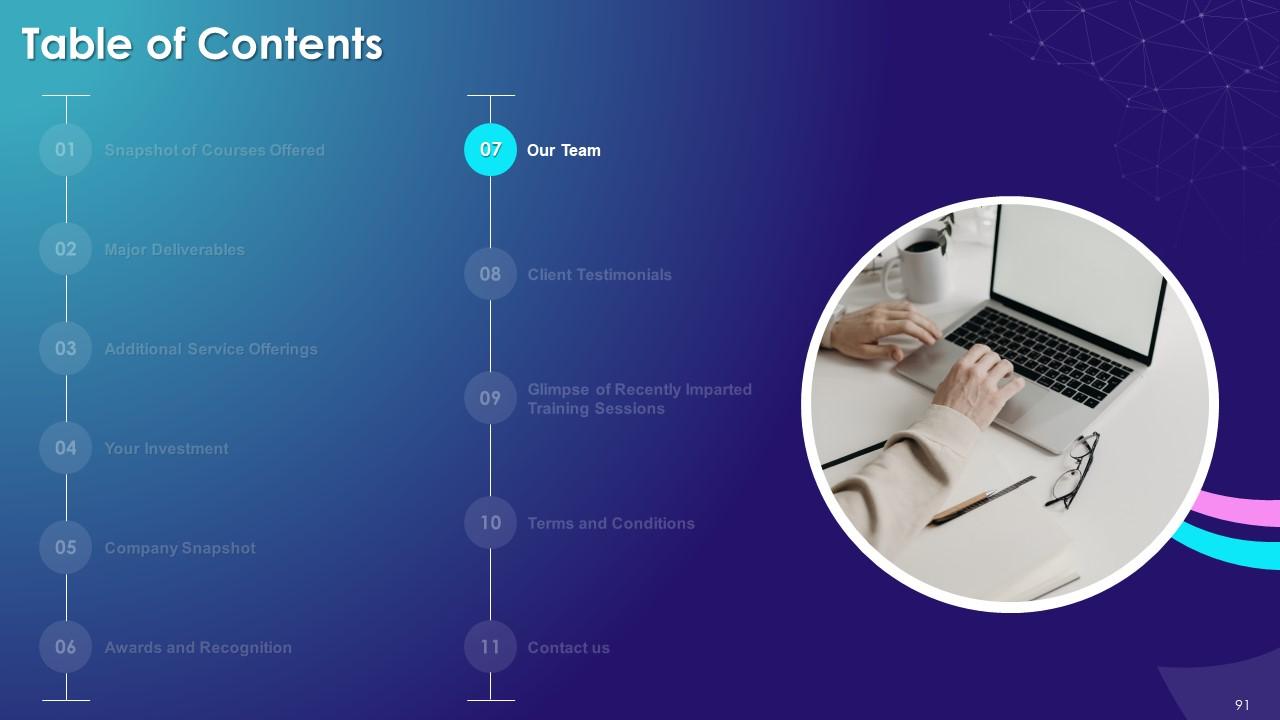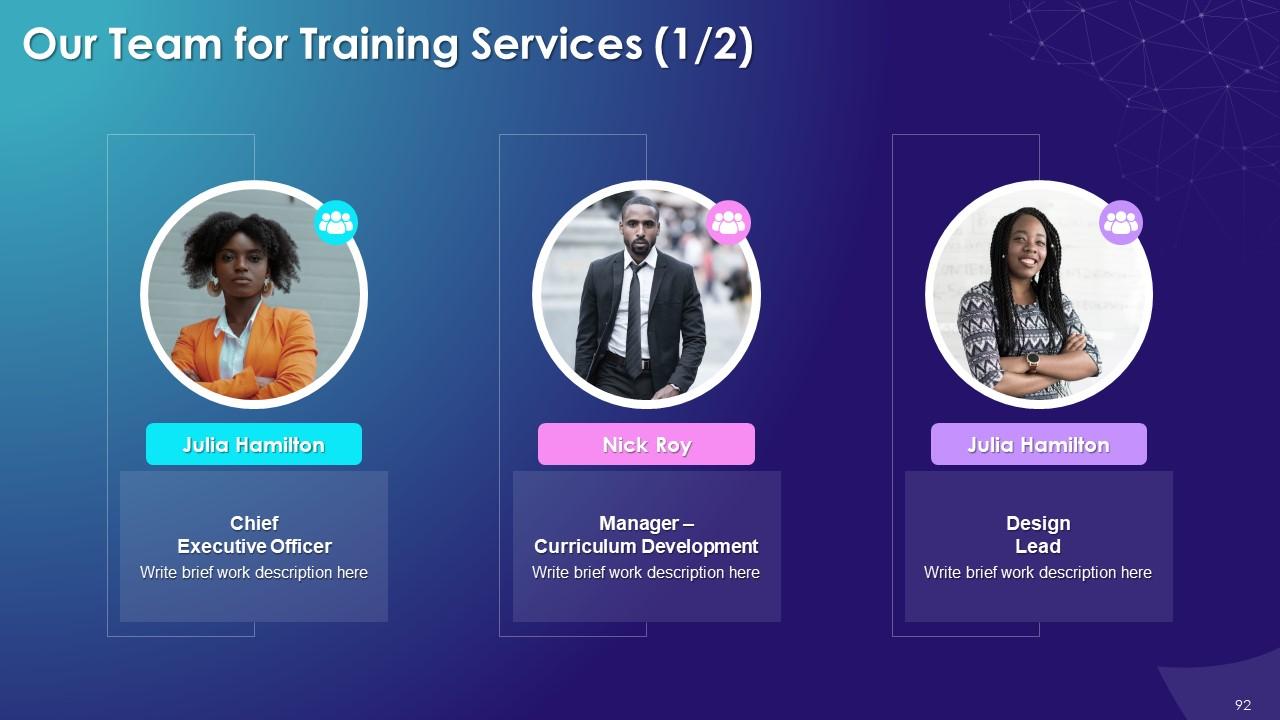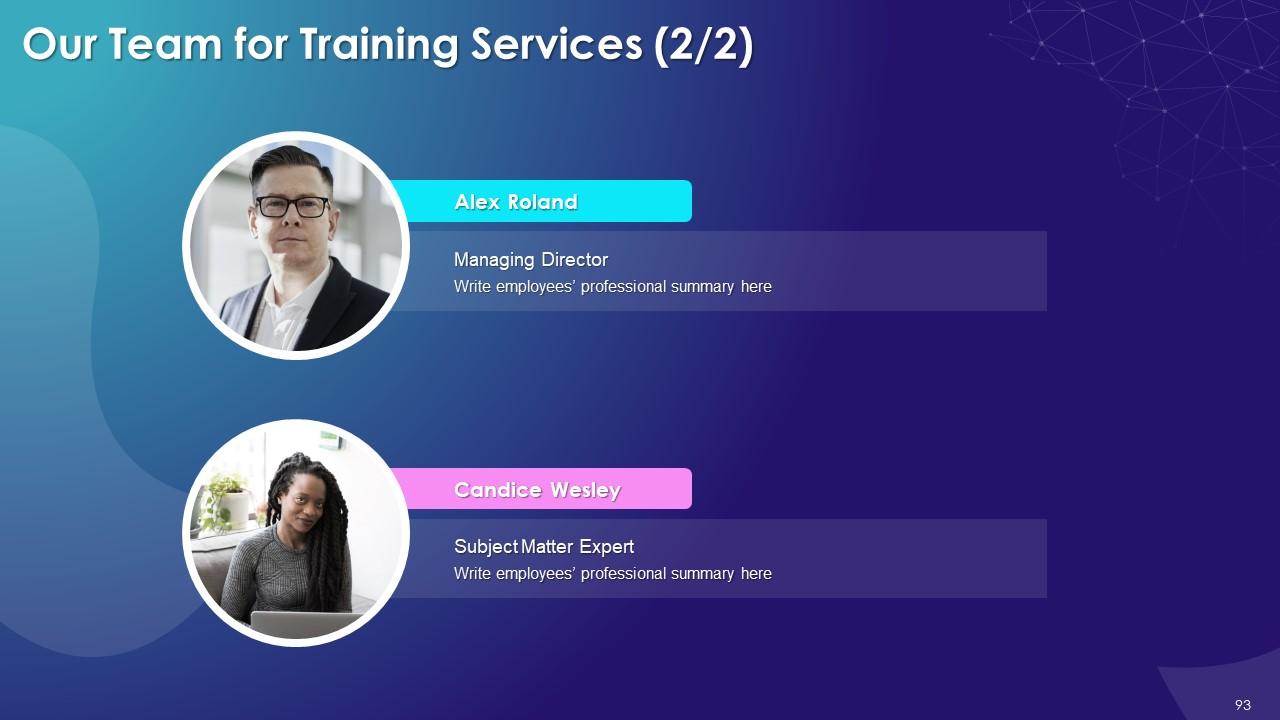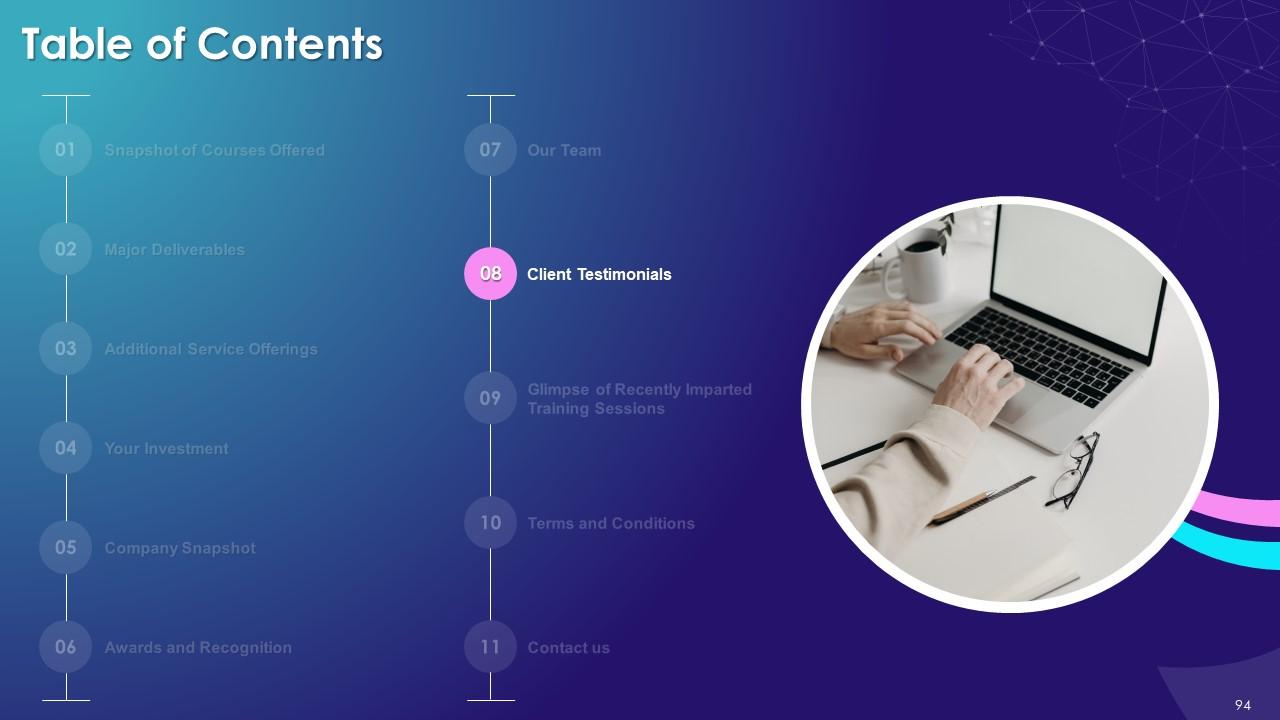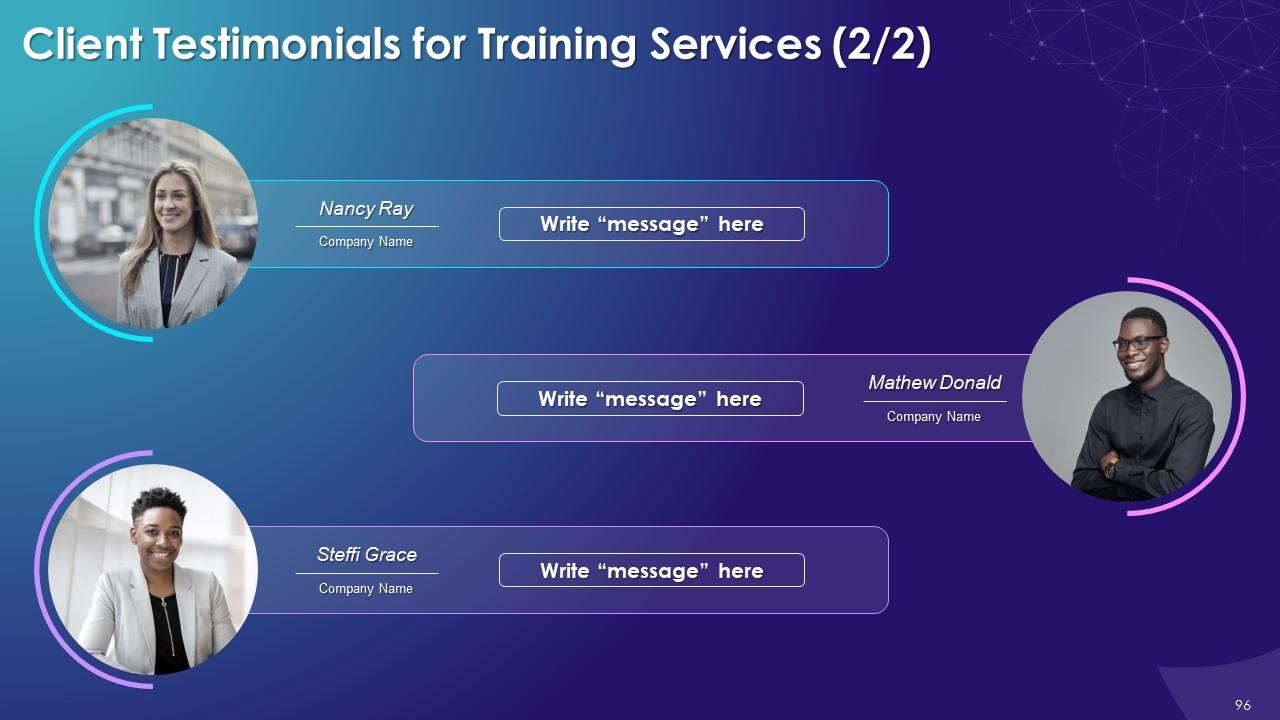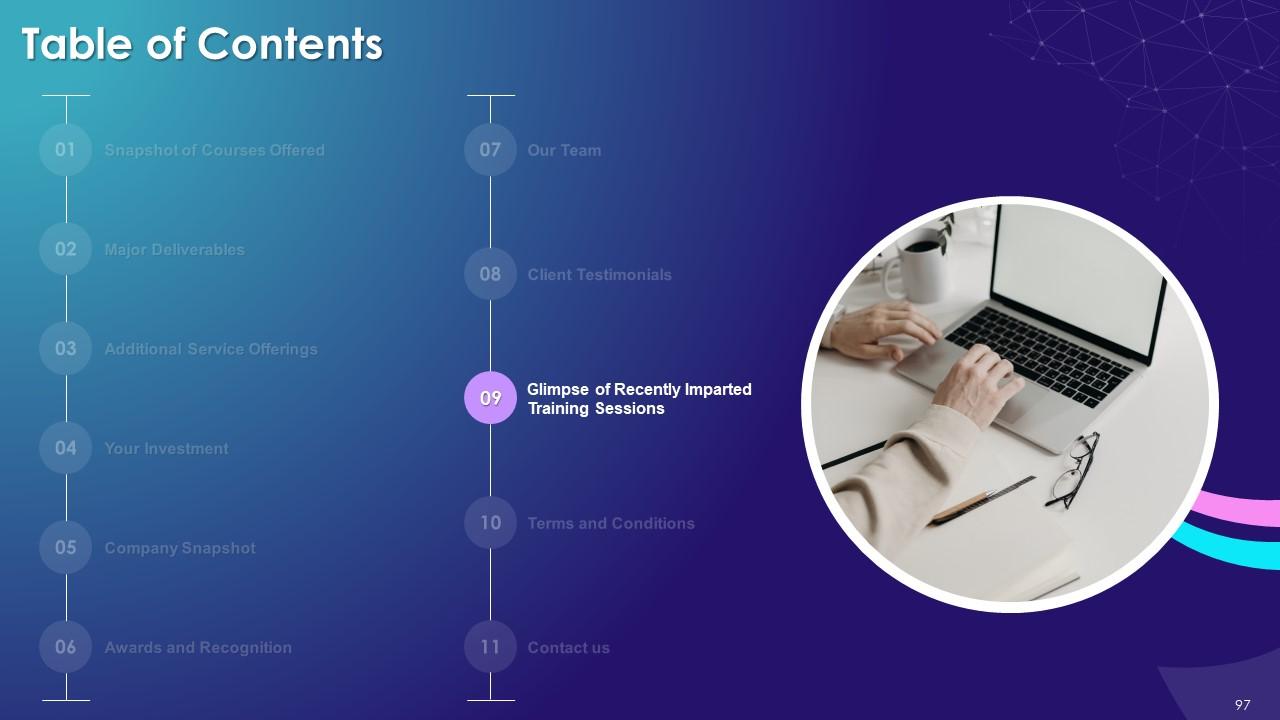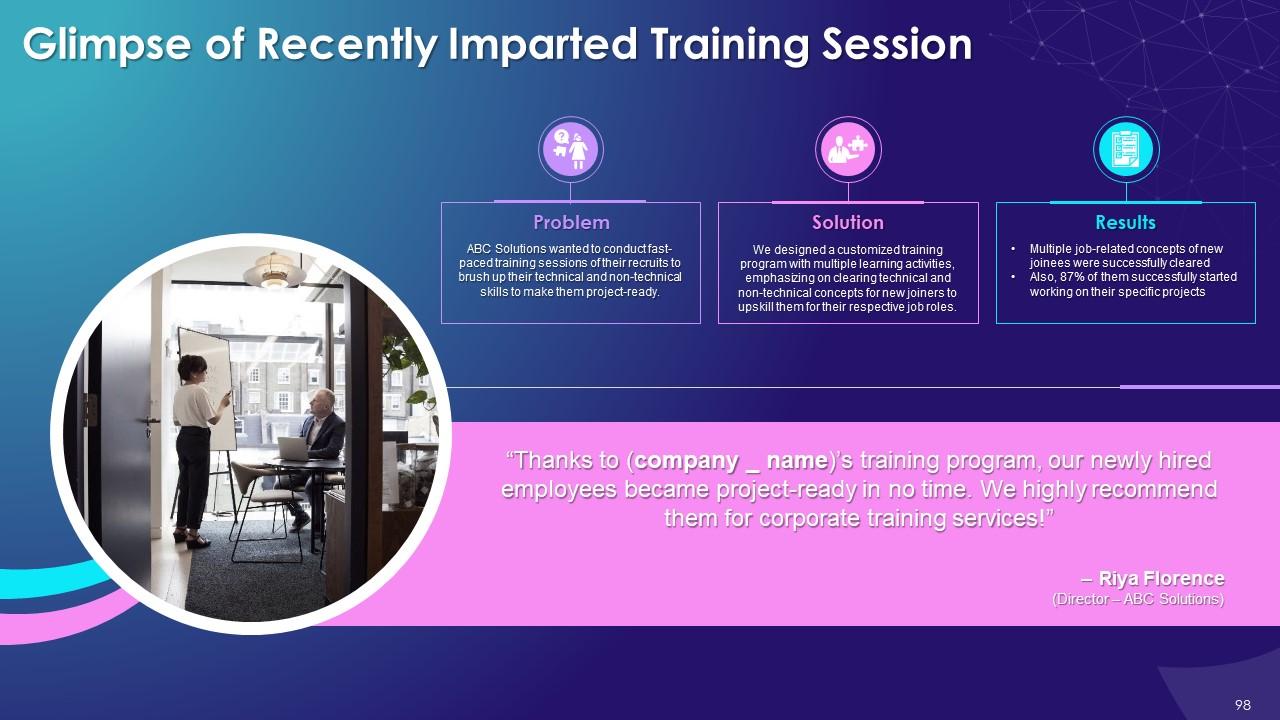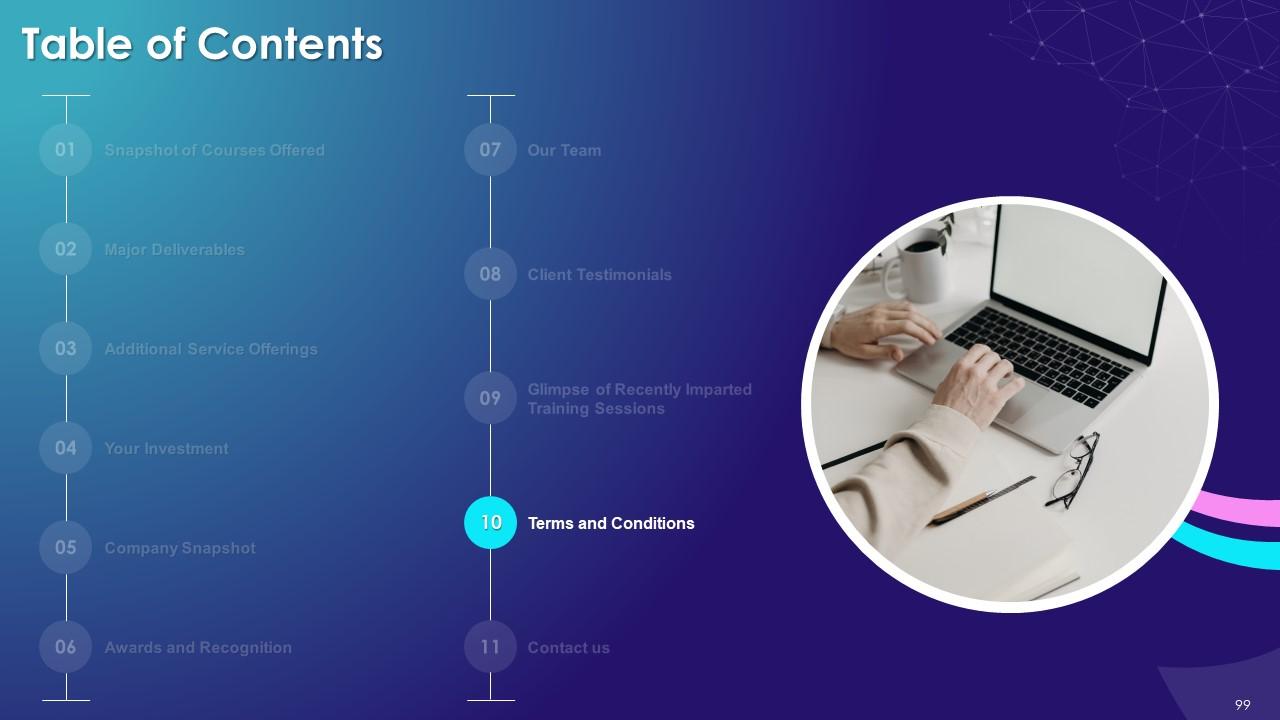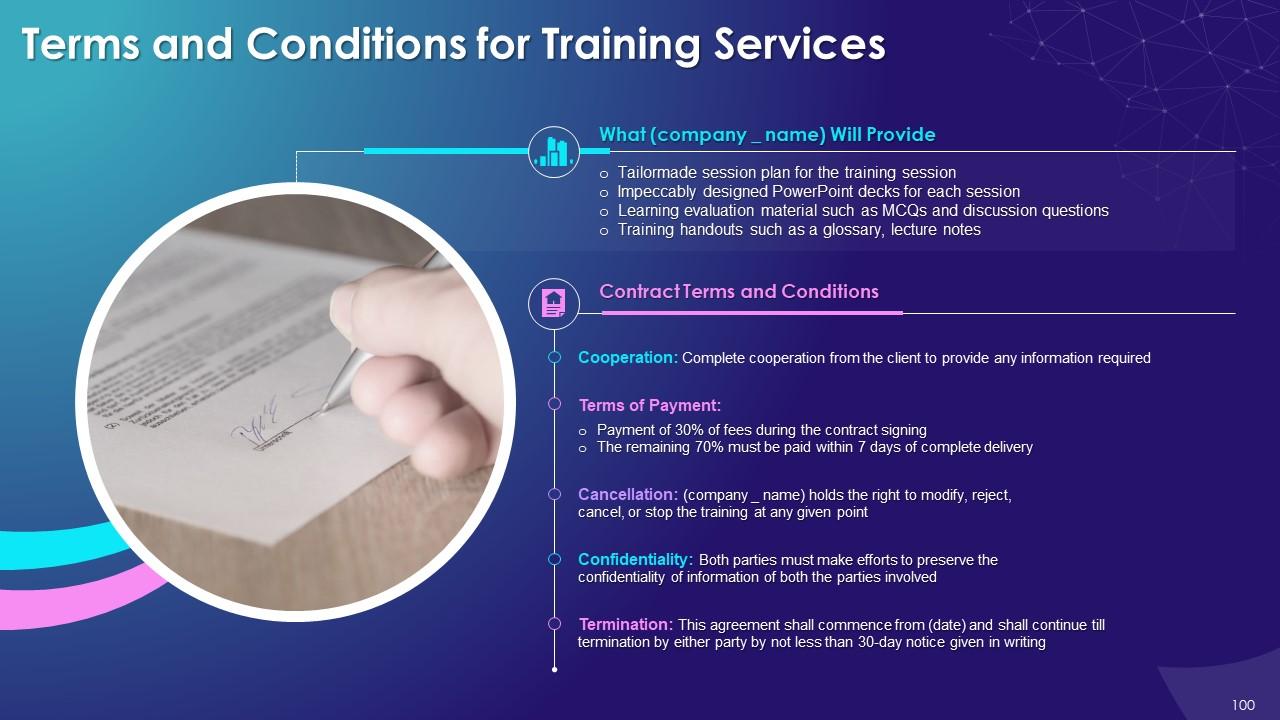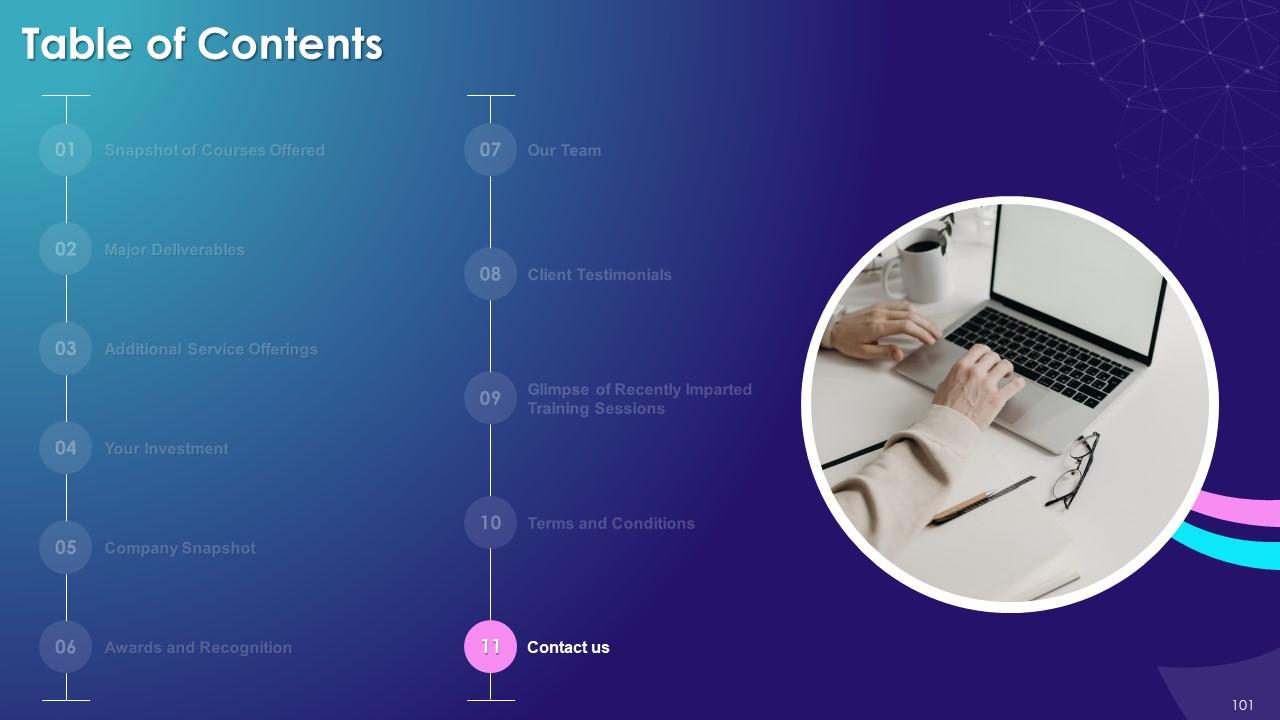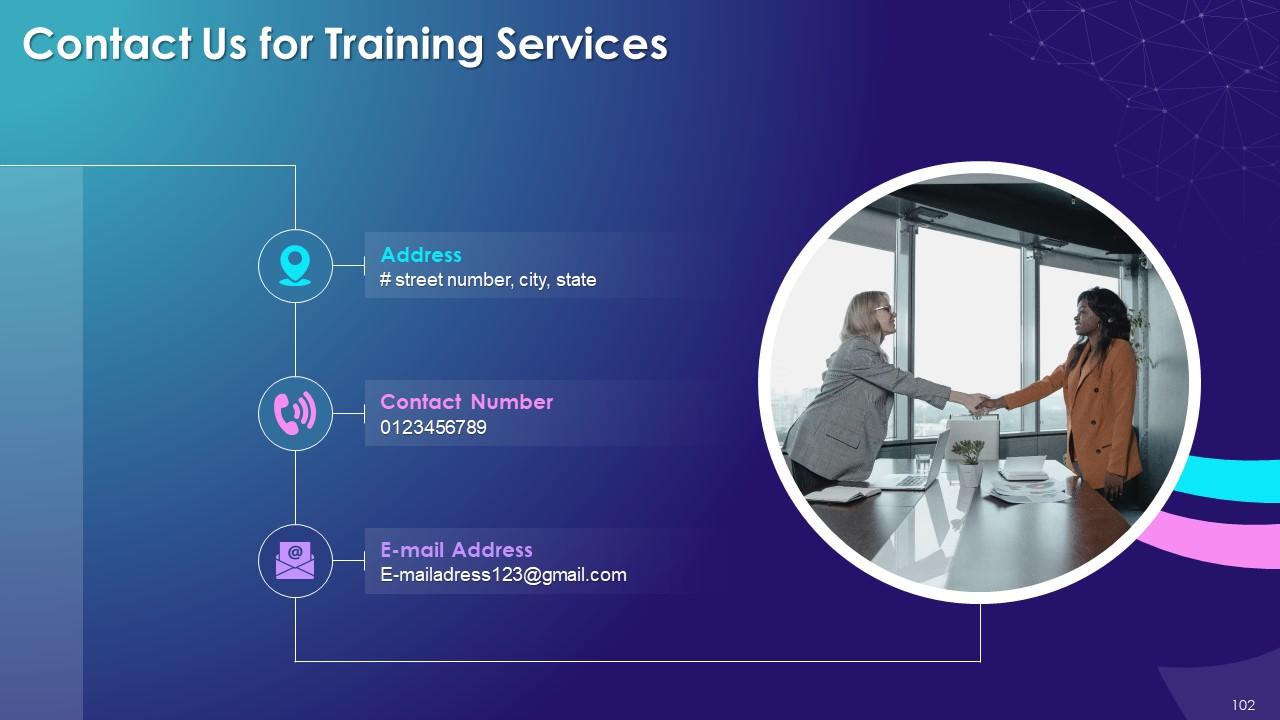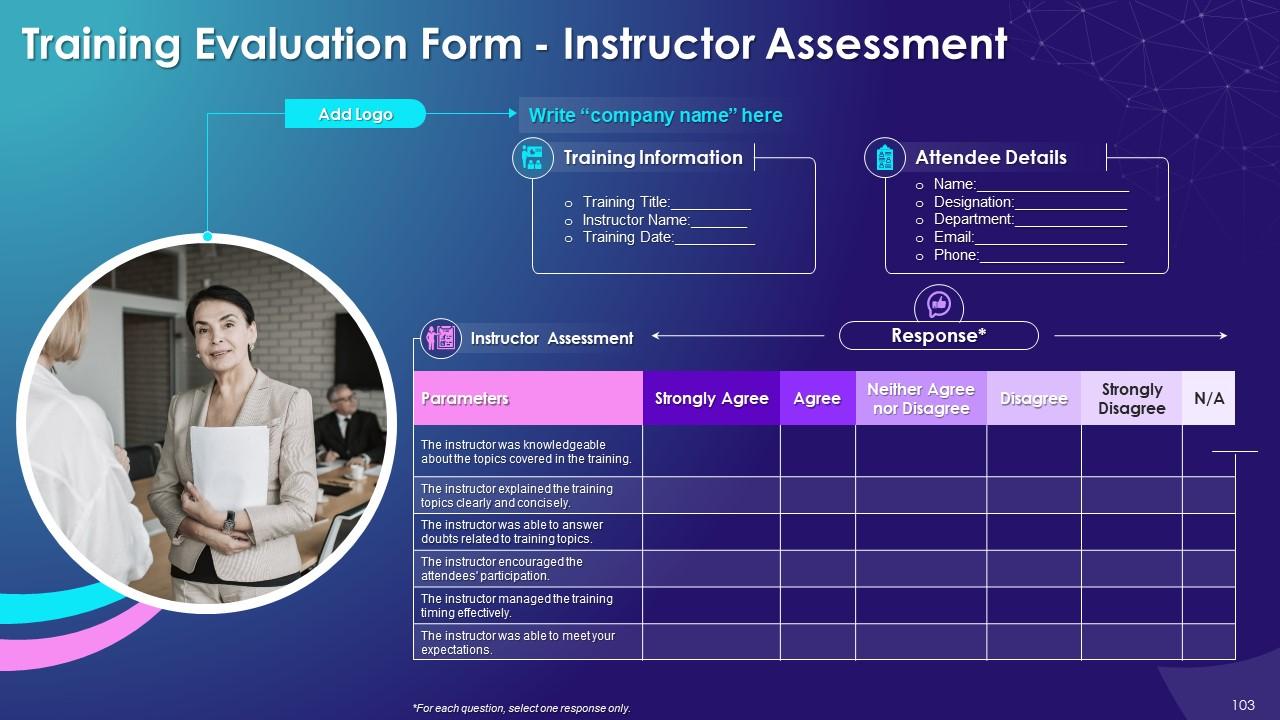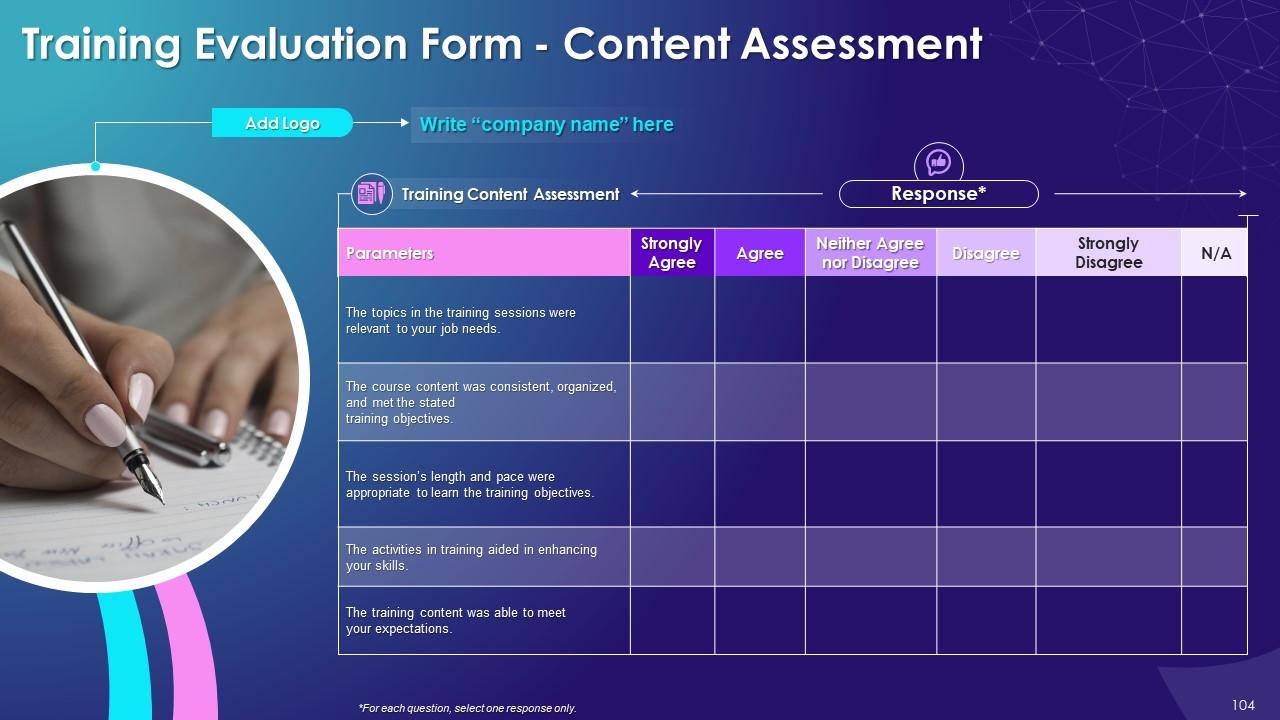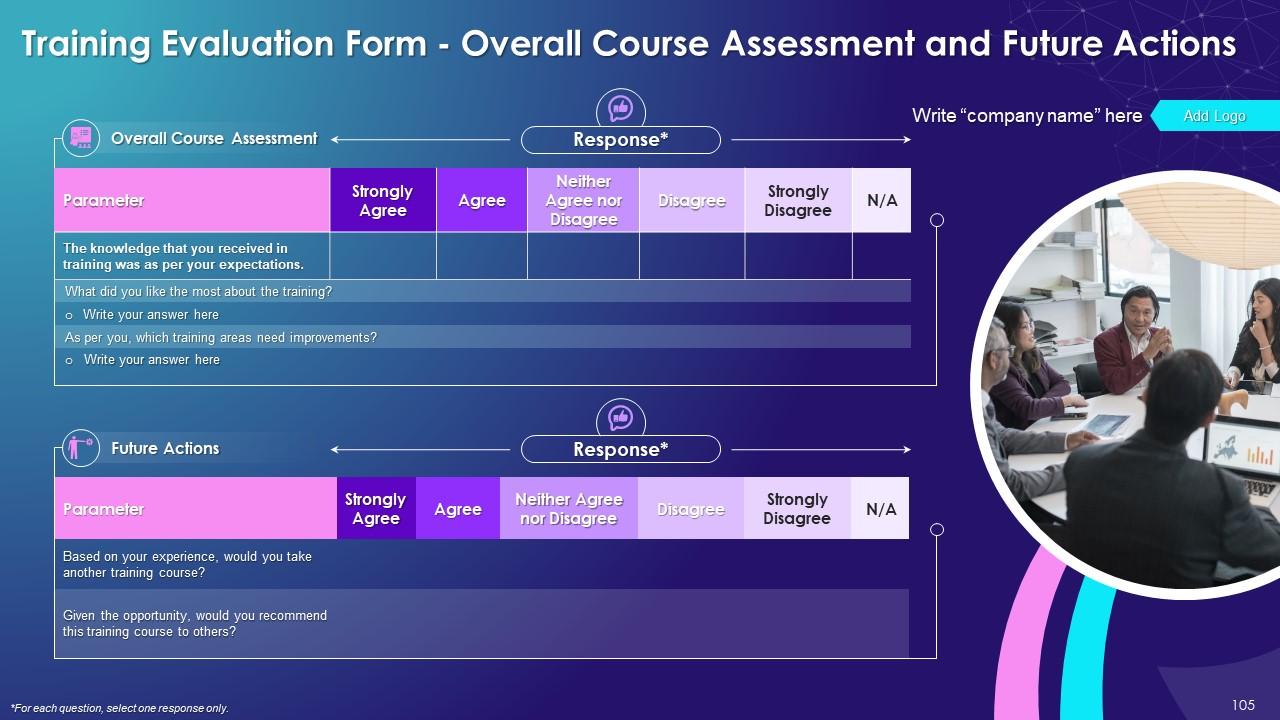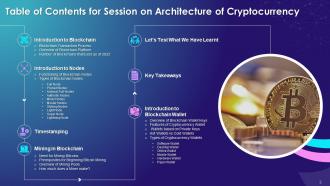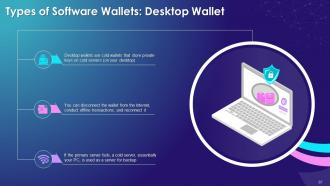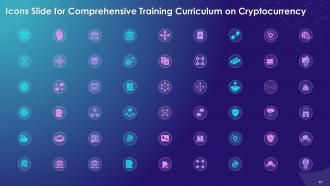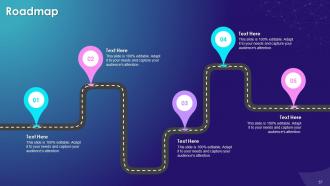Architecture Of Cryptocurrency Training Module On Blockchain Technology Application Training Ppt
This PowerPoint training deck covers the architecture of cryptocurrency in-depth explaining the blockchain, an essential technology for cryptocurrencies. It contains PPT slides on the functioning and types of blockchain nodes full, pruned, archival full, authority, miner, master, staking, light, super, and lightning node. It also covers the concept of timestamping and mining in the blockchain. Further, it includes details of blockchain wallet types hot wallets, cold wallets, and cryptocurrency wallets software, desktop, online, mobile, hardware, and paper wallet. The PowerPoint module also contains discussion questions and MCQs related to the topic to make the training session interactive. Further, it includes additional slides on about us, vision, mission, goal, 30-60-90 days plan, timeline, roadmap, training completion certificate, energizer activities, detailed client proposal, and training assessment form.
This PowerPoint training deck covers the architecture of cryptocurrency in-depth explaining the blockchain, an essential te..
- Google Slides is a new FREE Presentation software from Google.
- All our content is 100% compatible with Google Slides.
- Just download our designs, and upload them to Google Slides and they will work automatically.
- Amaze your audience with SlideTeam and Google Slides.
-
Want Changes to This PPT Slide? Check out our Presentation Design Services
- WideScreen Aspect ratio is becoming a very popular format. When you download this product, the downloaded ZIP will contain this product in both standard and widescreen format.
-

- Some older products that we have may only be in standard format, but they can easily be converted to widescreen.
- To do this, please open the SlideTeam product in Powerpoint, and go to
- Design ( On the top bar) -> Page Setup -> and select "On-screen Show (16:9)” in the drop down for "Slides Sized for".
- The slide or theme will change to widescreen, and all graphics will adjust automatically. You can similarly convert our content to any other desired screen aspect ratio.
Compatible With Google Slides

Get This In WideScreen
You must be logged in to download this presentation.
PowerPoint presentation slides
Presenting Training Session on Architecture of Cryptocurrency. This presentation deck contains 105 well-researched and uniquely designed slides. These slides are 100 percent made in PowerPoint and are compatible with all screen types and monitors. They also support Google Slides. Premium Customer Support available. Suitable for use by managers, employees, and organizations. These slides are easily customizable. You can edit the color, text, icon, and font size to suit your requirements.
People who downloaded this PowerPoint presentation also viewed the following :
Content of this Powerpoint Presentation
Slide 4
This slide gives the definition of blockchain. It is a shared database that differs from traditional databases in storing data; blockchains save data in blocks that are then connected via encryption.
Slide 5
This slide lists the step-by-step blockchain transaction process. We see how all the processes work from creating a transaction to it finally being completed.
Slide 6
This slide showcases that a blockchain platform enables users and developers to create unique applications using the current blockchain infrastructure. These applications can be smart contracts, initial coin offerings and non-fungible tokens.
Slide 7
This slide states that the number of active blockchains is increasing at an exponential rate. There are about 10,000 active cryptocurrencies based on blockchain as of 2022, with several hundred more non-crypto currency blockchains.
Slide 9
This slide depicts that a network of computers known as nodes power a blockchain, and these nodes are always sharing data on new transactions and blocks. A full node is a node that keeps a copy of the blockchain, and a light node is the one that does not store a copy of the blockchain.
Slide 10
This slide lists the functioning process of a blockchain node. Starting from performing a transaction, then managing transactions and ensuring their legitimacy. Nodes also keep track of the cryptographically connected blocks and serve as a communication channel as well.
Slide 11
This slide states that there are two sorts of nodes: full nodes and light nodes. Clients, who provide wallet functionalities, are another word for nodes, and full ones store a complete record of the blockchain's history, including all produced blocks. Light nodes, also known as SPV (Simple Payment Verification) nodes, are wallets that download the headers of blocks, saving users' hard-drive space.
Slide 12
This slide describes that full nodes are termed blockchain servers since they keep all transaction records in the blockchain. Full nodes are an integral aspect of the blockchain's governance scheme. While several governance models exist, a blockchain is upgraded or improved only once a majority of full nodes agree to it. As a result, full nodes possess voting power on the blockchain.
Slide 13
This slide states that pruned nodes have a set amount of memory for storing data. There is no limit to the number of blocks that may be added to the blockchain, but there is a limitation on the number of blocks that a pruned full node can store.
Slide 14
This slide describes that archival full nodes are the most frequently found full nodes in a blockchain, and they store the entire blockchain in its database. The only significant difference between an archived full node and a pruned full node is the amount of RAM available.
Slide 15
This slide states that In a public Blockchain, anyone may join the network and then become a node by syncing their system with the blockchain data. However, in many circumstances, data access must be preserved. In such a circumstance, the authorized entities need to regulate the blockchain. This is where authority nodes are used. The name of these nodes derives from the fact that they govern or are responsible for approving additional nodes to join the blockchain network.
Slide 16
This slide describes that some consensus techniques, like Proof-of-Work, require nodes to solve complicated mathematical problems to validate a network transaction. Such validation activities need a substantial amount of computing power and energy usage. As a result, miner nodes are nodes established exclusively to carry out the mining operation.
Slide 17
This slide states that masternodes are full nodes with the ability to maintain the Blockchain ledger and validate transactions but cannot add new blocks to the Blockchain.
Slide 18
This slide describes that staking is the process of choosing a node based on predetermined parameters such as coinage or network time spent. The selected node can complete a transaction and get a reward, and Staking nodes do not require a large amount of processing power.
Slide 19
This slide states that a light node saves and provides only the data required to support daily activities or quicker transactions. They do not validate the blocks and only save the Block headers. Simplified Payment Verification nodes (SPV nodes) are another name for these.
Slide 20
This slide describes that Super Nodes are created to carry out specific activities in Blockchains. A super node, for example, is responsible for applying a blockchain protocol modification or maintaining the rules governing a specific blockchain.
Slide 21
This slide states that Lighting Nodes establish a secondary network with a user and push transactions to the main blockchain. This enables quick transactions, while lowering transaction costs due to reduced network congestion.
Slide 22
This slide showcases that the timestamp is a short piece of data saved in each block as a unique serial number, and its primary role is to indicate when the block was mined and confirmed by the blockchain network.
Slide 24
The purpose of this slide is to highlight the concept of blockchain mining. It also includes details regarding blockchain mining types such as individual mining, pool mining, and cloud mining. We also study blockchain mining uses, including validating and confirming transactions, and channel safety.
Instructor’s Notes:
Blockchain Mining Types:
The types of blockchain mining are:
- Individual Mining: When an individual does blockchain mining
- Pool Mining: A group of miners collaborate to authorize a transaction
- Cloud Mining: When blockchain mining is done using cloud technology
Blockchain Mining Uses:
The uses of blockchain mining are:
- Validating Transactions: To validate the multiple transactions added to the blockchain network
- Confirming Transactions: To determine the transactions' genuineness in the blockchain
- Channel Safety: To ensure the safety of blockchain by tracking any malicious activity on the network
Slide 25
The slide states that since bitcoins are digital records, there is a danger of copying, counterfeiting, or spending the same coin twice. Mining overcomes these difficulties by making it exceedingly expensive and resource-intensive to accomplish one of these things or "hack" the network. With these things in place, it is significantly more cost-effective to join the network as a miner than to try to sabotage it.
Slide 26
The slide lists the prerequisites for bitcoin mining starting from high-performing mining computers (rigs) to membership in a mining pool.
Slide 27
The slide describes that mining pools are third-party organizations that put together groups of miners. Miners may earn a regular supply of bitcoin from the day they activate their mining equipment by working together in a pool and distributing the payment among members.
Slide 28
The slide states that the rewards for Bitcoin mining are reduced by half every four years. When bitcoin was first mined in 2009, a single block generated 50 BTC. In 2012, this reduced to 25 BTC. In 2016, this reduced to 12.5 BTC. On May 11 2020, the incentive was reduced in half again to 6.25 BTC.
Slide 30
The slide describes that a blockchain wallet is a type of cryptocurrency wallet that allows users to manage many cryptocurrencies, such as Bitcoin or Ethereum. A blockchain wallet facilitates the exchange of funds, and because transactions are cryptographically signed, their safety is ensured.
Slide 31
The slide states that a blockchain wallet has a public key and a private key. Like the email address, the public key is shared with everyone, and the private key is identical to your password that should be hidden.
Slide 32
The slide lists features of cryptocurrency wallets. It is simple to use, extremely secure; keeps transaction costs low, allows for transfers between several cryptocurrencies, and enables quick transactions across countries.
Slide 33
The slide showcases two kinds of blockchain wallets based on private keys: Hot wallets and cold wallets. Hot wallets are user-friendly and similar to our wallets for everyday transactions, and cold wallets, like vaults, are used to store cryptocurrency safely.
Slide 34
The slide lists that hot wallets are online wallets that allow cryptocurrencies to be moved instantly, whereas cold wallets are digital offline wallets in which transactions are signed offline and then shown online.
Slide 35
The slide showcases types of cryptocurrency wallets, such as software wallets, hardware wallets (which you connect to your USB drive;) and paper wallets (wherein you print your public key and private key on paper and keep these secure).
Slide 36
The slide states that a software wallet is a program downloaded onto a device, which can be a desktop or mobile device, or it can be a web-based wallet that is available online.
Slide 37
The slide describes that desktop wallets are cold wallets that store private keys on cold servers (on your desktop). You can disconnect the wallet from the Internet, conduct offline transactions, and reconnect it. If the primary server fails, a cold server, essentially your PC, is used as a server for backup.
Instructor Notes:
These wallets can be downloaded on any desktop but can only be accessed from the system on which they are installed, so ensure that the desktop or machine on that you are downloading the desktop wallet is safe (has a backup and is in a safe place) and that you are maintaining the hardware, in general, ensuring that your machine stays secure as it contains financial assets now. Electrum, Exodus and Bitcoin Core are a few examples of desktop wallets
Slide 38
The slide documents that online wallets are types of Internet-based hot wallets. Users have the advantage of accessing their wallets from any device. It may be a tablet or a desktop, or even a mobile browser. A third party handles the private keys, which are handled online.
Instructor Notes:
Metamask and Coinbase are examples of online wallets
Slide 39
The slide lists that Mobile wallets are online wallets designed for usage and accessibility exclusively on mobile phones. These wallets provide an easy-to-use interface that allows transactions to be conducted quickly. Mycelium is an example of mobile wallets.
Slide 40
The slide states that a hardware wallet is a cold storage device, similar to a USB drive, that holds the user's private key in a protected hardware device. These wallets resemble portable gadgets that may be linked to a computer (plugged in). As previously stated, they are less vulnerable to malicious cyber-attacks and are hack-proof. Some leading hardware wallets in the market are Ledger, Trezor, and KeepKey.
Slide 41
The slide states that a paper wallet that stores cryptocurrency offline. This wallet is a printed piece of paper that includes both your private and public keys, which can be accessed using a QR code. Due to their safety, these are frequently used to hold large amounts of cryptocurrency. Bitcoin Paper Wallet and MyEtherWallet are two popular paper wallets
Slide 60 to 74
These slides depict energizer activities to engage the audience of the training session.
Slide 76 to 102
These slides include a client training proposal to showcase what the company providing corporate training can accomplish for the client.
Slide 103 to 105
These slides consist a training evaluation form for instructor, content and course assessment.
Architecture Of Cryptocurrency Training Module On Blockchain Technology Application Training Ppt with all 110 slides:
Use our Architecture Of Cryptocurrency Training Module On Blockchain Technology Application Training Ppt to effectively help you save your valuable time. They are readymade to fit into any presentation structure.
-
The content is very helpful from business point of view.
-
“I required a slide for a board meeting and was so satisfied with the final result !! So much went into designing the slide and the communication was amazing! Can’t wait to have my next slide!”


